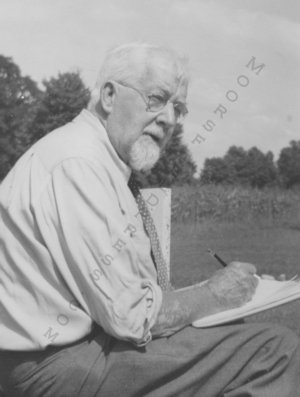
The McLellan Cemetery Transcriptions
Starting around 1917, Hugh McLellan (above) gained an interest in preserving the inscriptions found on gravestones in municipal and family cemeteries around Champlain Town, Franklin County (Vermont) and Lower Quebec.
During the height of the Great Depression in the 1930s, Hugh and his son Woody started to randomly transcribe stones in local cemeteries. Hugh's brother Malcolm also helped. Hugh noted that many graveyards were being plowed under in Canada and in Champlain by new farmers who did not know of the 100 year old family cemeteries on their properties. Today, this concern is even more pertinent as many of the older farmers who knew of cemeterys on their properties are quickly passing away. Buyers of their farms may not know that there was a cemetery on the property. This has already occurred at several family burial sites in Champlain.
Over time, the McLellans expanded their transcription area to include cemeteries within a 100 mile radius from Champlain (including some cemeteries in Lower Quebec). By 1941, the McLellans had spent 10 years transcribing cemetery stones. Hugh noted that they had completely copied 110 graveyards, 89 partial graveyards and a total of 8,423 stones. In 1950, Woody's wife Hulda started to assist the McLellans as they tried to complete the remaining cemetery transcriptions.
Today, many of stones the McLellans transcribed 90 years ago are faded by acid-rain, broken, fallen down and buried, placed in piles, used as stepping stones or even thrown down the embankment of rivers or streams. The McLellan cemetery transcriptions serve as a permanent archive of these stones.
Towards the end of Woody McLellan's life, he made sure that his cemetery transcriptions were placed in the proper institutions. The Vermont cemetery records were given to the St. Albans Historical Society in St. Albans, Vermont around 1980. Transcriptions for stones in New York were given to the Plattsburgh Public Library, Special Collection at Feinberg Library, SUNY-Plattsburgh and other places.
The McLellan cemetery transcriptions have been supplemented with more recent transcriptions by Clyde Rabideau Sr. that cover additional burials into the 2000s.
McLellan Cemetery Transcriptions - SUNY-Plattsburgh Feinberg Library Special Collections
(Note: the print of Hugh McLellan above is owned by the website author and had been owned by his grandmother, niece of Hugh. Other copies exist. )
In the early days of Champlain’s founding, many family burying yards were established. These burying yards were placed on family farms for the necessity of quickly burying the dead. After the establishment of the Glenwood and Maple Hill municipal cemeteries in 1859, some burials in these family burying yards were relocated and the grounds abandoned. Unfortunately, there are still many of Champlain’s earliest residents in these forgotten burying yards. Knowledge of where these lost burying yards are located should help to protect them from the plow and the backhoe.
Champlain Town (now the Town of Champlain) had many burying yards in its early days. In 1799 and 1823, respectively, Pliny Moore and Ezra Thurber each gave their community a small burying yard. The Joseph King family had one or two off Route 9B at King’s Bay; Isaac Hayford had a large one on Hayford Road; Hiram Shute who lived on McCrea Road had a very large one that was used by many families living in the southern part of the town; Levi Waters, who lived in the western part of the town, had one named after him and Aaron Scott Thurber had one in Rouses Point. On the lakeshore farm of Jacques Rouse near the Chazy town line was a large cemetery used by the French-Canadian refugees. This cemetery is now completely abandoned and there is little evidence of its true size. Many others dotted the town. Starting in the 1920s, Hugh McLellan and later his son Woody and his wife Hulda, catalogued most of Champlain’s burying yards and today their records are a valuable source of genealogical information.
Establishment of Champlain’s Municipal CemeteriesStarting in the 1830s, the garden style cemetery movement, which had begun in England, was taking hold in cities and towns around the country. These newly incorporated cemeteries would soon replace the old church cemeteries and village burying yards that had been haphazardly established at the beginning of a town’s early settlement. These municipal cemeteries were laid out in the style of a park that used well-planned landscaping and architectural design to create a truly magnificent, yet pleasant, cemetery. A board or association was in charge of planning, rules and upkeep. By the 1850s and 1860s, these types of cemeteries were common throughout the country. Glenwood, Maple Hill and St. Patrick’s Cemeteries were all established in 1859 and are examples of the garden style cemetery.
Glenwood Cemetery (1859, Champlain Village) - Glenwood Cemetery was established after the site was chosen by Pliny Moore descendant John H. Whiteside. Whiteside even donated the land for the cemetery. That same year, on December 19, the Glenwood Cemetery Association was formed and the following people were named as trustees: John H. Whiteside, George V. Hoyle, W. F. Cook, Timothy Hoyle, Hiram Dudley, Freeman Nye, James Averill, David Finley and William Dodds. The grounds were dedicated August 3, 1860. The first burial in Glenwood Cemetery was that of a child named A. Hitchcock.
In 1867, New York State passed a law stating that all of the burials in the Old Burying Yard had to be moved to Glenwood Cemetery and the land sold. A notice in the Champlain Journal of September 20, 1873, declared that the burials would be moved in the coming weeks: “NOTICE: Is hereby given that on the 1st day of October 1873, the Trustees of The Glenwood Cemetery Association of Champlain will proceed to remove the remains of all persons that can then be found in THE OLD BURYING YARD at said place, and deposit them within the grounds of said Association, in accordance with Chap 575, laws of 1867. D. FINLEY, Sec’y. / Champlain, 4th, Sept., 1873”. All of the graves in the Old Burying Yard were dug up and moved to the Glenwood Cemetery for reburial. Pliny Moore and his wife were among those moved and they received a new stone obelisk. Benjamin Forsyth’s grave was never located. There are surely other graves present on the property that were unmarked in 1873 and not moved. A few small fragments of cemetery stone were recently found when digging on the land.
The removal of burials was not a pleasant task. Most people were buried in wooden coffins and after as many as 73 years many of these boxes would have degraded. In 1931, Egbert C. Everest of Plattsburgh reminisesced about the removal of bodies to Glenwood: “On the death of Pliny Moore Jr. [1799-1872] acquired 1-3/4 of fine garden land across the road from the ancient cemetery. On removal of remains - skeletons mostly - to beautiful Glenwood Cemetery, Aunt Polly Bowron’s [1809-1854] casket was so heavy it took eight men to lift it. Body was found to be petrified - turned to stone. Mother told me so, also my Aunt Elmira, and to make certain, the daughter of Aunt Polly, Mrs. B. F. Woodward admitted the same to me a few years since.”
In 1874, the burying yard land was sold to Timothy Hoyle and in 1895, his widow sold it to Dr. James Hackett. In 1905, Alexander McGregor owned the house before selling it again to the Hacketts who bought it in 1913. In 1919 the Hacketts sold the house to Oscar and Blandine Bredenberg. Oscar was the Plant Manager of the Sheridan Iron Works for many years and his brother Henrik operated a ski factory in the village. The Bredenbergs lived in the house for 45 years before selling it to John and Geraldine Rowe in 1964.
It should be noted that the Forsyth historic plaque was originally dedicated in 1938 at the entrance to Glenwood Cemetery. This was because Blandine Bredenberg, Oscar’s wife, did not want the plaque in her front yard. Hugh knew of this error but could do nothing. The plaque stood at Glenwood Cemetery until about the year 2000 when it was moved by the Rowes to its correct location.
A number of people buried here served in the Revolutionary War, War of 1812 and Civil War. Those who served in the Revolutionary War include Pliny Moore, Dan Beaumont and Capt. John Corbin who was born in 1729 and whose daughter married Pliny Moore. This author is related to John Corbin and it is an honor to have eight generations of family interred in this cemetery. In the War of 1812, those serving include Aurelius Beaumont, Charles Bedlow (Bedloe), Uriah Bedlow, Abraham Brinkerhoff, William J. Churchill, Moses Cross, Josiah Corbin, Lucas Doolittle, Freeman Nye, Lorenzo Kellogg, Noadiah Moore and Joel Savage served, among others. In the Civil War, there were James Hubbell, Alfred Lapage (not found) and F. H. Pollard.
Maple Hill Cemetery (1858, Rouses Point) - Maple Hill Cemetery Association was organized on December 20, 1858 and the original trustees were Alexander Stearns, Warren C. Fairbanks, William J. Crook, Chauncy Smith, Albert Chapman, and Benjamin Webster. The cemetery was laid out far from Rouses Point on two acres of refugee lot 52 that cost the association $129 ($3,209 today). Hannah Stearns was the first person buried in Maple Hill as she died on January 28, 1859. On March 11, 1870, New York State passed a law requiring that all of the bodies in the Old Burying Ground in Rouses Point be moved to Maple Hill. The removal of bodies occurred around May 31, 1873, when 61 year old David Leonard dug up the 64 bodies and moved them here. He received cemetery lot #143 for his work and is now interred here with his family. Other burials around town including the ones in the A.S. Thurber Burial Yard were later moved here. Hugh McLellan did the transcriptions in 1937 and 1938 and wrote: "A large, well kept, incorporated cemetery." At the time, there were 598 stones and 882 people buried here. Today in 2010, this cemetery contains a “who’s-who” of people found on the Beers 1869 map for Rouses Point. Names include Albee, Angell, Averill, Bullis, Crook, Dupree, Fairbank, Fitch, Fox, Hayford, King, Leonard, Lewis, Moore, Oliver, Randall, Rochester, Smith, Thurber and Weeks. Jacques Rouses’ daughter, Mary (Rouse) White, married Charles White and died in 1868. She is in the White plot (#114) under the name of “grandmother”. A daughter of Mary’s married Peter Luck. Also of interest are several people who were in various wars. Daniel Coit served as a Minuteman in Massachusetts during the Revolutionary War and Captain Aaron Smith, from Athol, Mass., was at the surrender of Burgoyne in Saratoga in 1777. Gen. Ezra Thurber was in the militia in Rouses Point. Serving in the War of 1812 was Ahaz Albee, Daniel Moore 2nd, Caleb Smith and Loyal Oliver (son of Andrew Oliver). Peter Ashline served in the Civil War, among others
The Removal of Burials to the Municipal Cemeteries -After the establishment of Glenwood Cemetery and Maple Hill Cemetery in the mid-1800s, many burials in the family burying yards throughout the Town of Champlain were moved to these cemeteries. But the removals seem to have been done haphazardly. Even more confusing is whether the stones only were moved or the stones and bodies moved together. No one knows today. For example, we know that Moses Yale (died 1813), Octavia Yale (died 1823) and Joseph Fitch were buried in the Hayford Cemetery up to the 1870s but their stones are now in Maple Hill. Seven or eight stones were left in Hayford Cemetery when Hugh McLellan transcribed it. Another cemetery was at Dewey’s Tavern. We know that there are 15 stones now in Glenwood Cemetery but we do not know how many burials are here. The Pettinger family cemetery had a number of burials. All of the stones are at Glenwood Cemetery but a descendant of the Pettingers was sure that only a few burials were moved and many other burials left on the farm. The Dudley family burial ground on Dudley Road may have had the stones and bodies moved to Glenwood. The A.S. Thurber burial ground, the Old Burial Ground of Ezra Thurber (with 64 bodies present) and others seem to have been completely moved along with the bodies. The Old Burying Yard in Champlain had almost everyone moved to Glenwood except Harriet Fox (died 1838) who was moved to Maple Hill. Of course, Benjamin Forsyth is still buried in or around the grounds which is now part of two backyards and a field. The King family burial yard on Route 9B was known up to the 1860s but forgotten about soon after. No one here has been moved. The remains of these people and other people without markers in the various cemeteries will never be found except with the unfortunate help of the prowling backhoe.
Cemeteries in the Town of Champlain
transcribed by the McLellans
Champlain Village
Glenwood Cemetery (municipal cemetery)
St. Mary’s Cemetery on Prospect Street (1860)
St. Mary’s Cemetery on Church Street (1910)
Rouses Point Village
Maple Hill Cemetery (municipal cemetery)
A.S. Thurber Burying Yard (1797/1802)
Old Burial Ground (1823)
Oliver’s Ground (before 1831)
Joseph Bindon Graveyard (1832)
Weeks Graveyard (early 1800s)
St. Patrick’s Cemetery (1859)
Coopersville and Vicinity
St. Joseph’s Catholic Cemetery (1821)
Perrys Mills and Vicinity
Perrys Mills Cemetery (1840)
Murray Grave (1838)
French Protestant Cemetery
Interior to the Town of Champlain
Shute Graveyard (1802)
Hayford Burying Ground (1809)
Charles Moore Ground a.k.a. “The Honey Moore Graveyard” (c1831)
Rogers Burying Ground / D.D.T Moore Burying Ground
Dewey Family Cemetery (1812)
Sweet Cemetery (c1846)
Pettinger Family Cemetery
Dudley Farm Graveyard (later the St. Elzear Cemetery)
Western part of Champlain Town
Fry Clark Burial Site (1882)
Downs Graveyard (1826)
Baker’s Burial Ground
Waters (Watrous) Graveyard (1842)
The Lake Shore and Vicinity
The Joseph King Burying Ground (Kings Bay, c1810)
James Valentine Graveyard (Kings Bay)
Rochester Family Cemetery (Point au Fer)
Refugee Burying Ground, a.k.a. Wiley’s Point North, the “Ashline Cemetery” or the “Catholic Cemetery”
Wiley’s Point South (Chazy)
Point au Fer Revolutionary War Burial Site (1774-1796)
A small sample of the 8,400 plus gravestone inscriptions made by the McLellans were printed in the
Moorsfield Antiquarian in all eight publications from 1937 to 1938.
They are presented here.
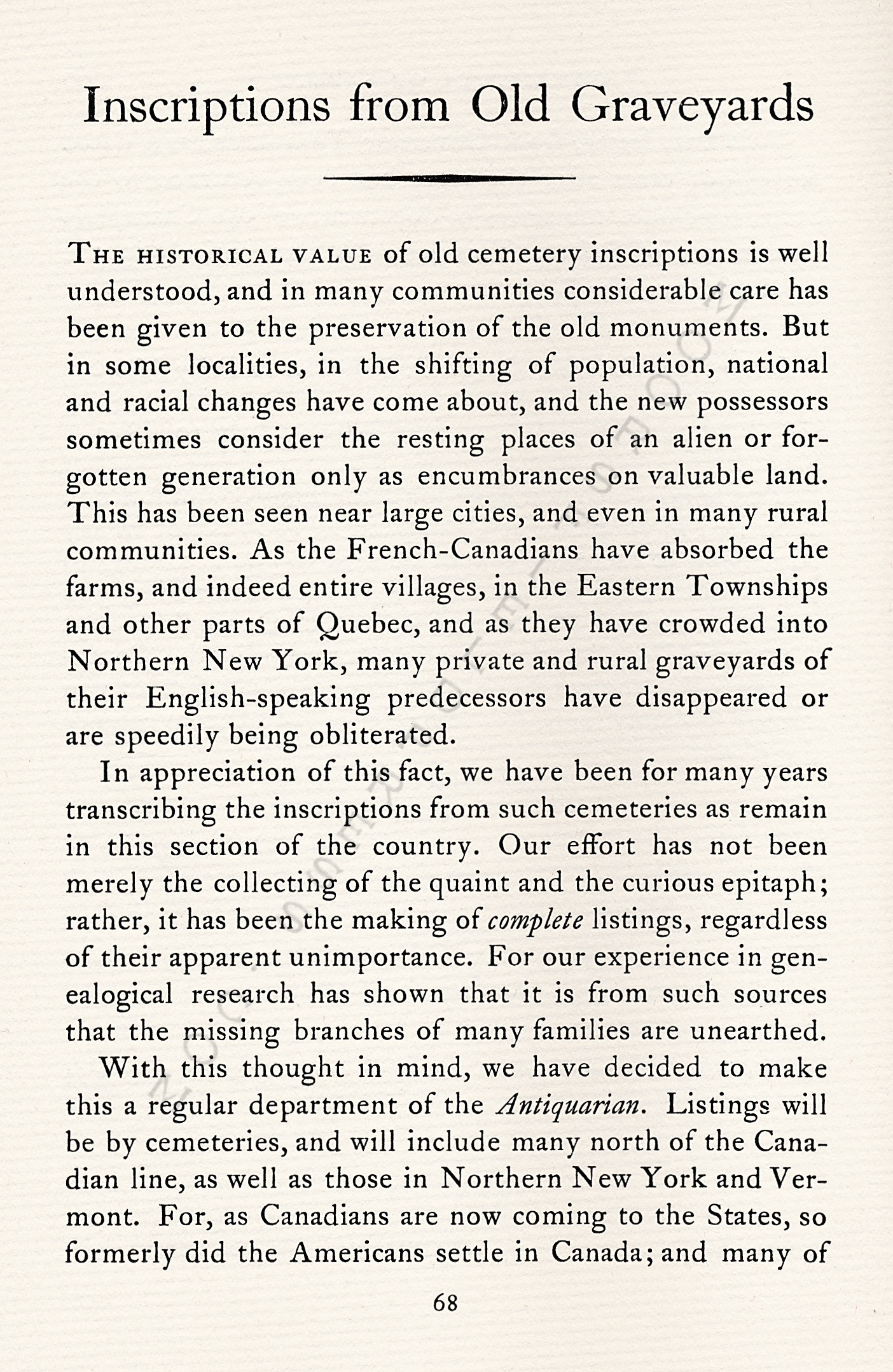 |
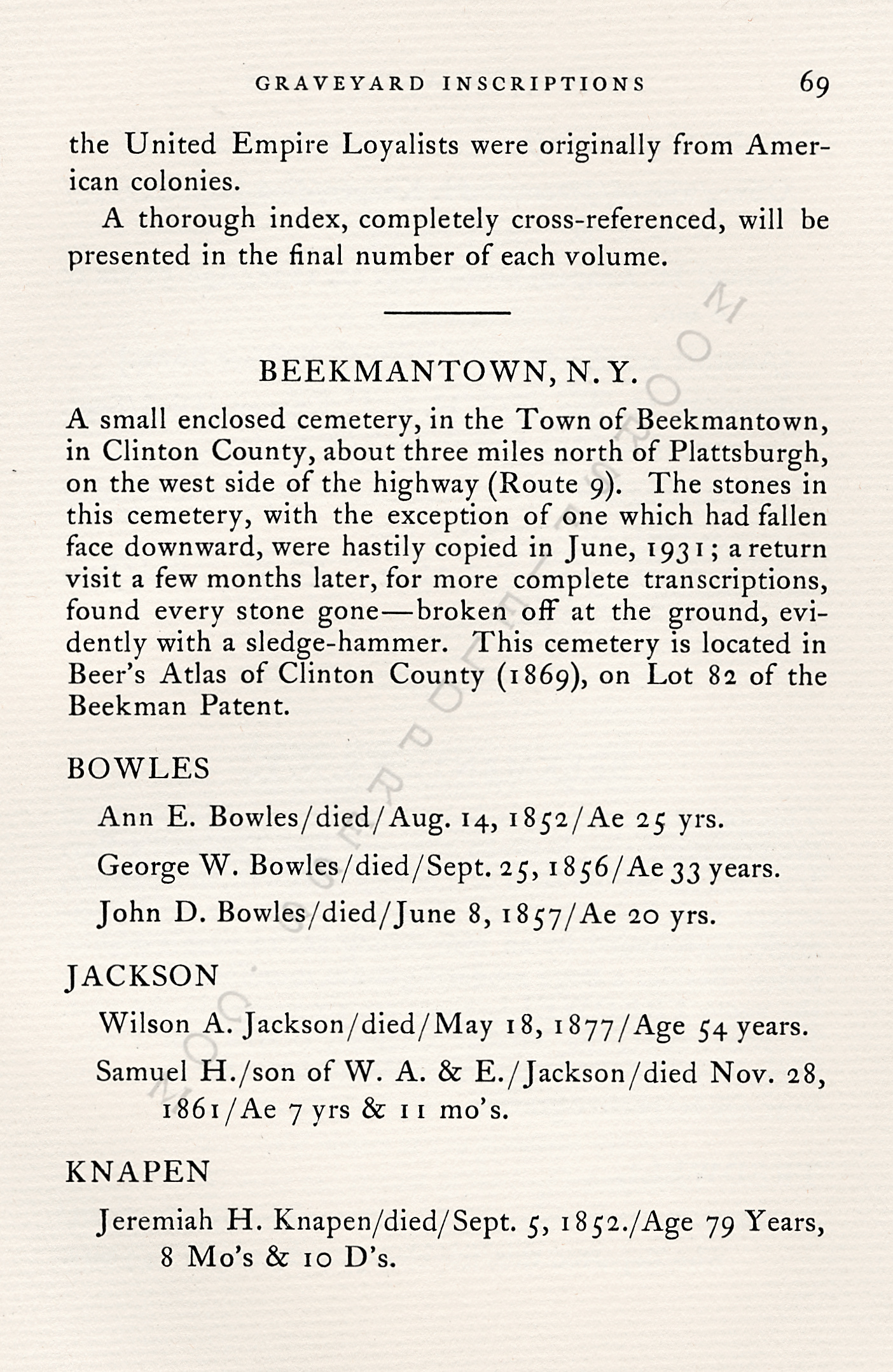 |
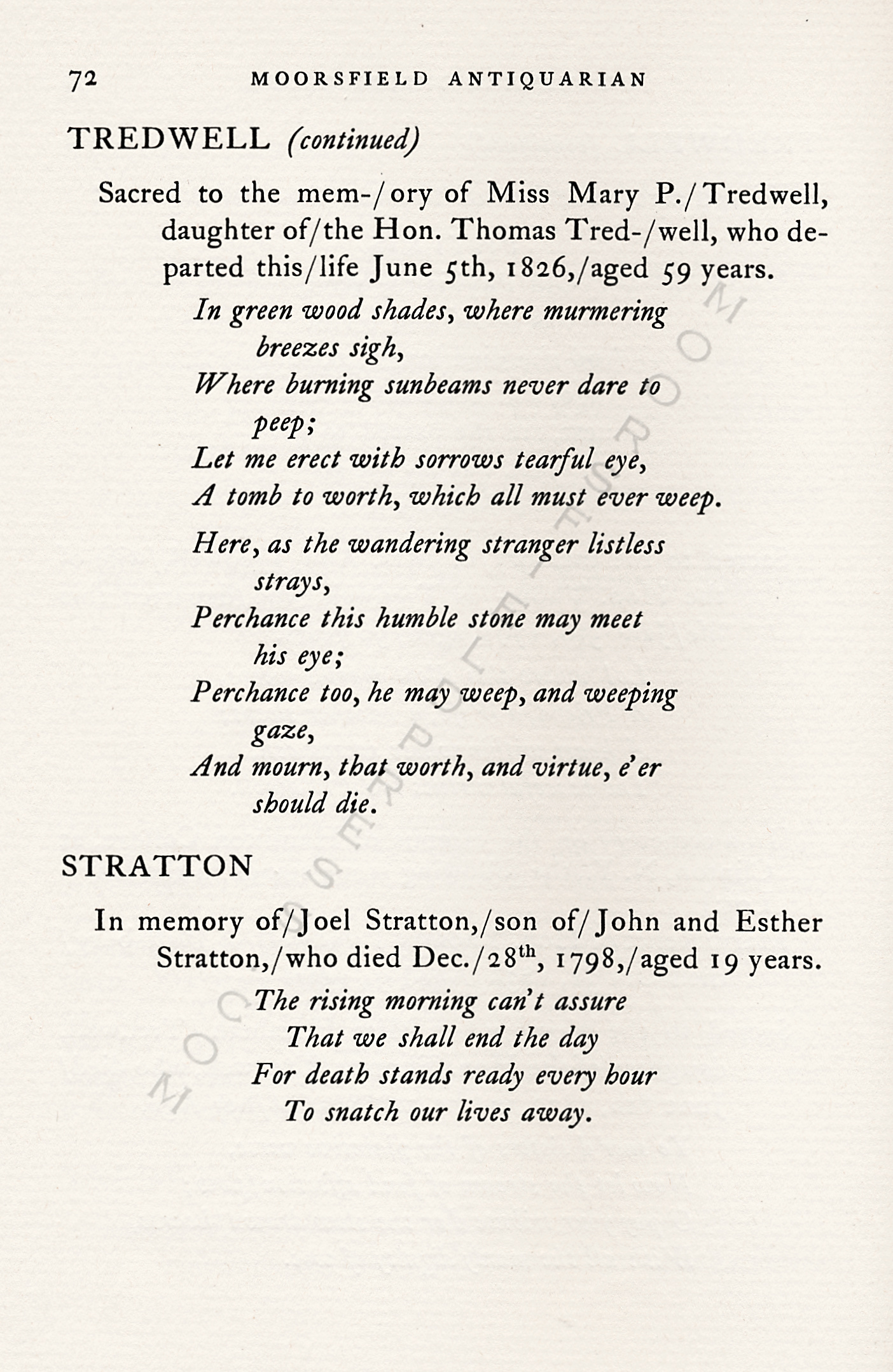 |
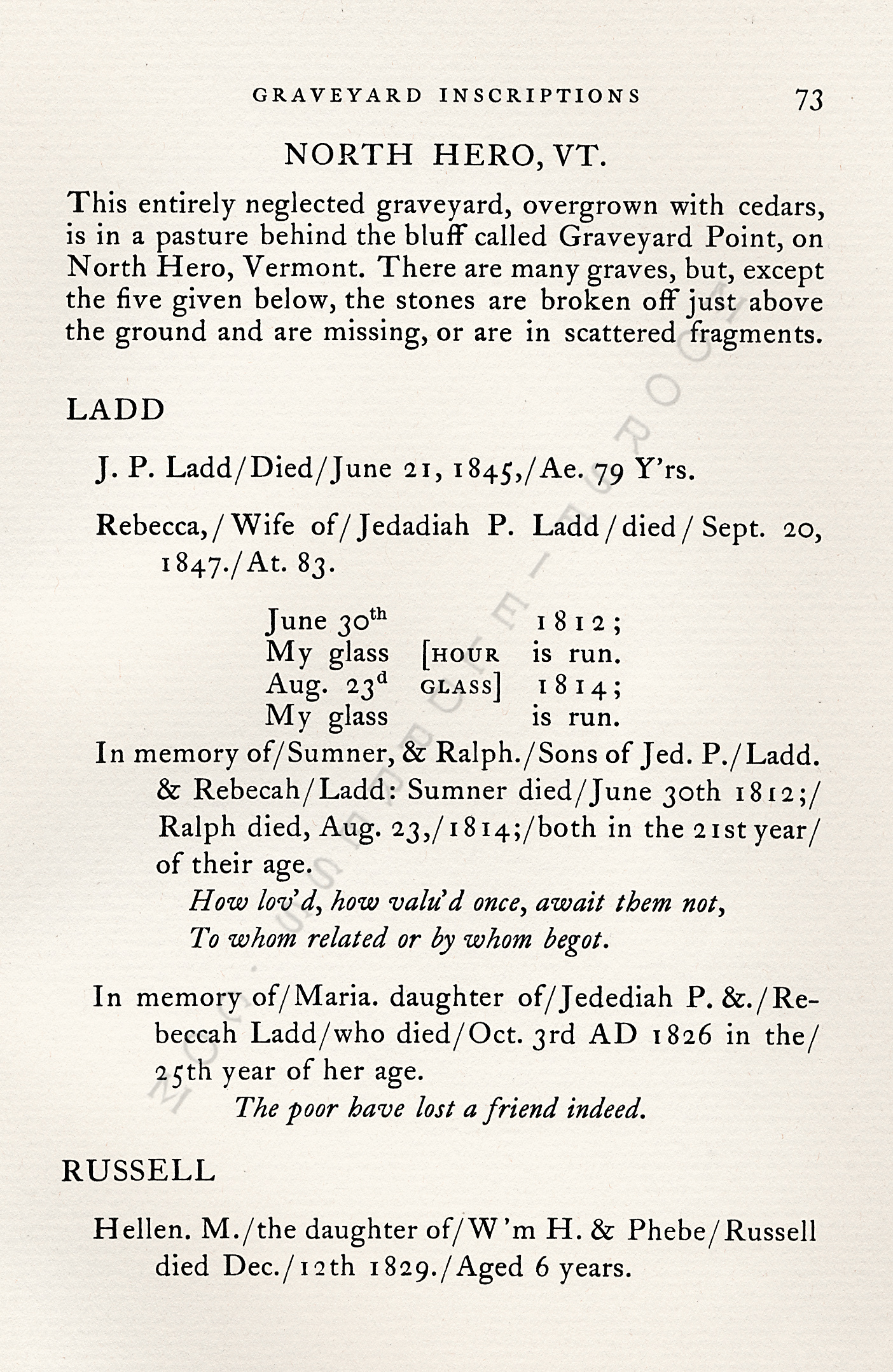 |
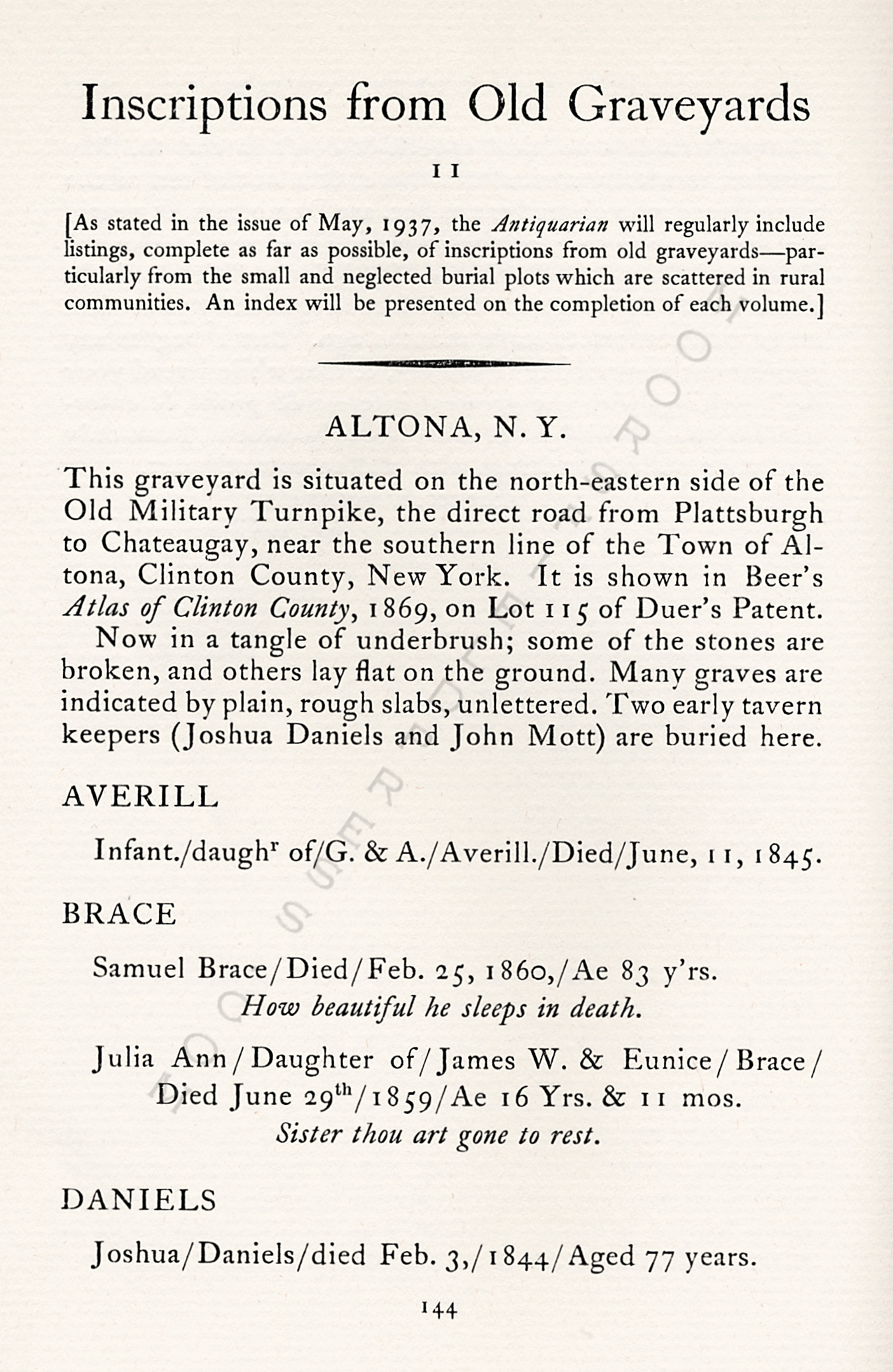 |
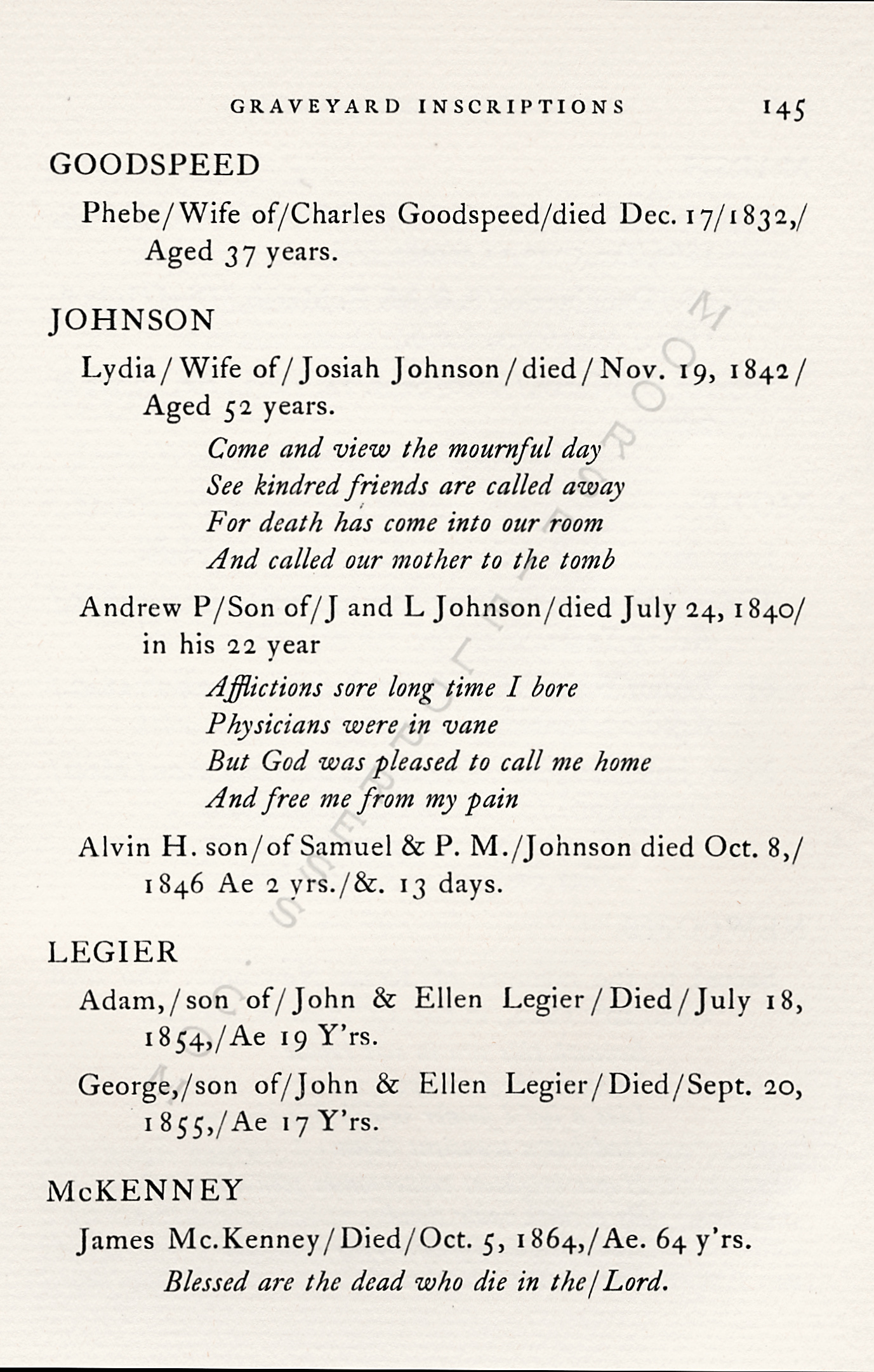 |
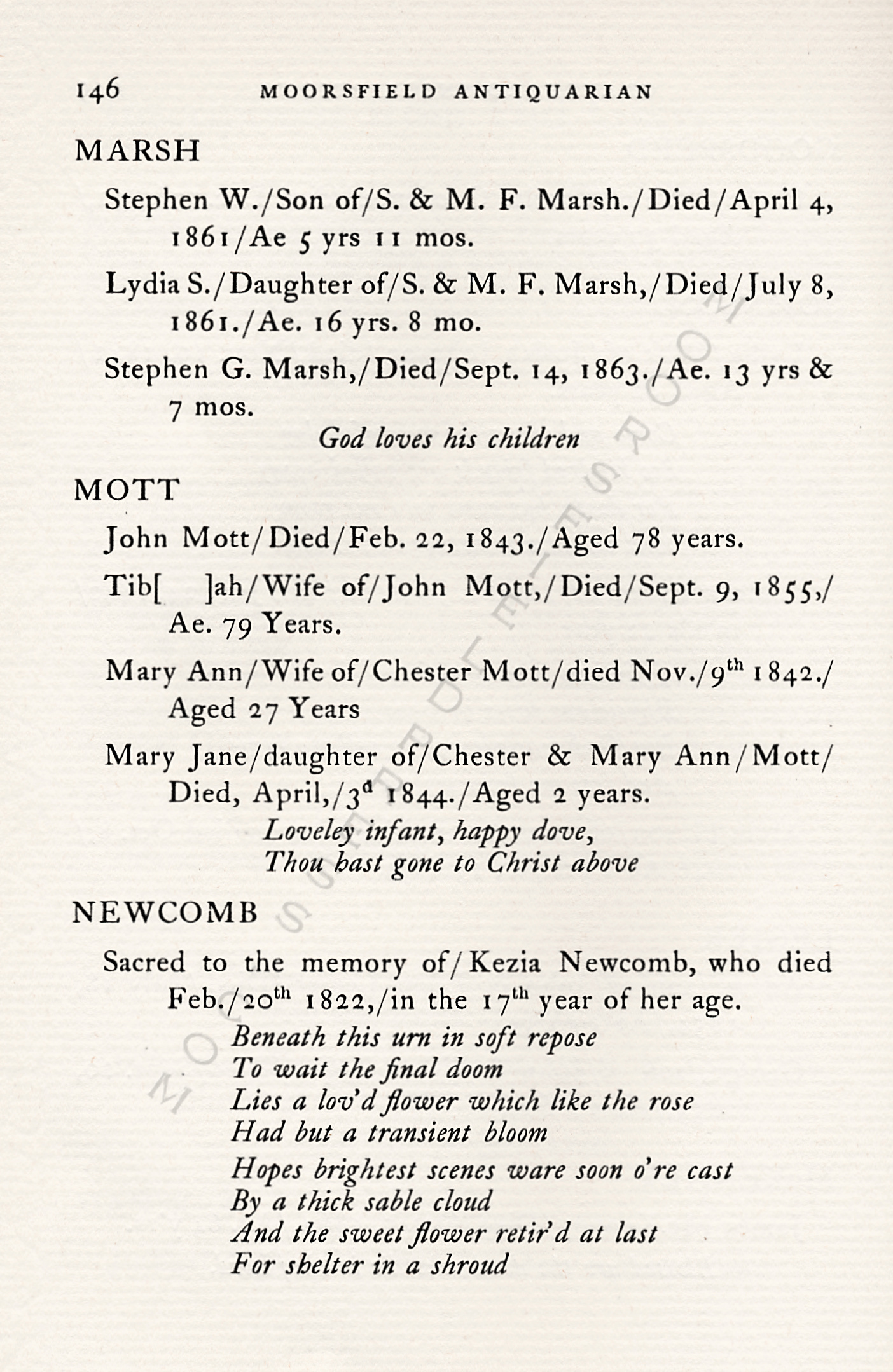 |
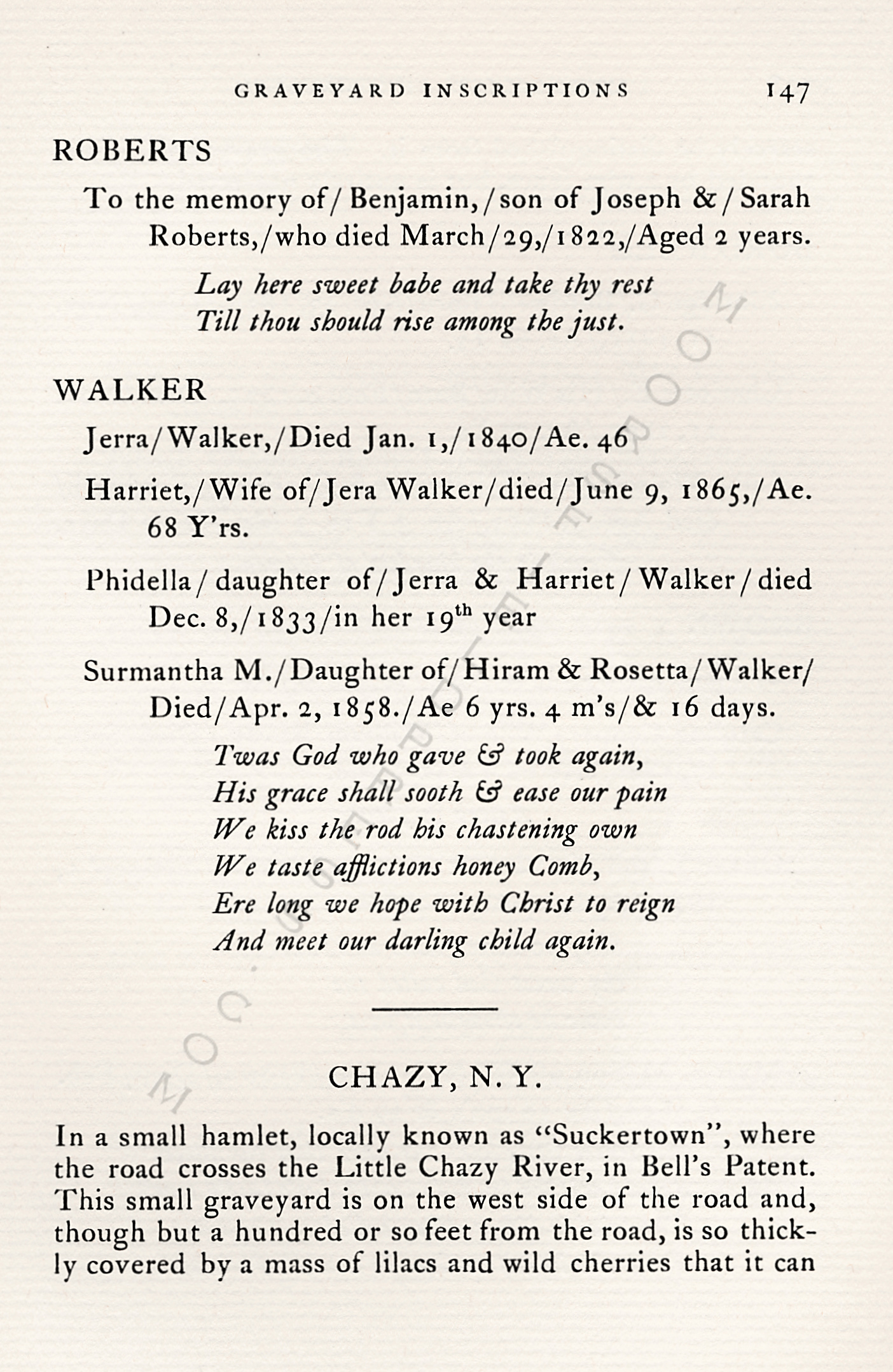 |
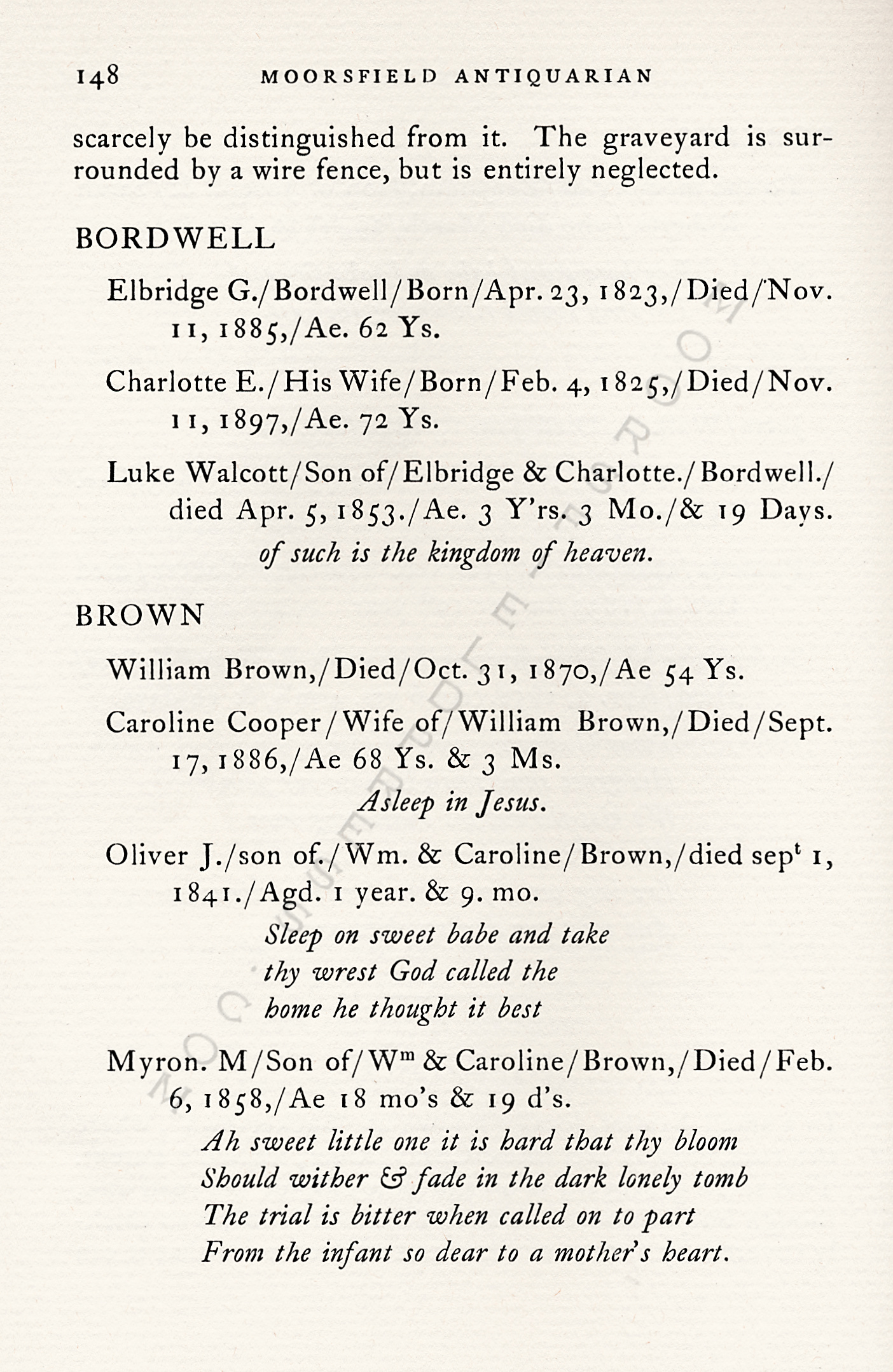 |
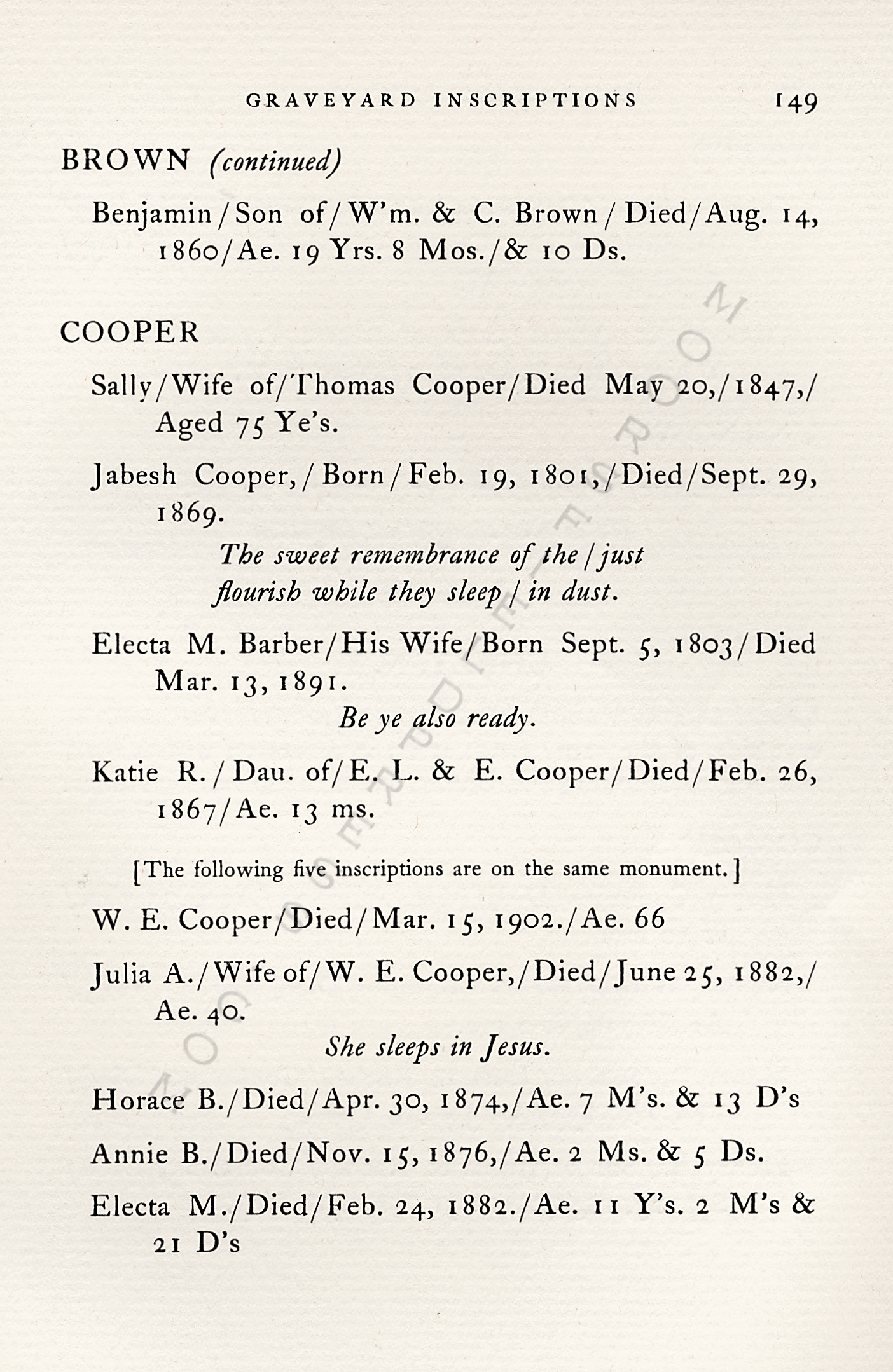 |
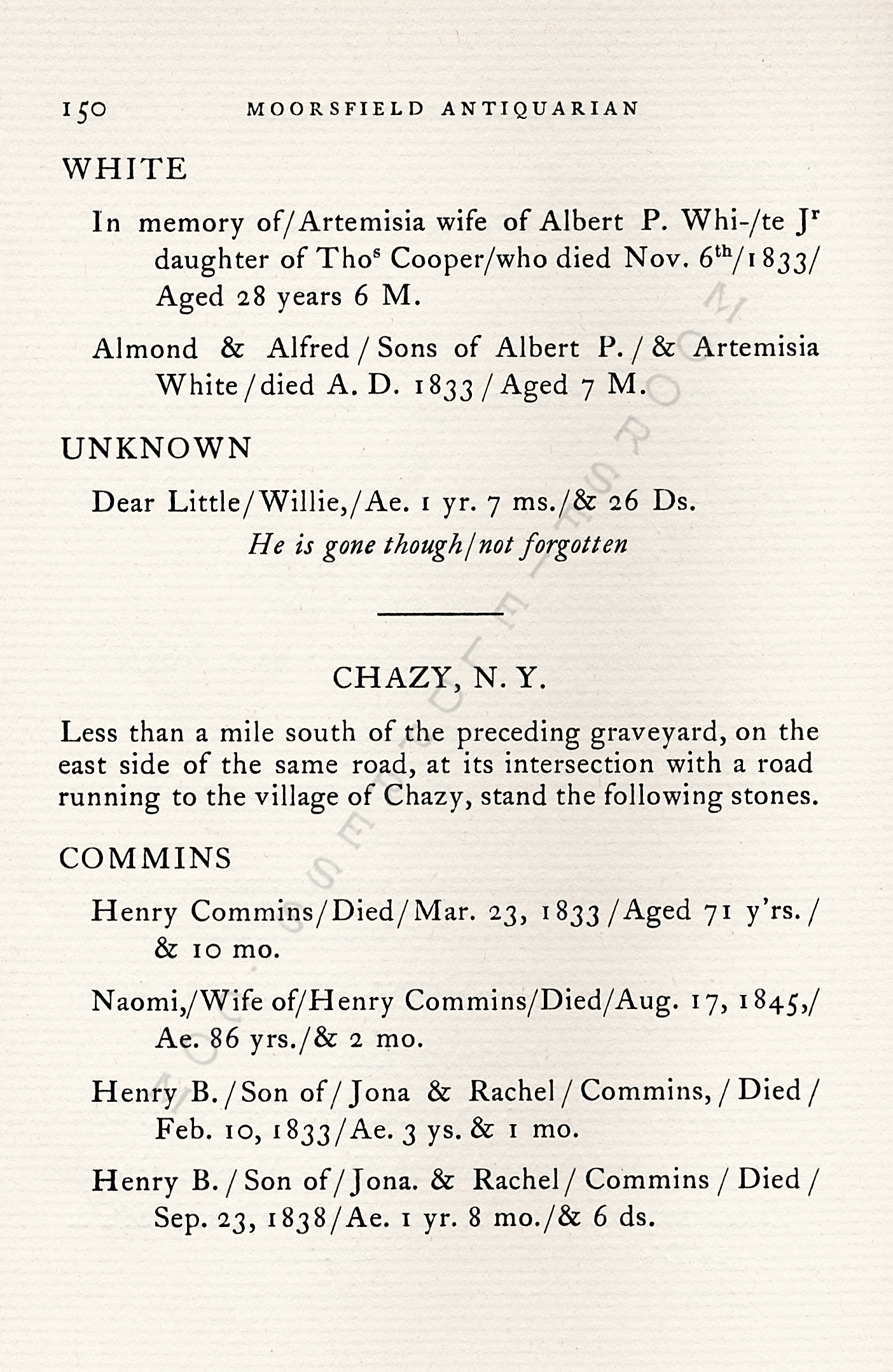 |
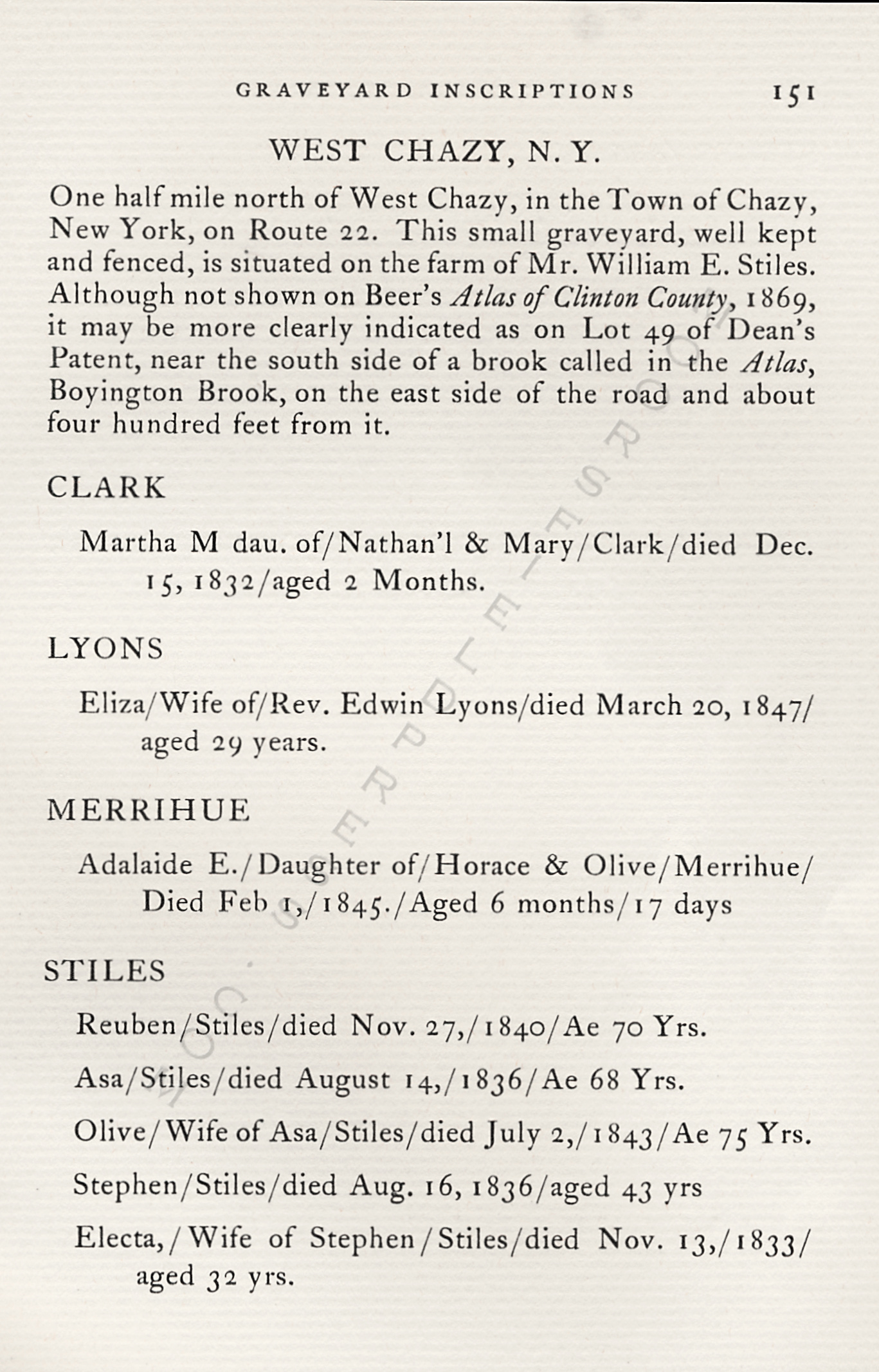 |
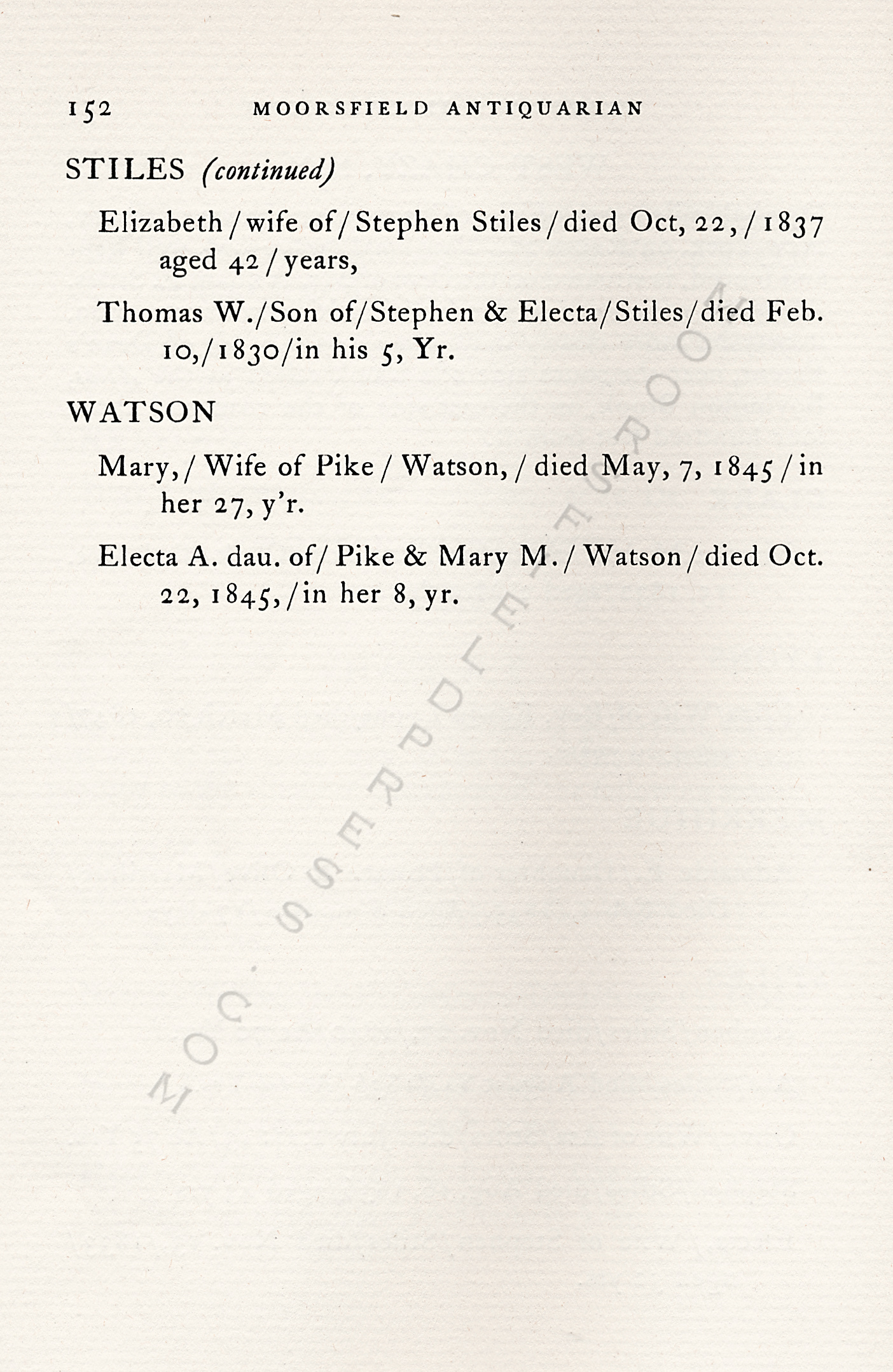 |
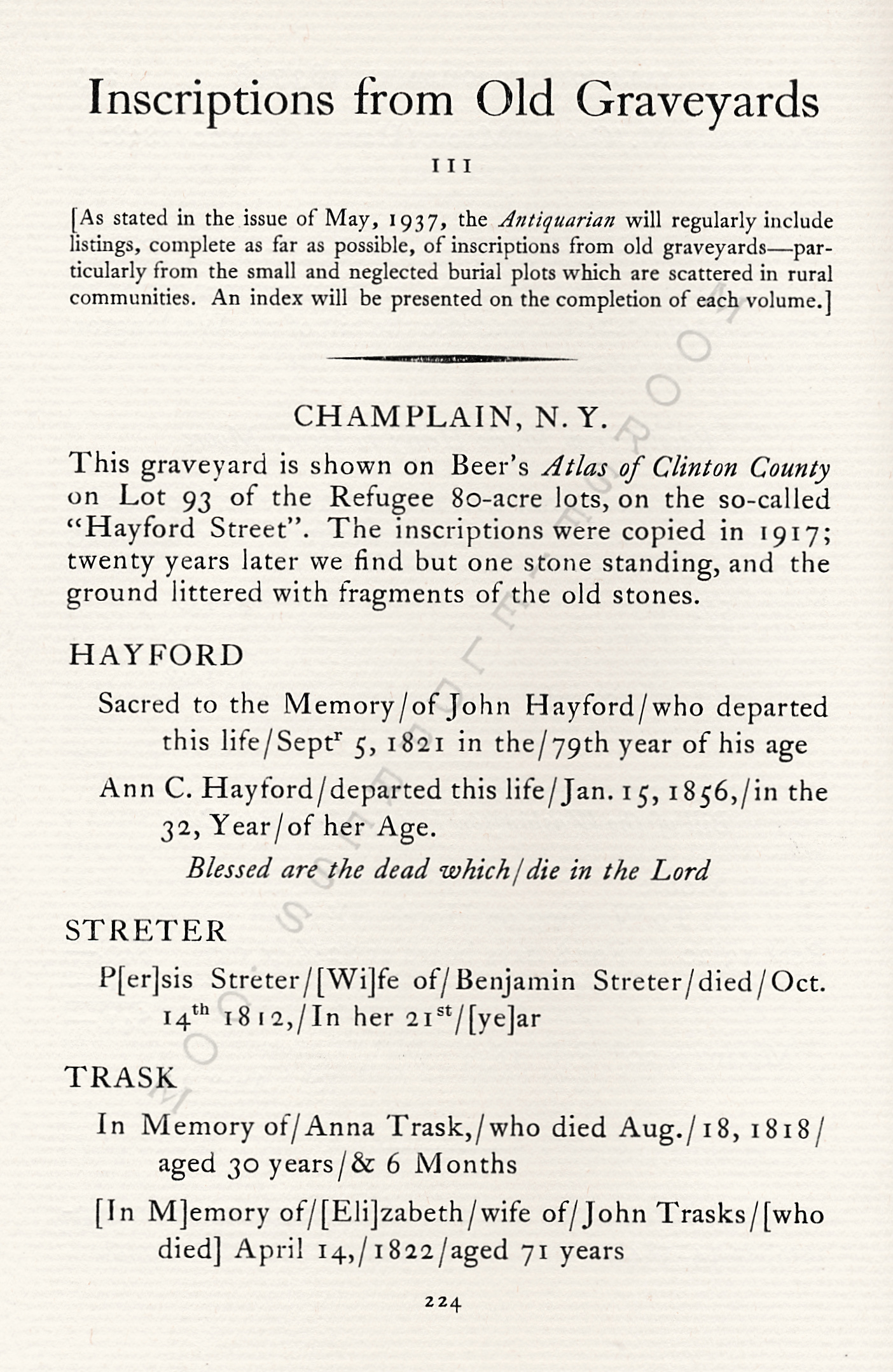 |
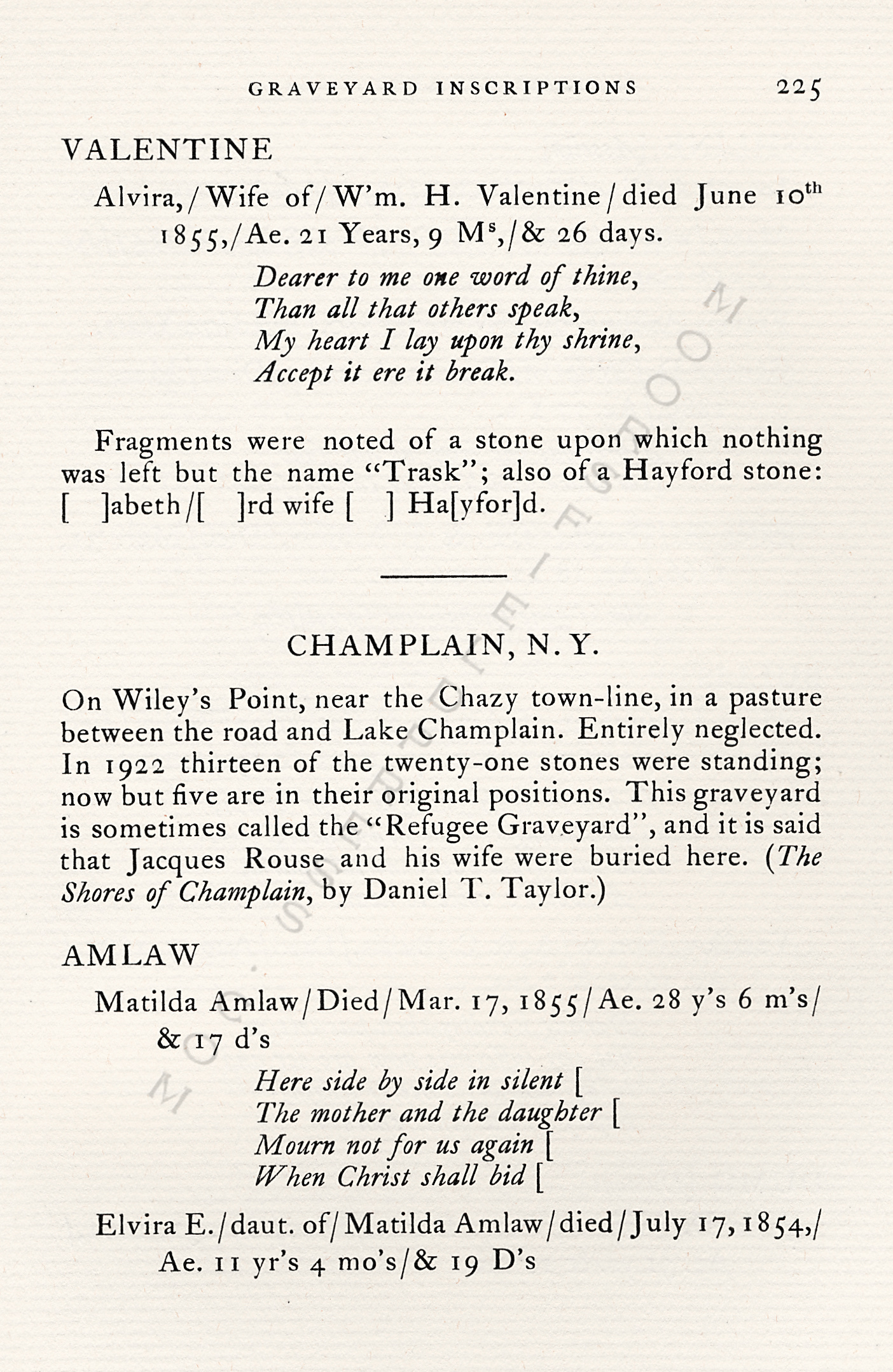 |
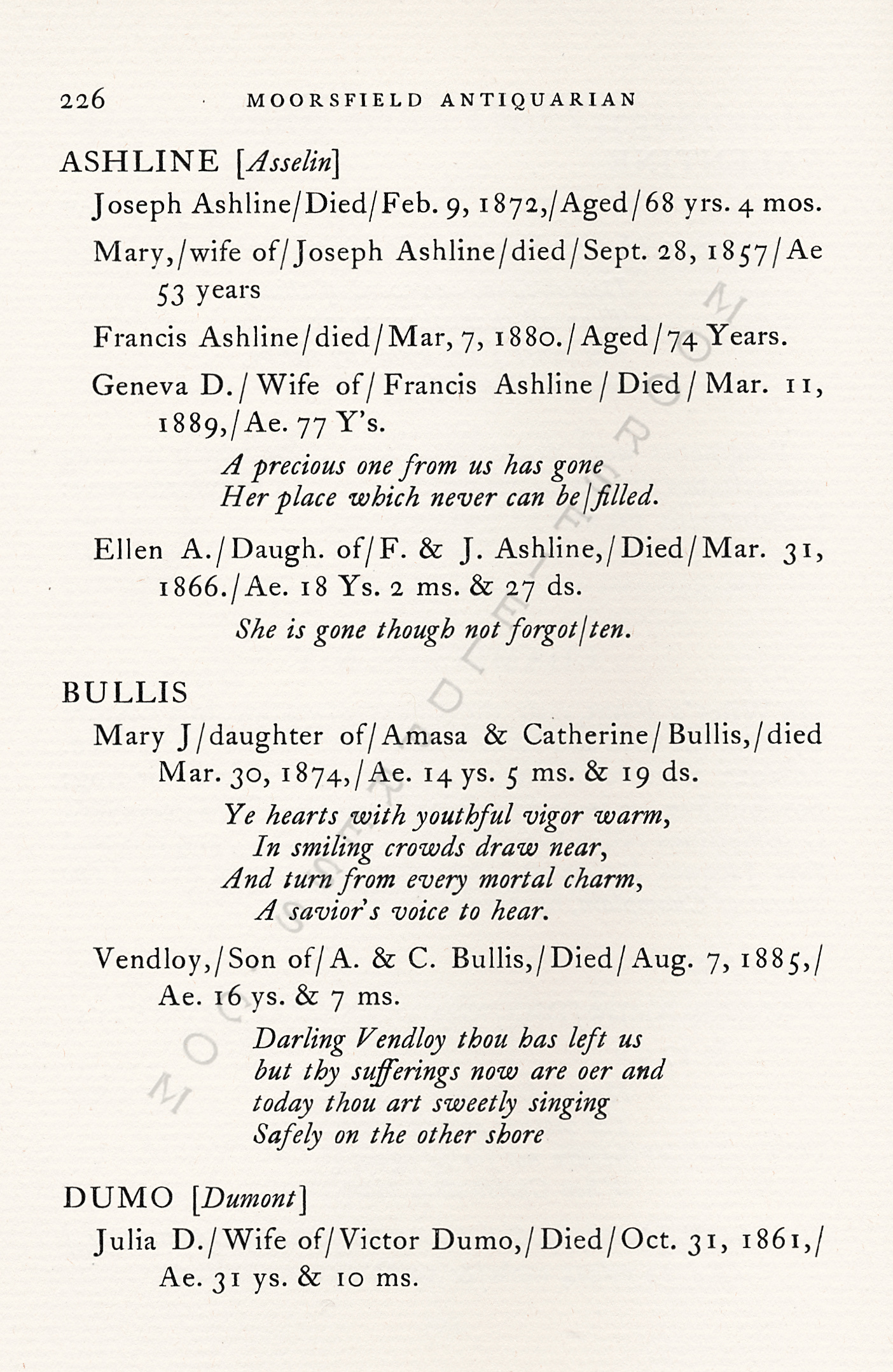 |
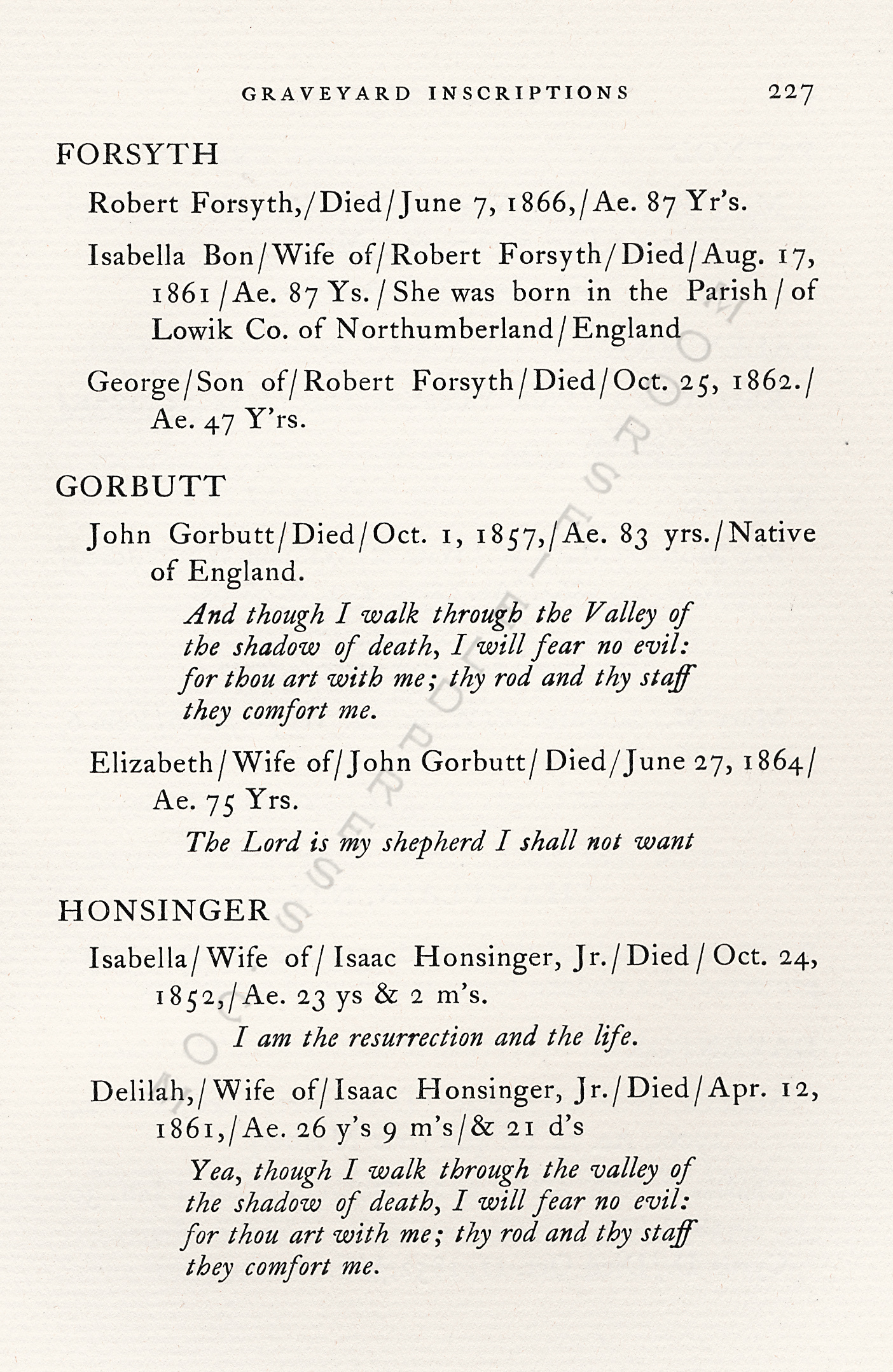 |
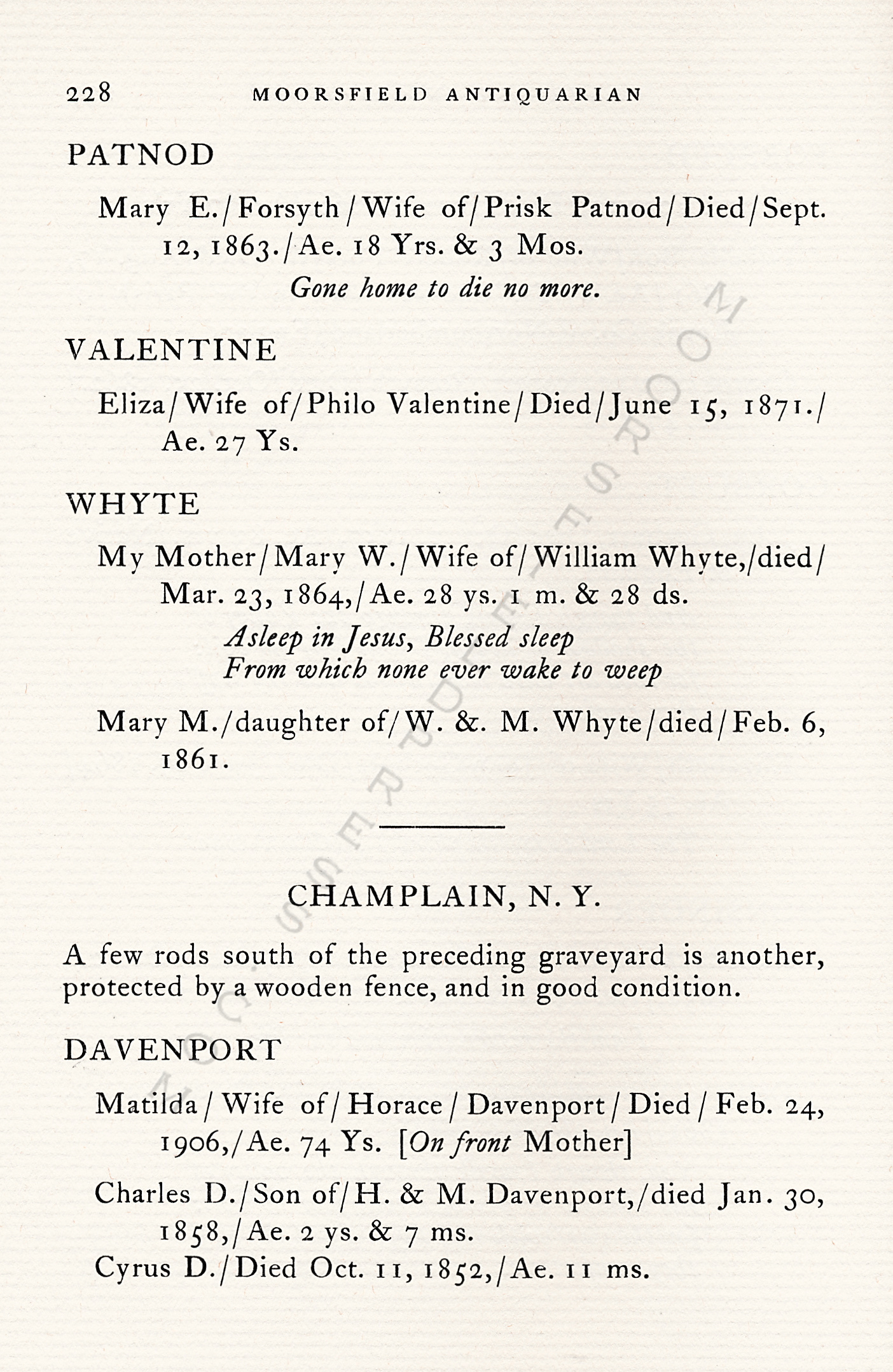 |
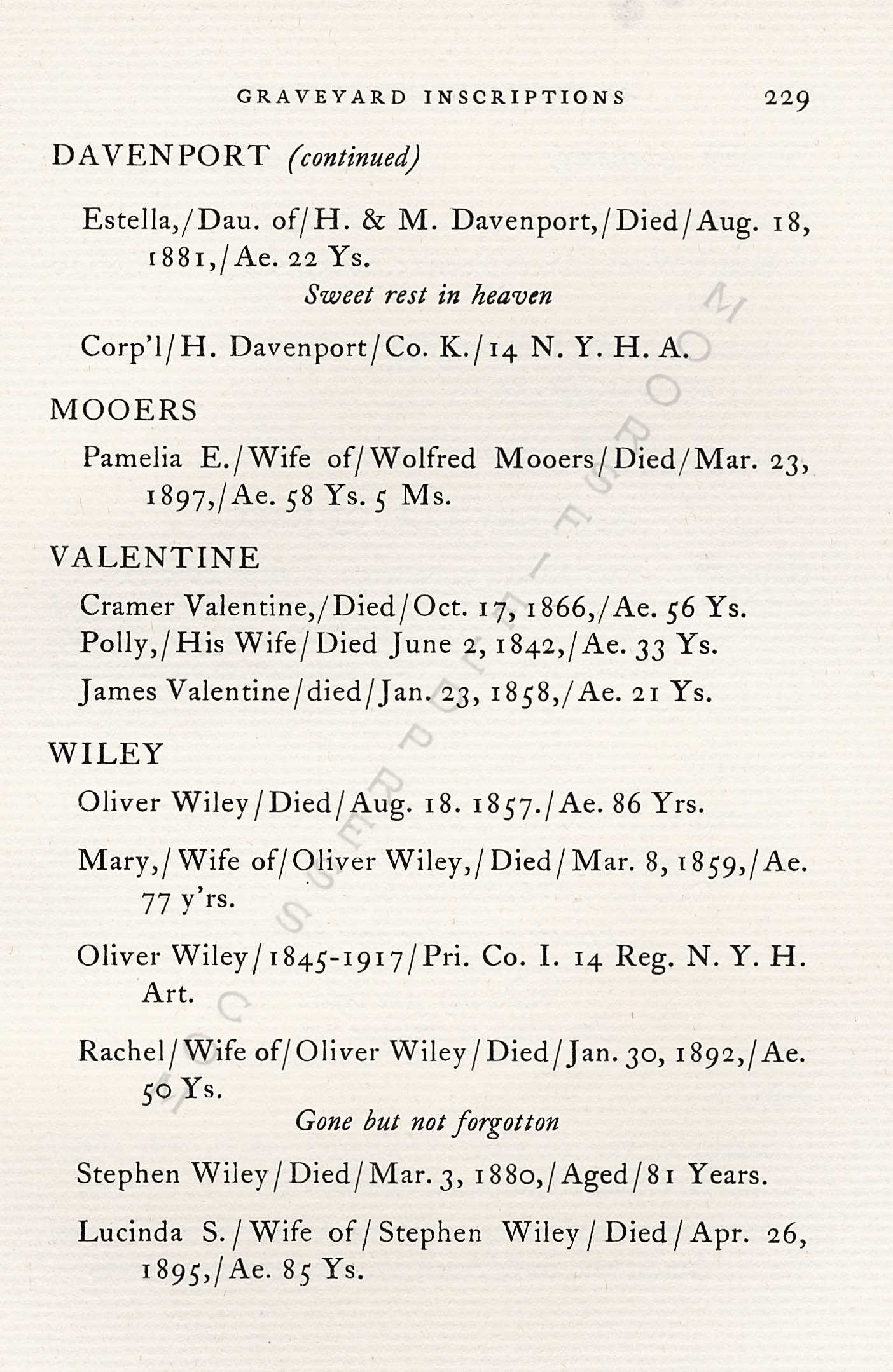 |
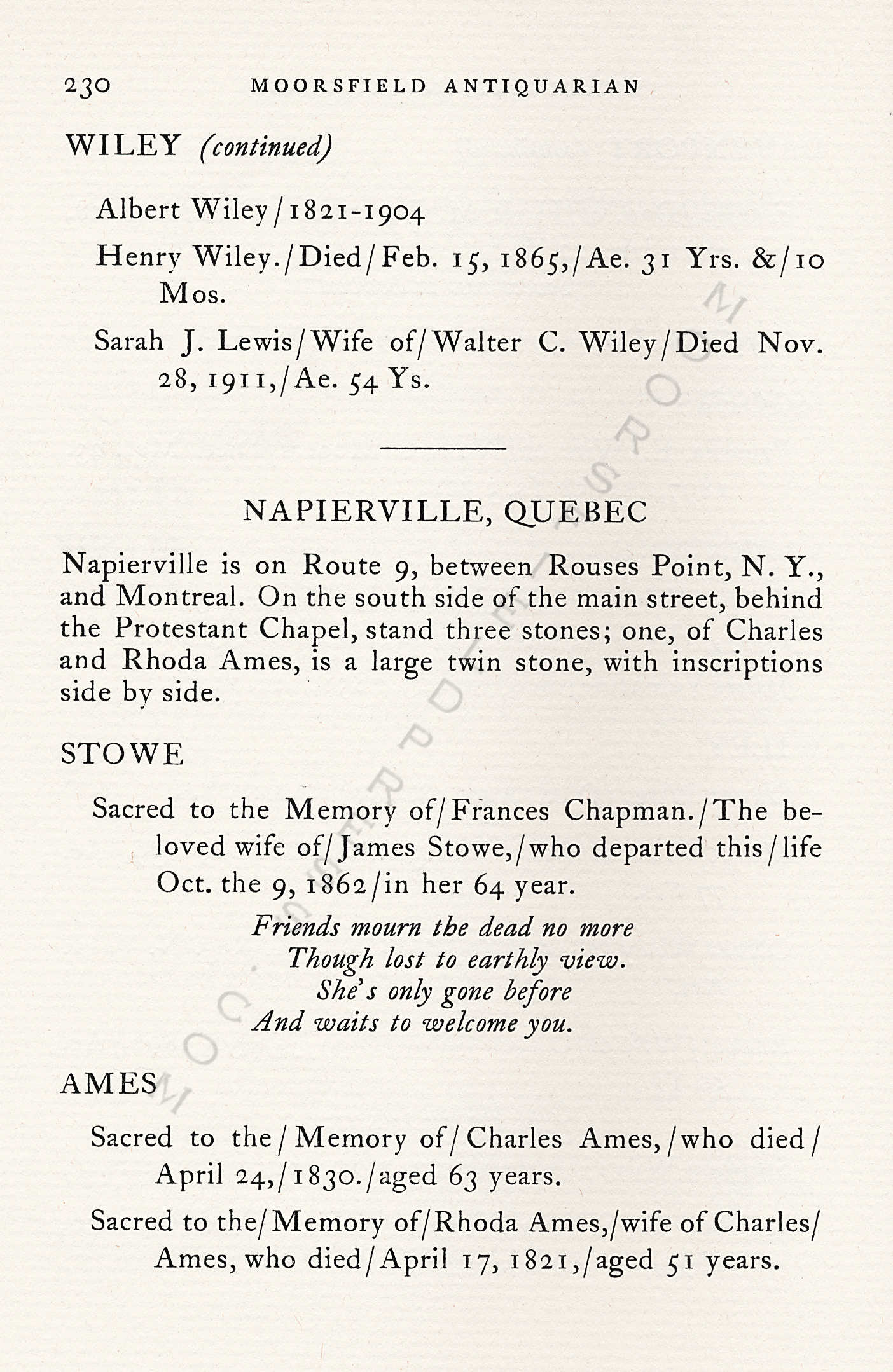 |
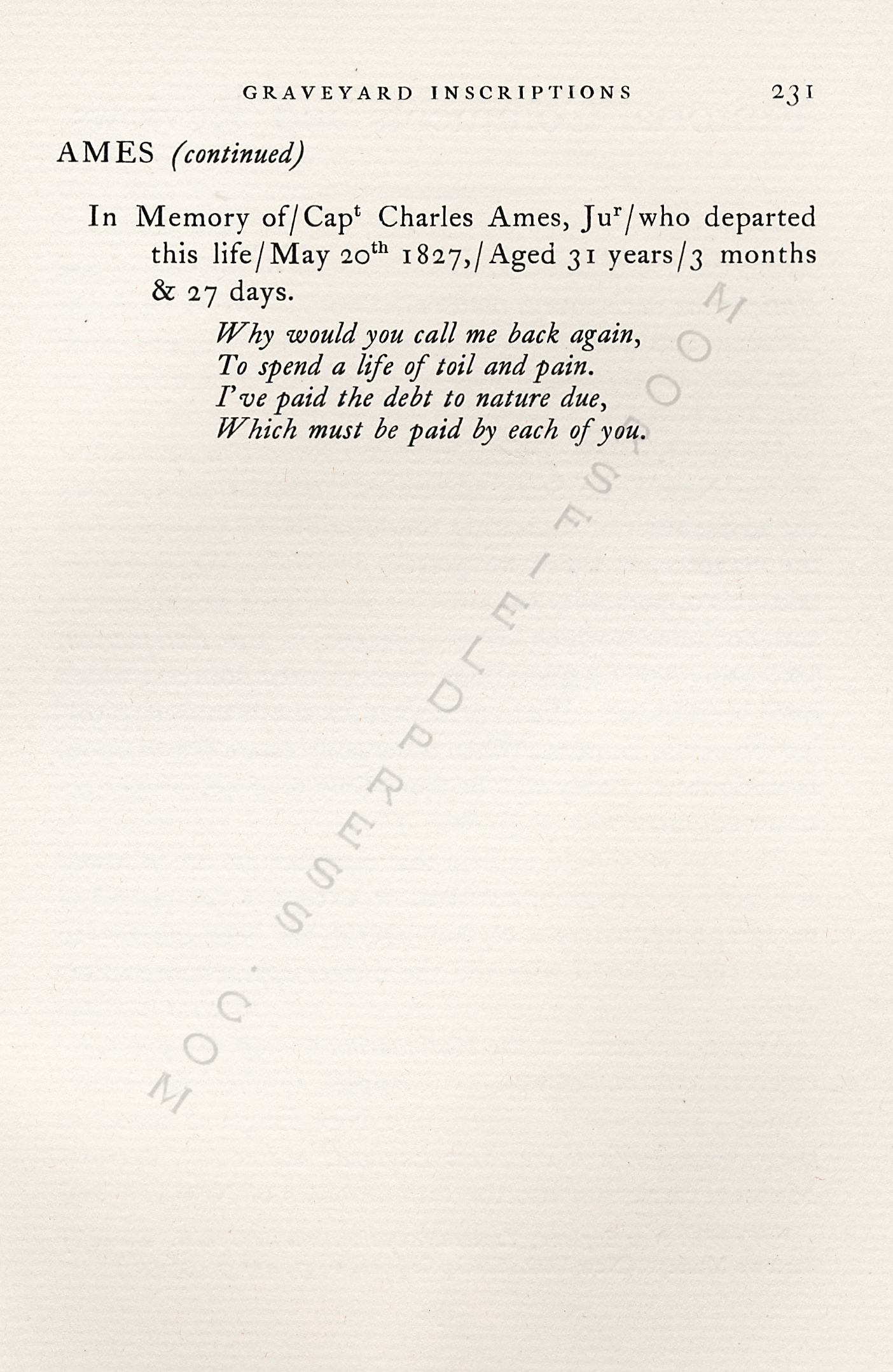 |
 |
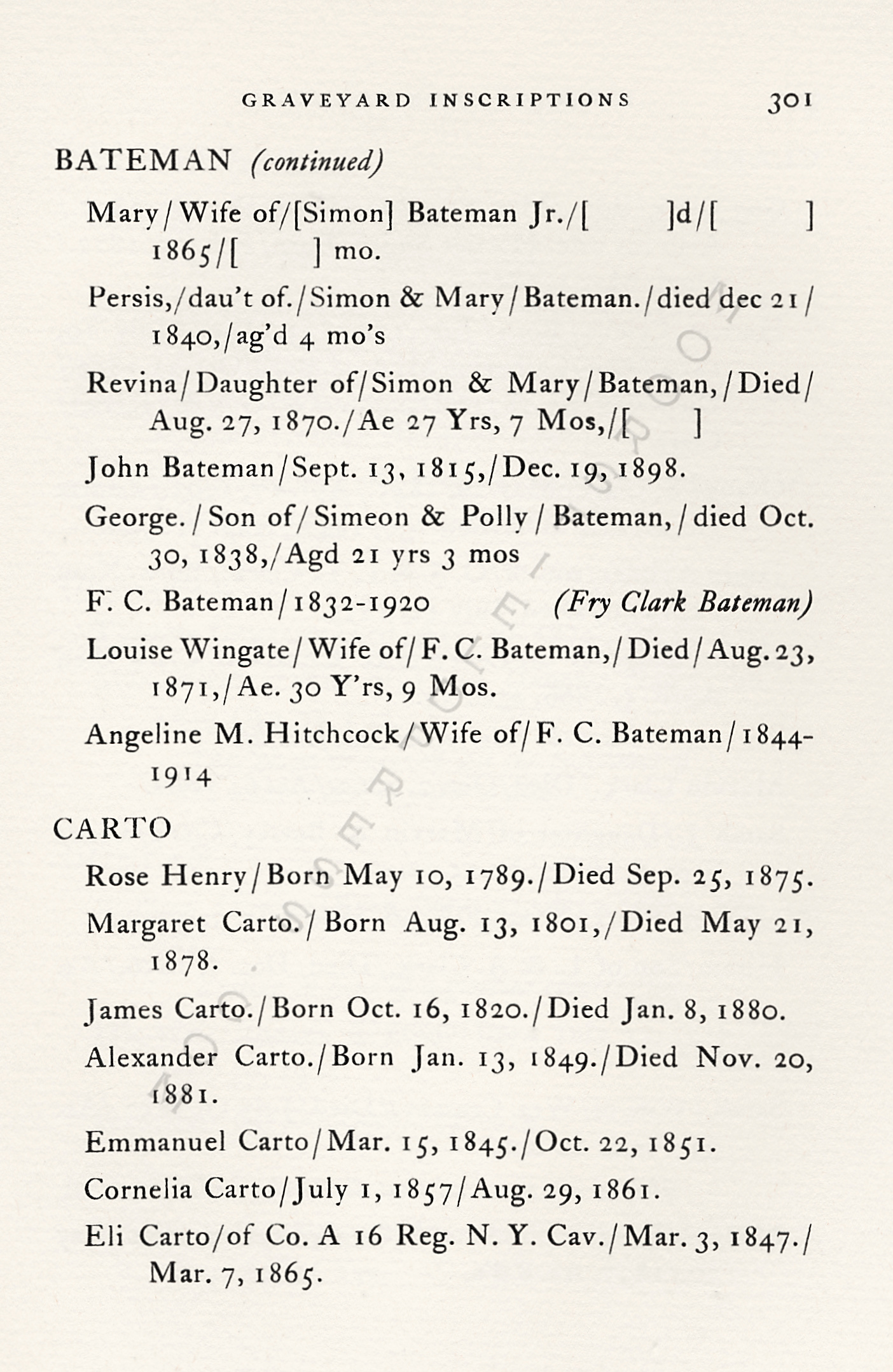 |
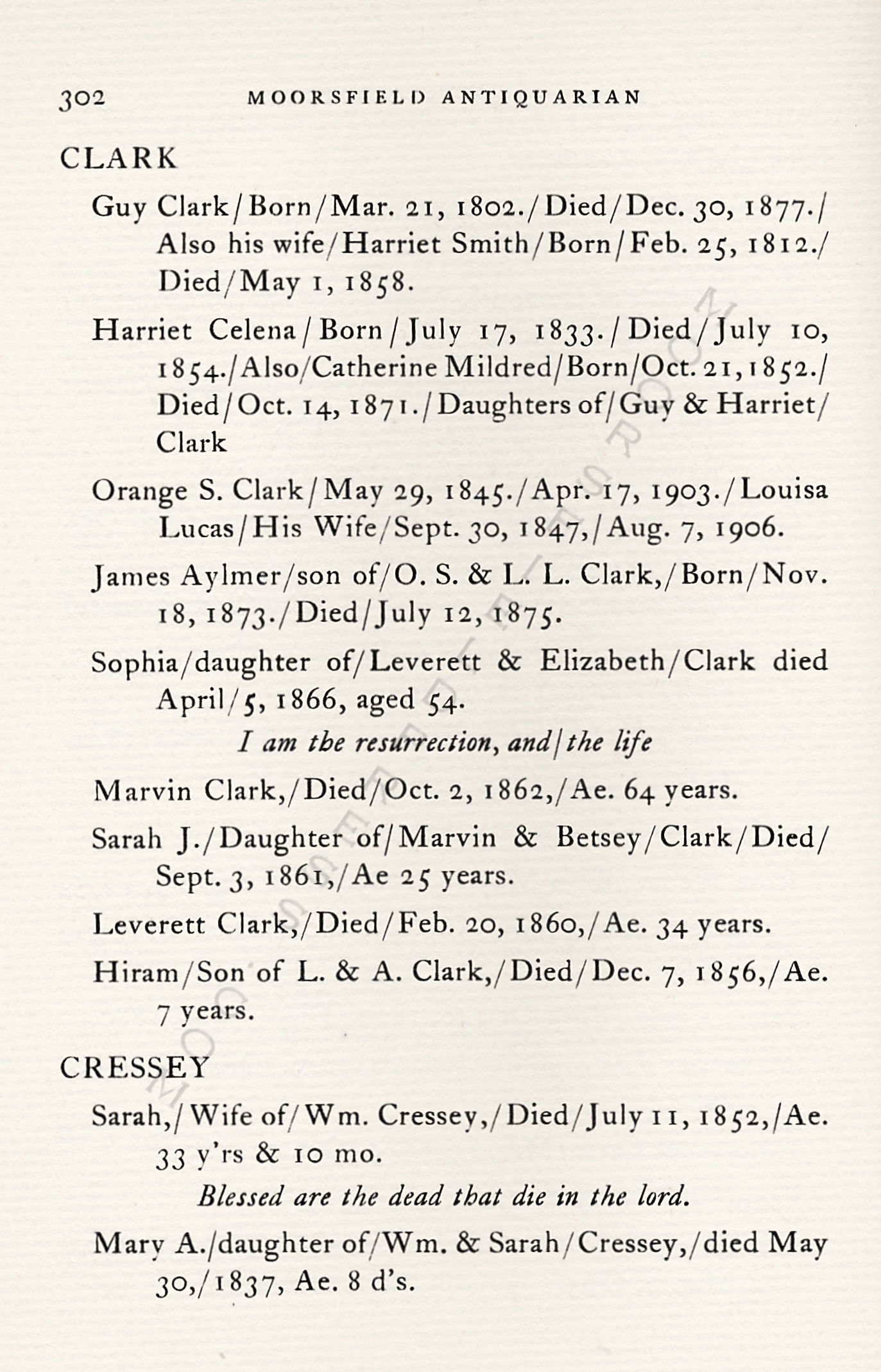 |
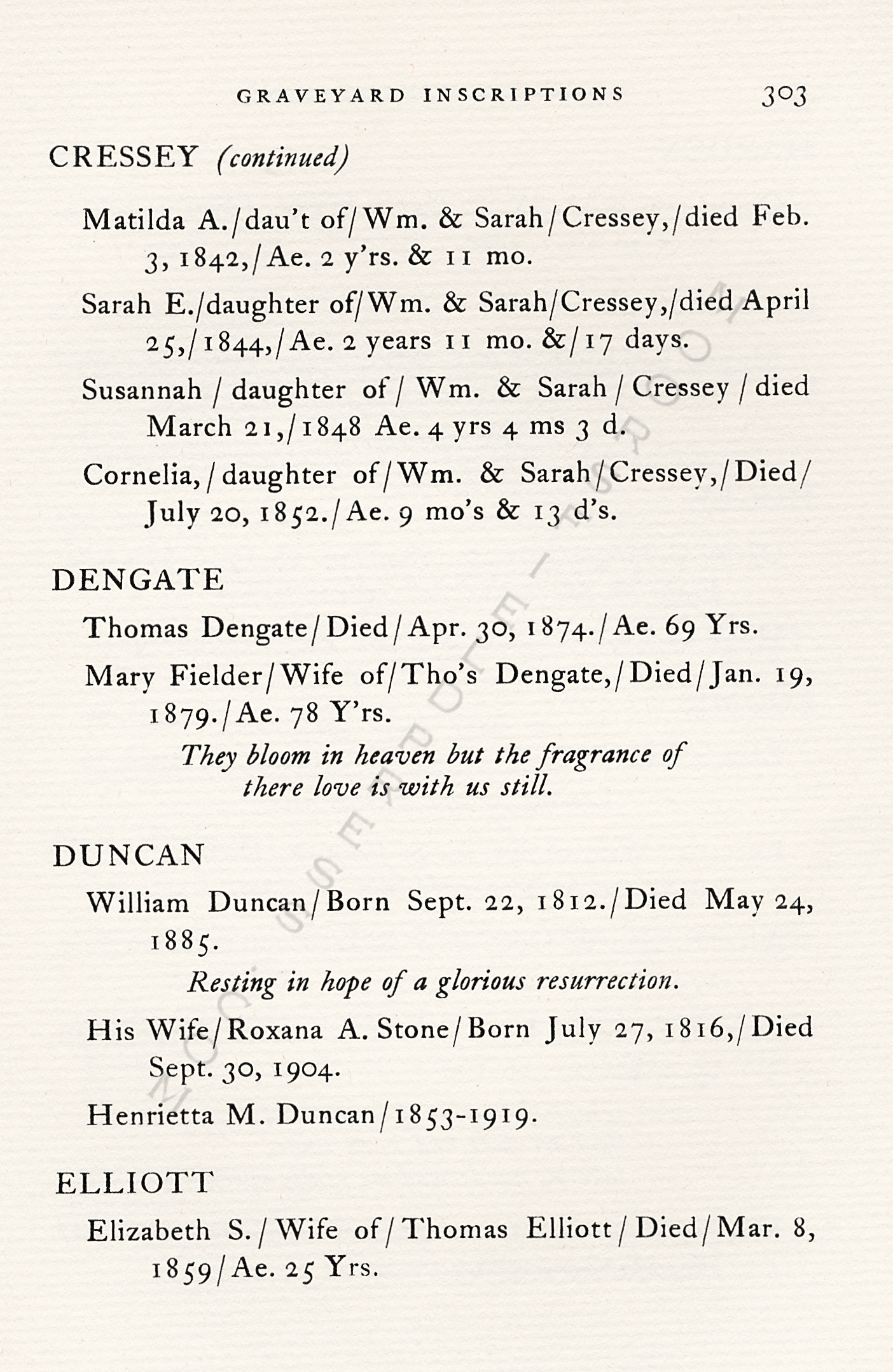 |
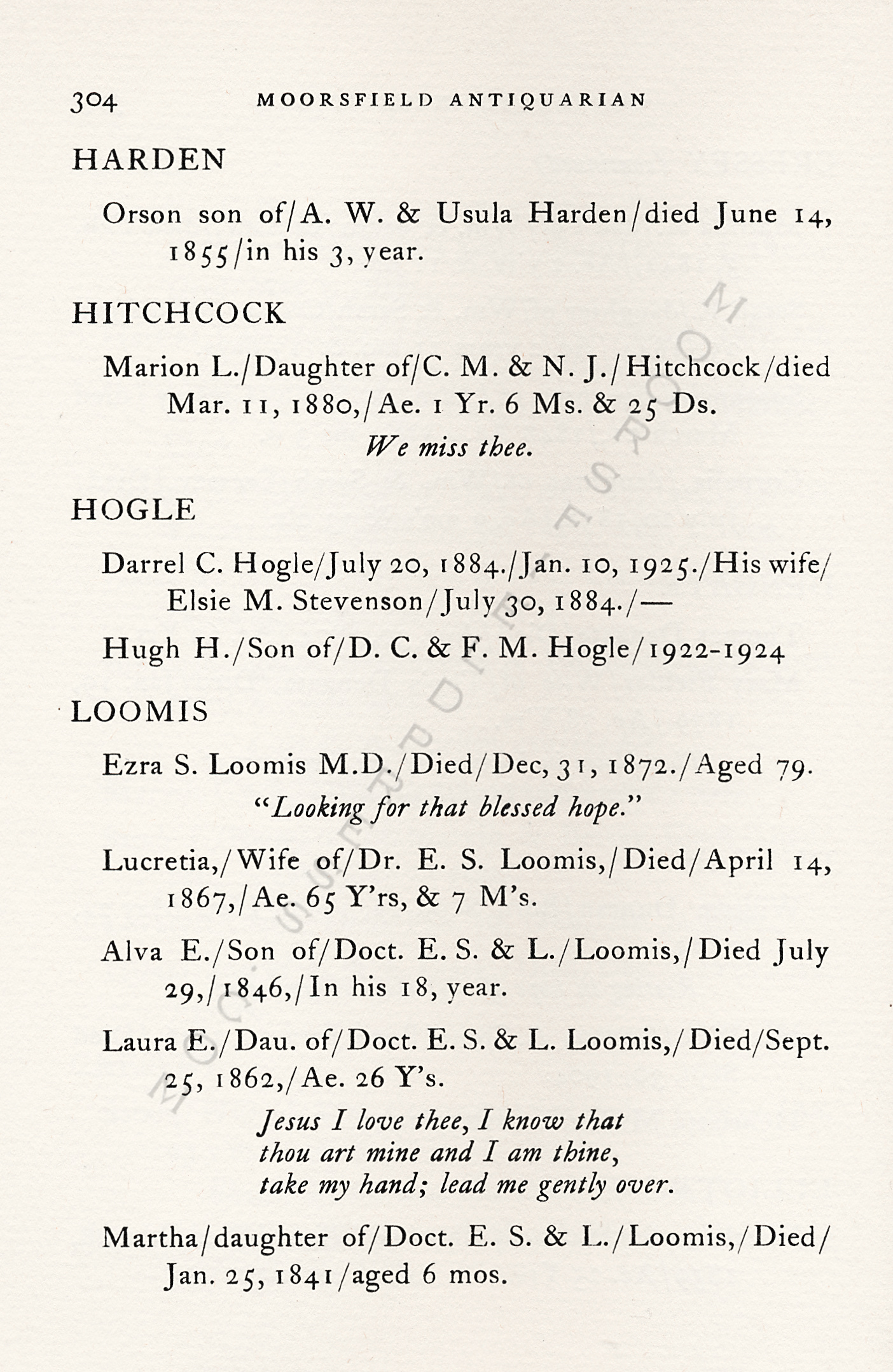 |
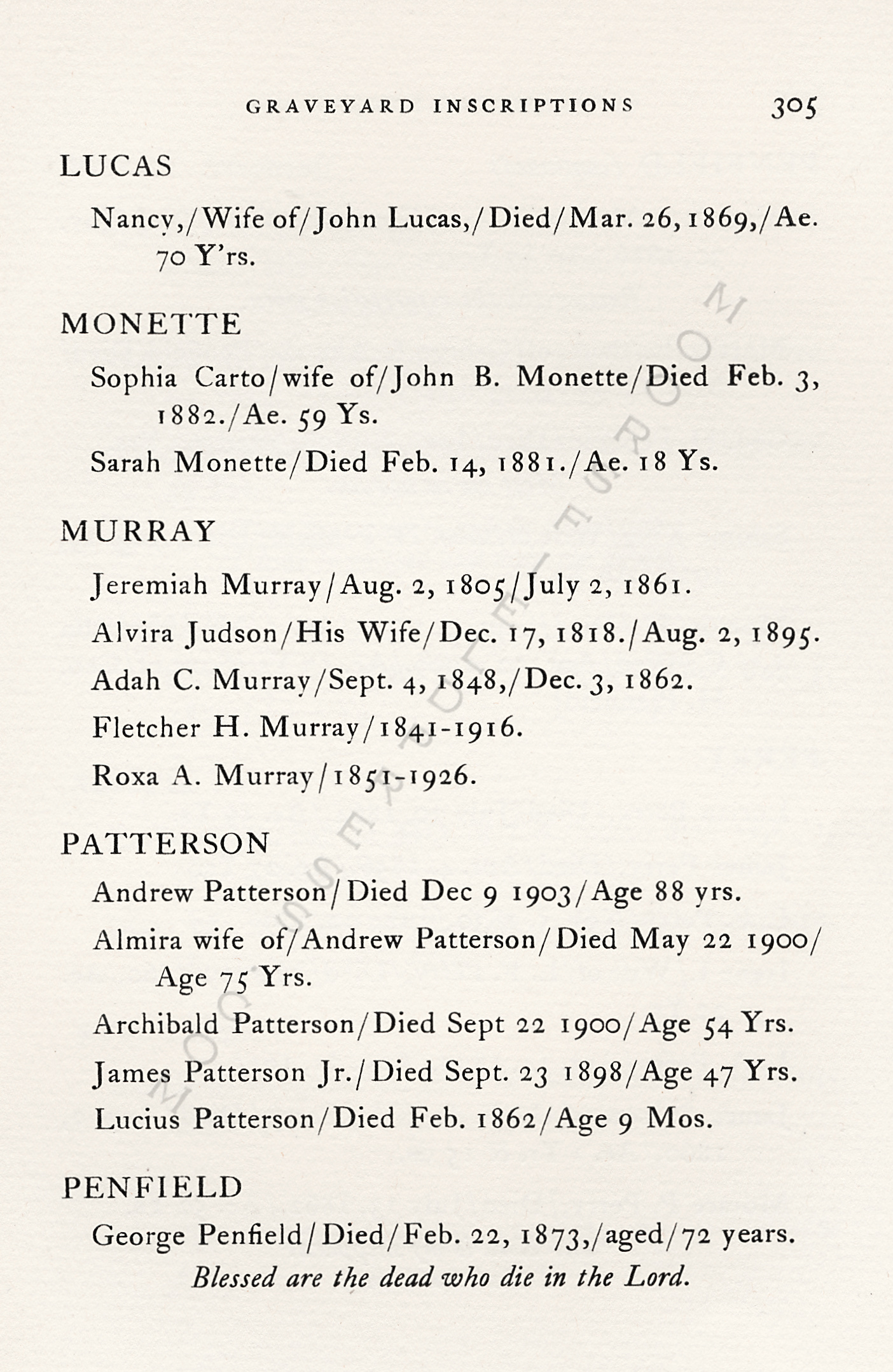 |
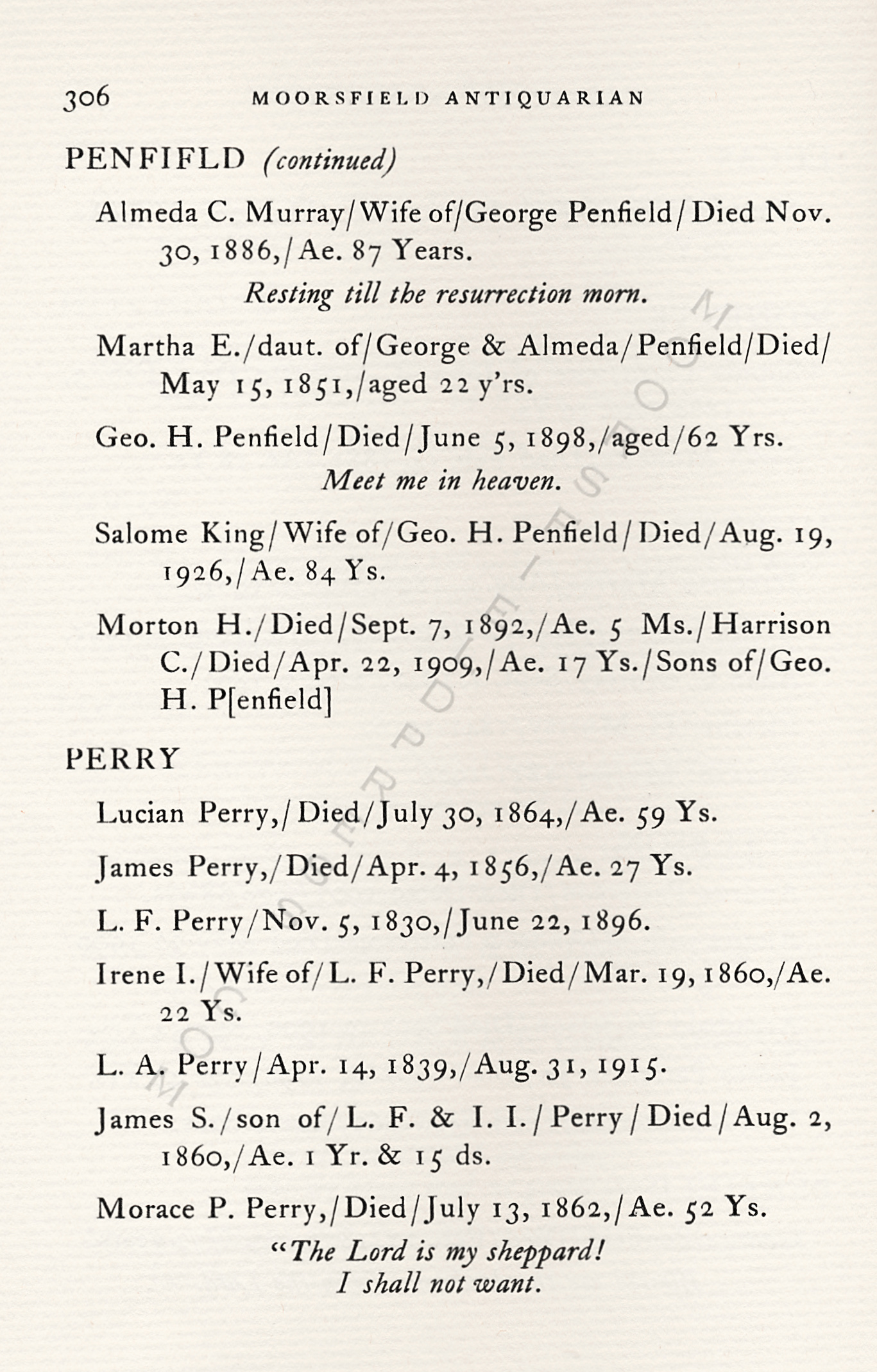 |
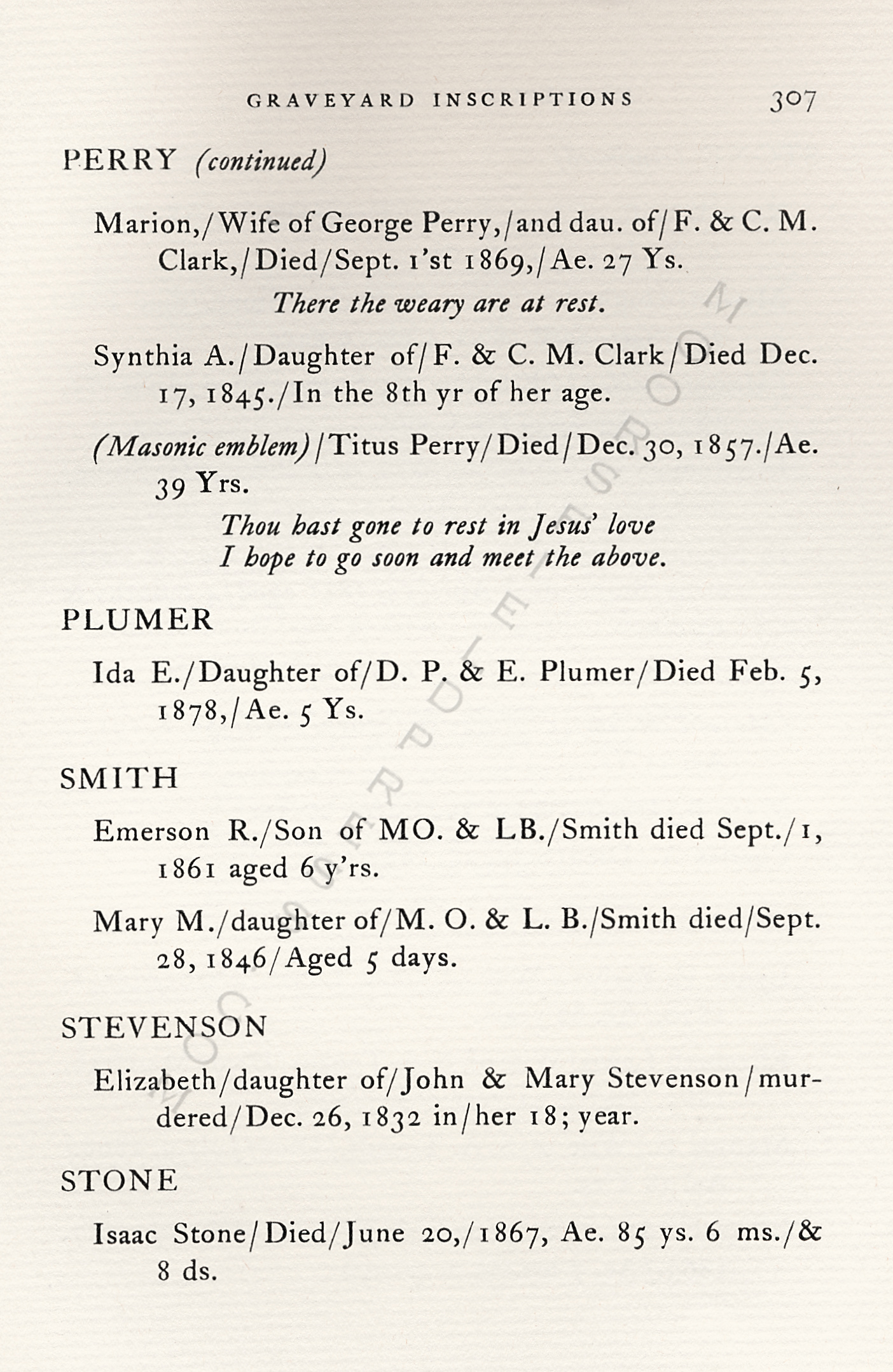 |
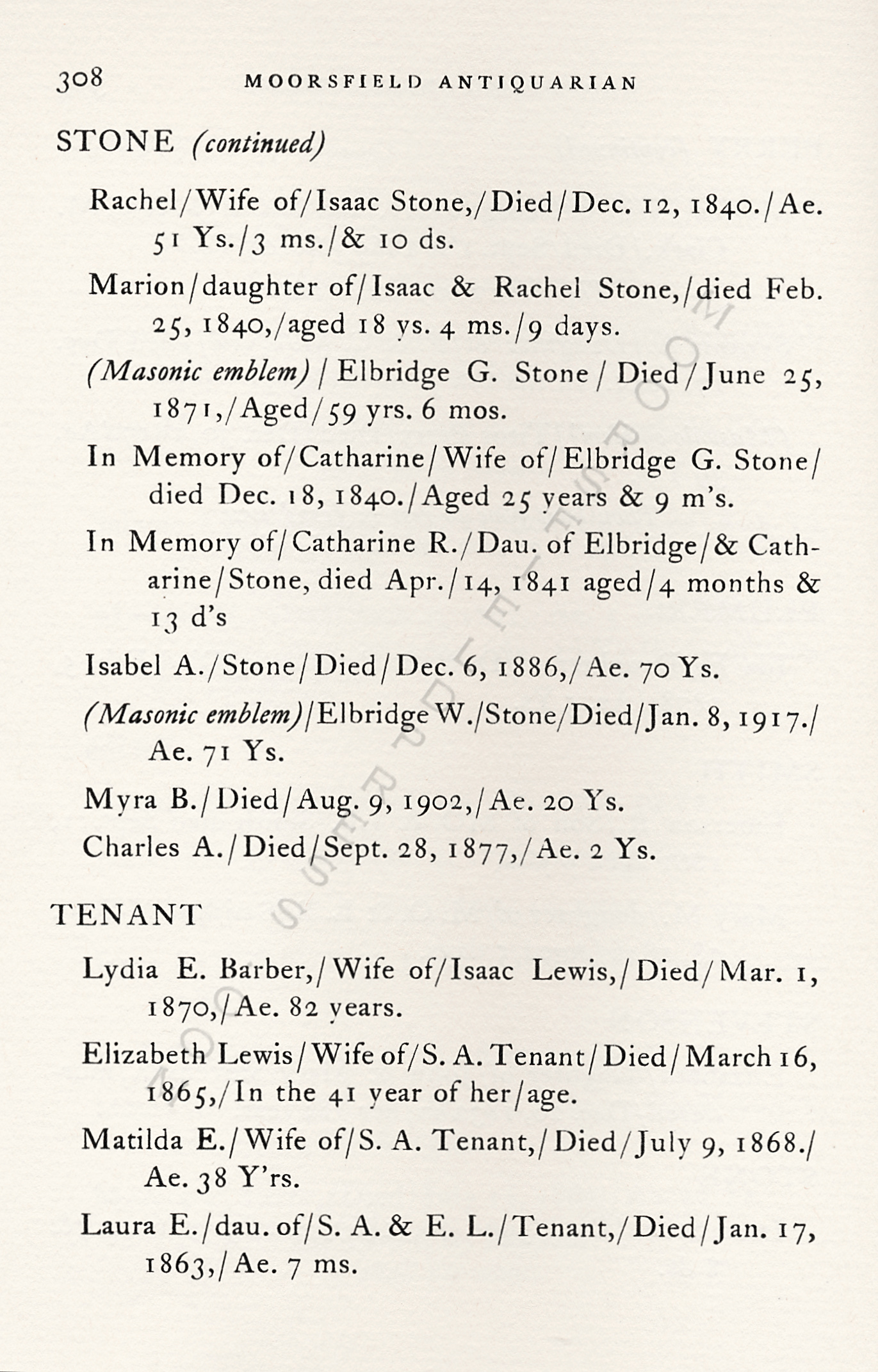 |
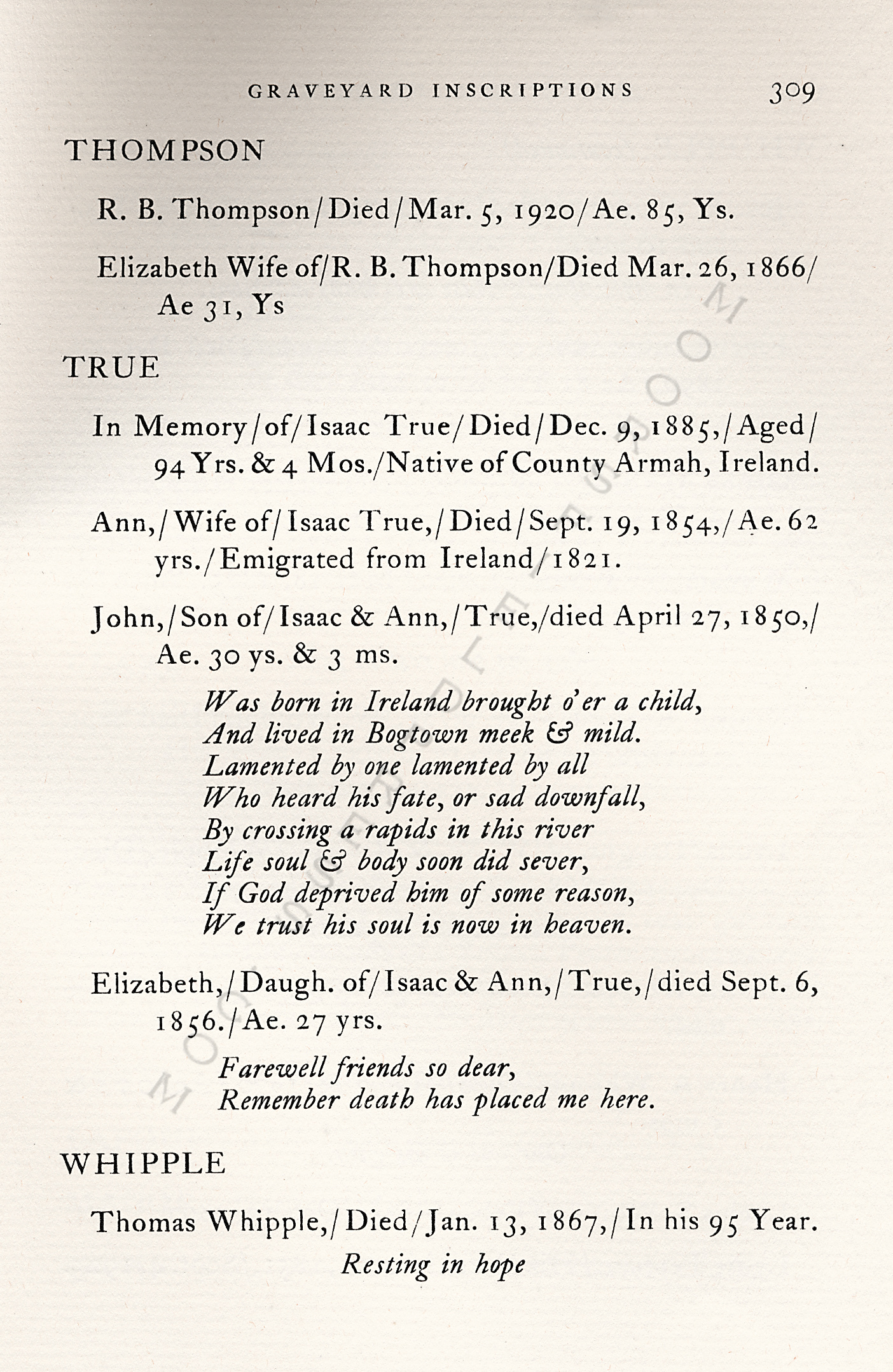 |
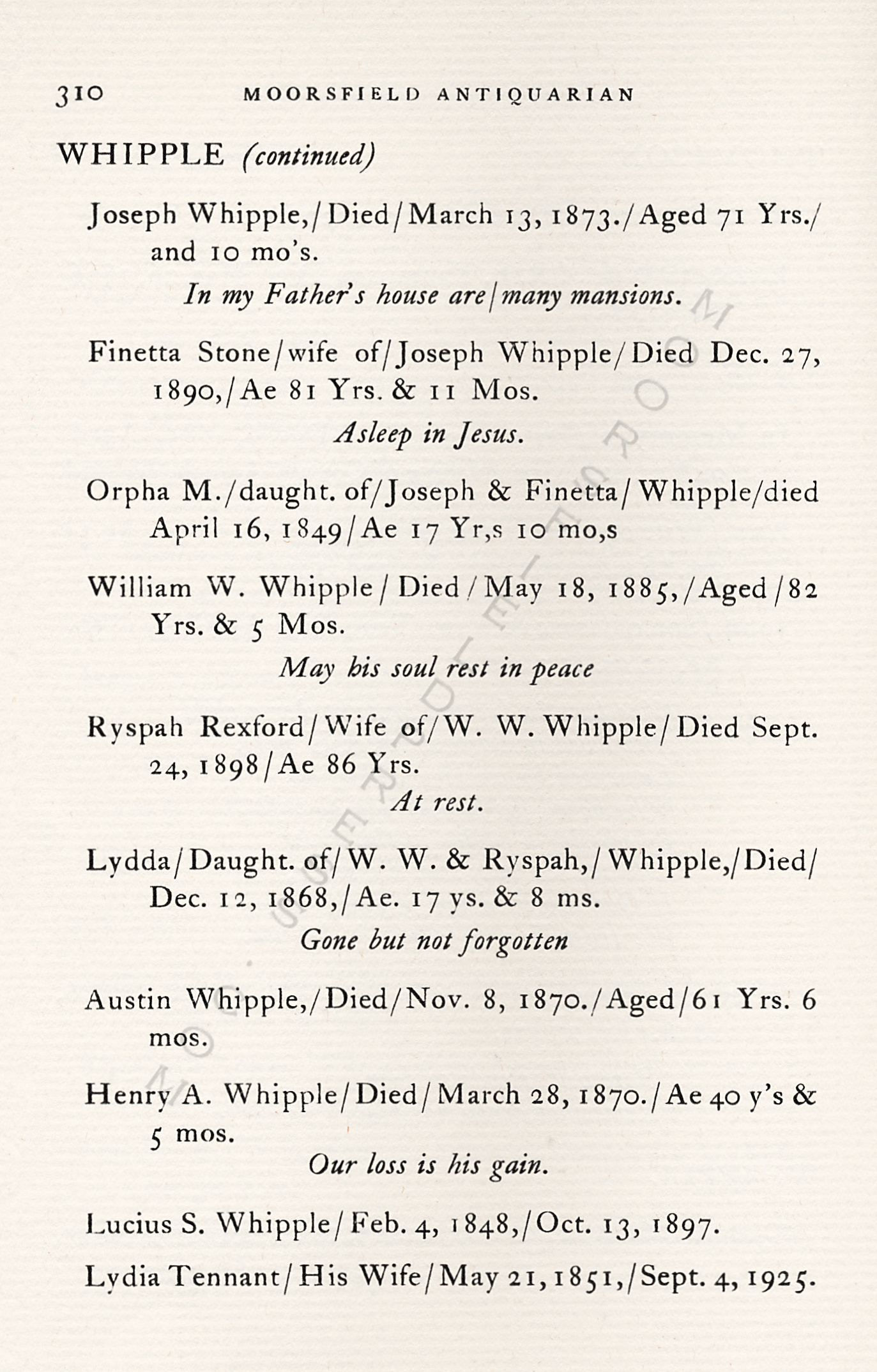 |
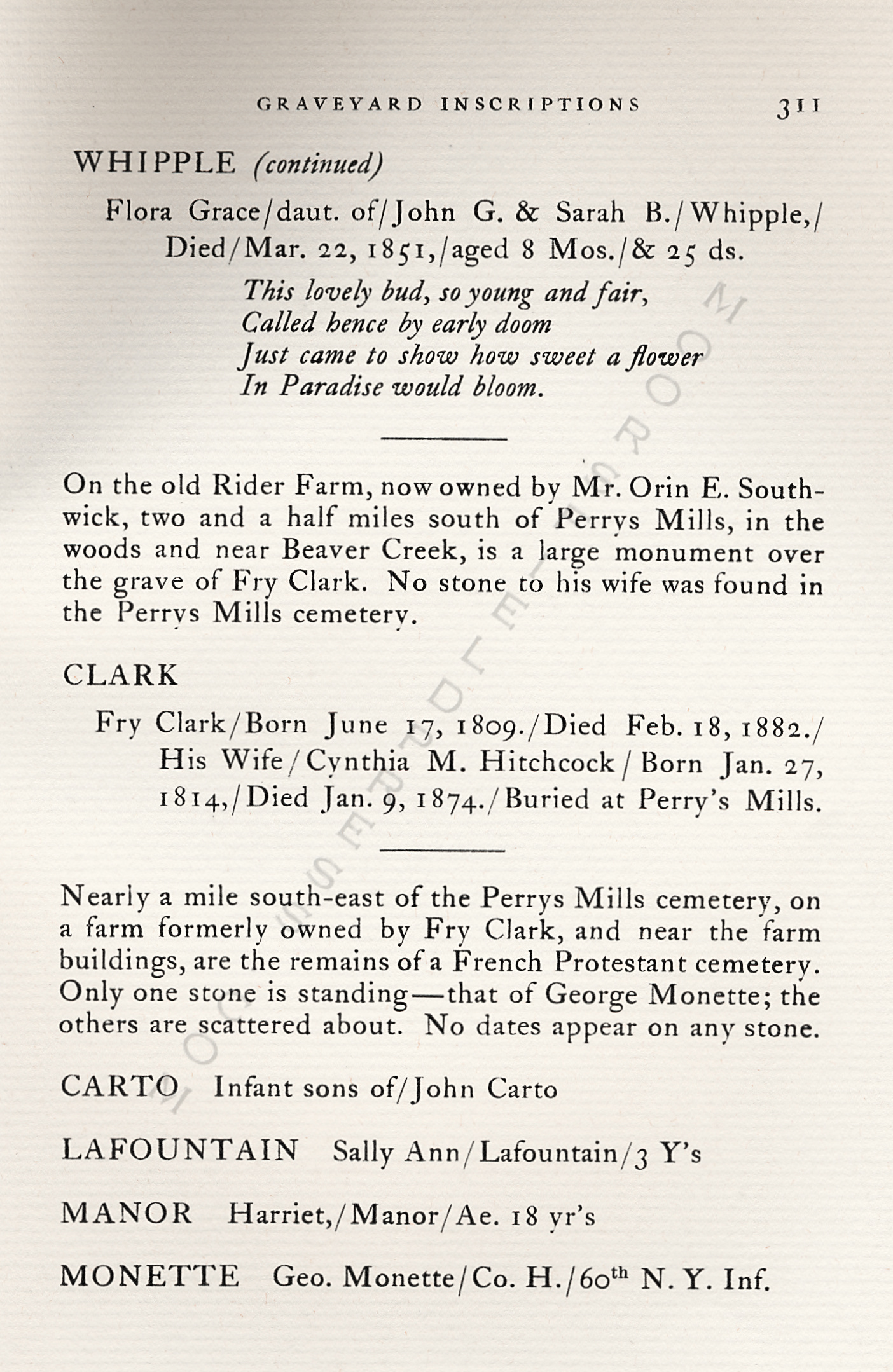 |
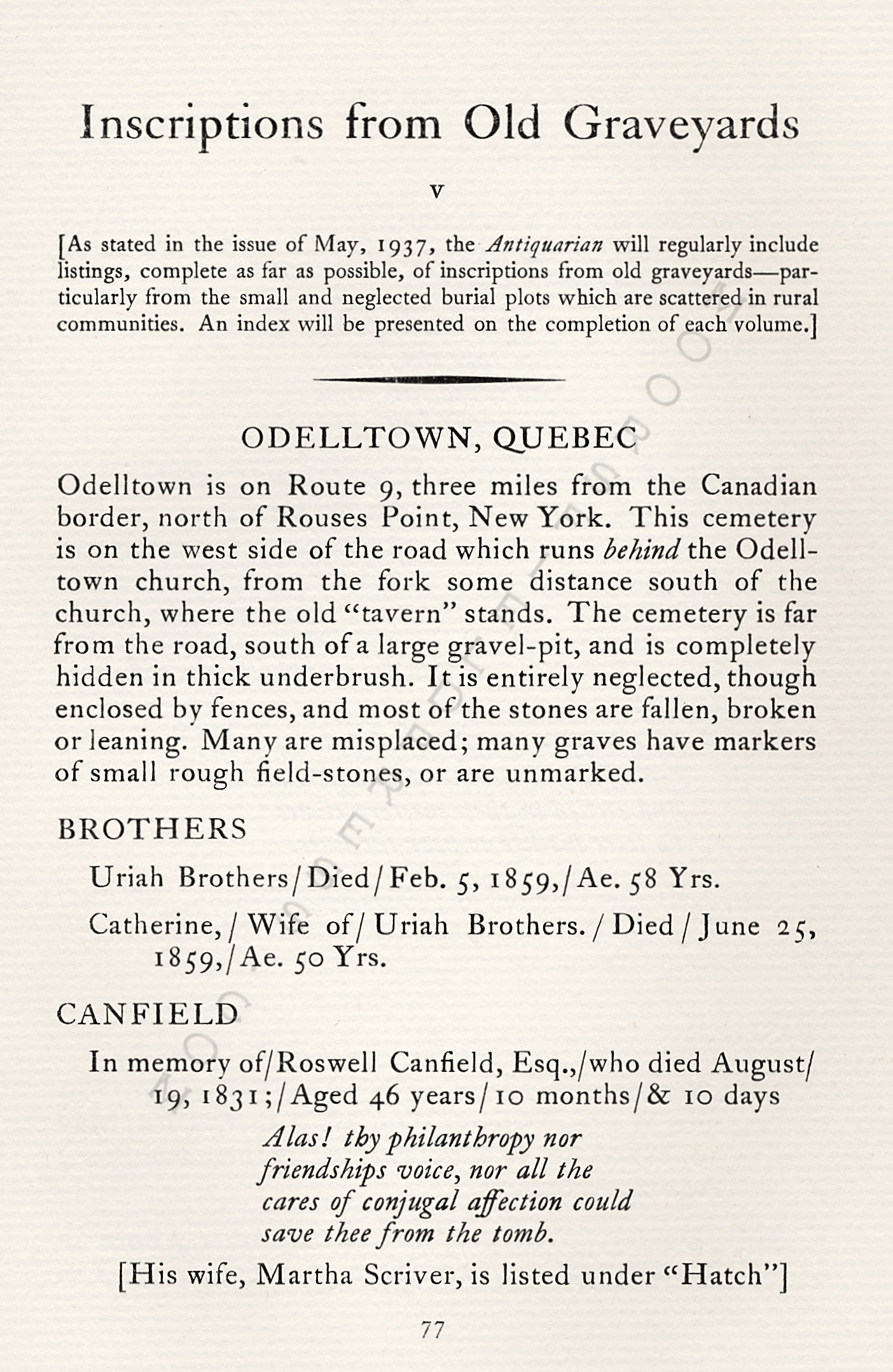 |
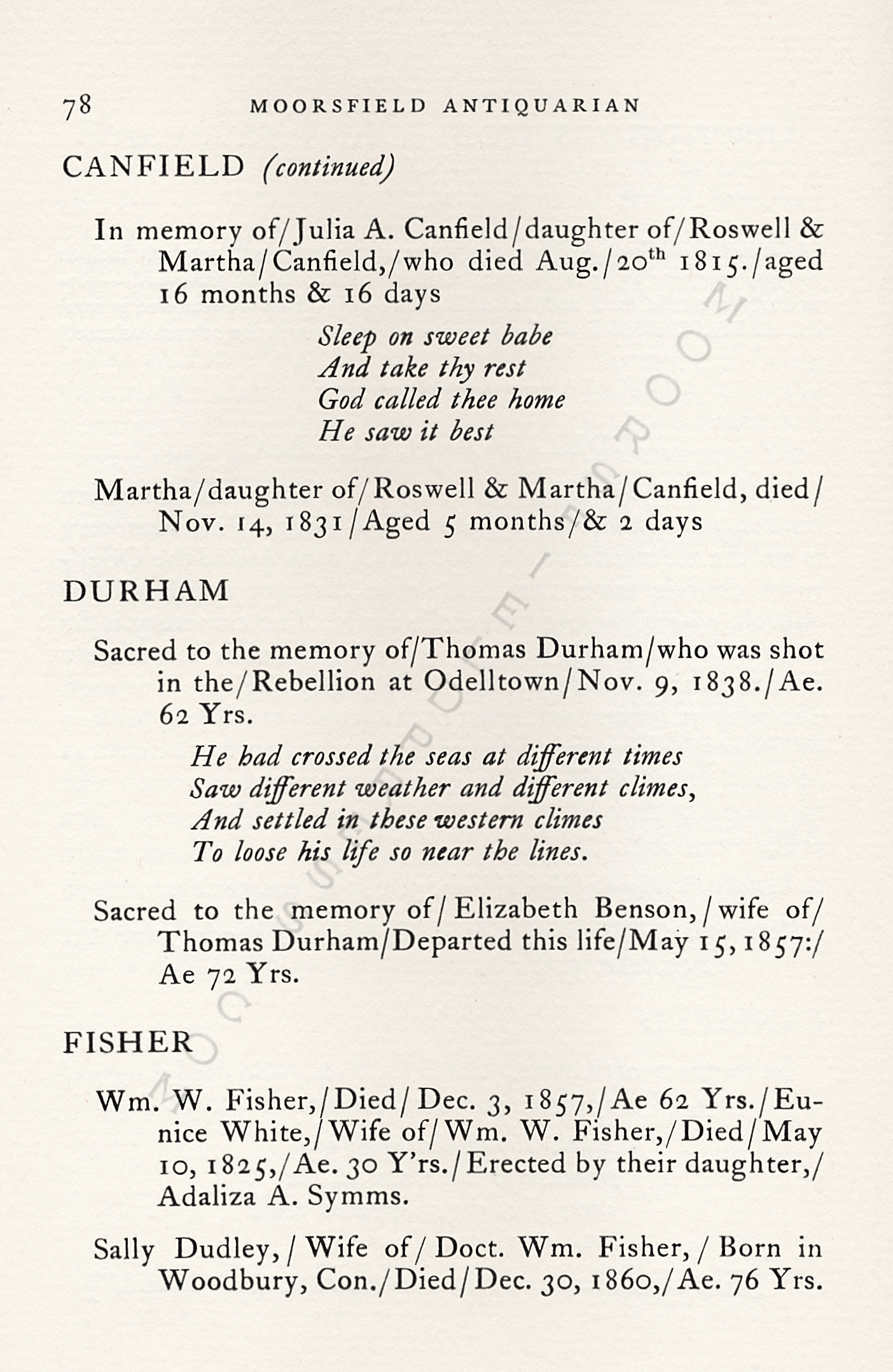 |
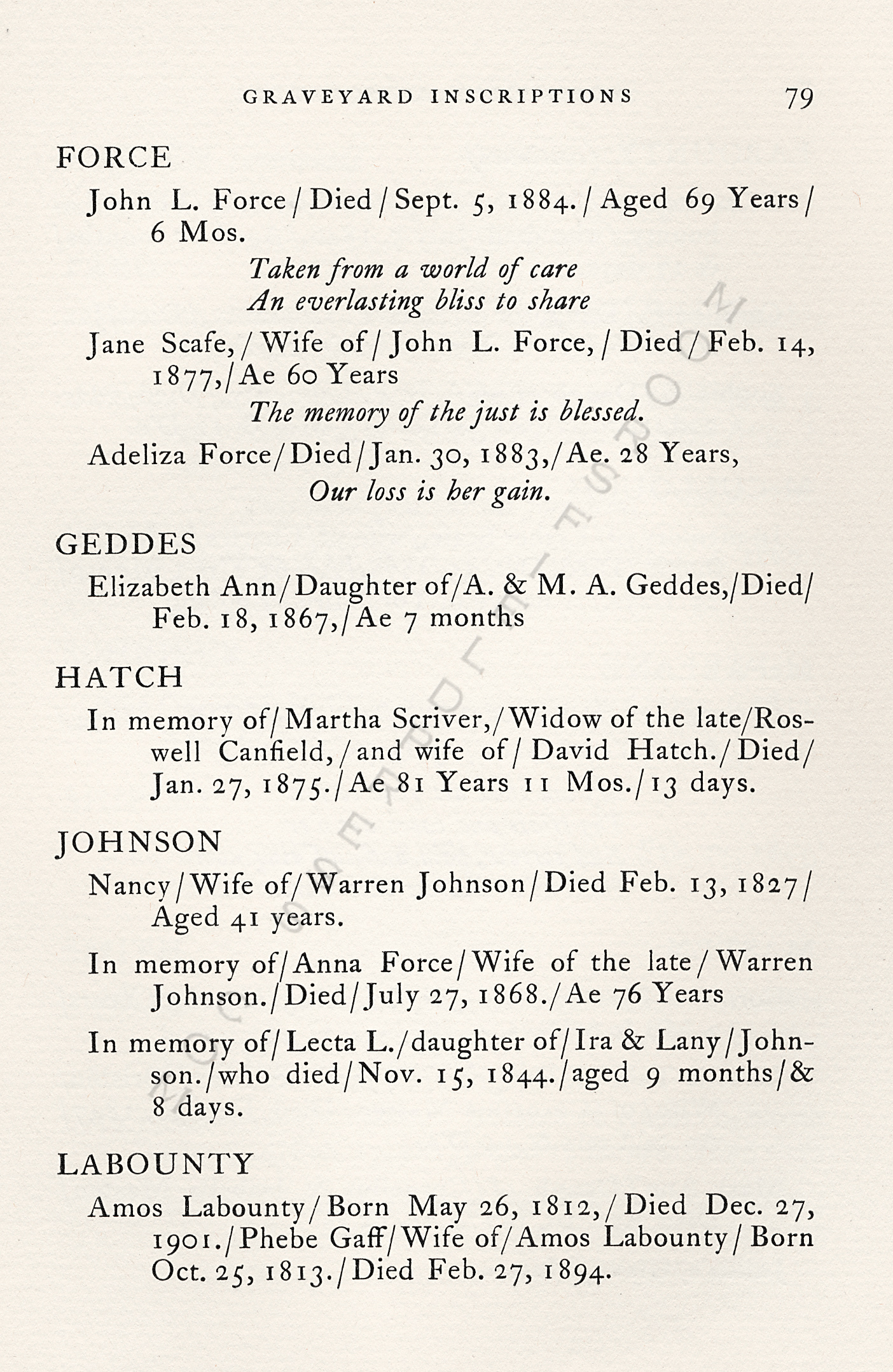 |
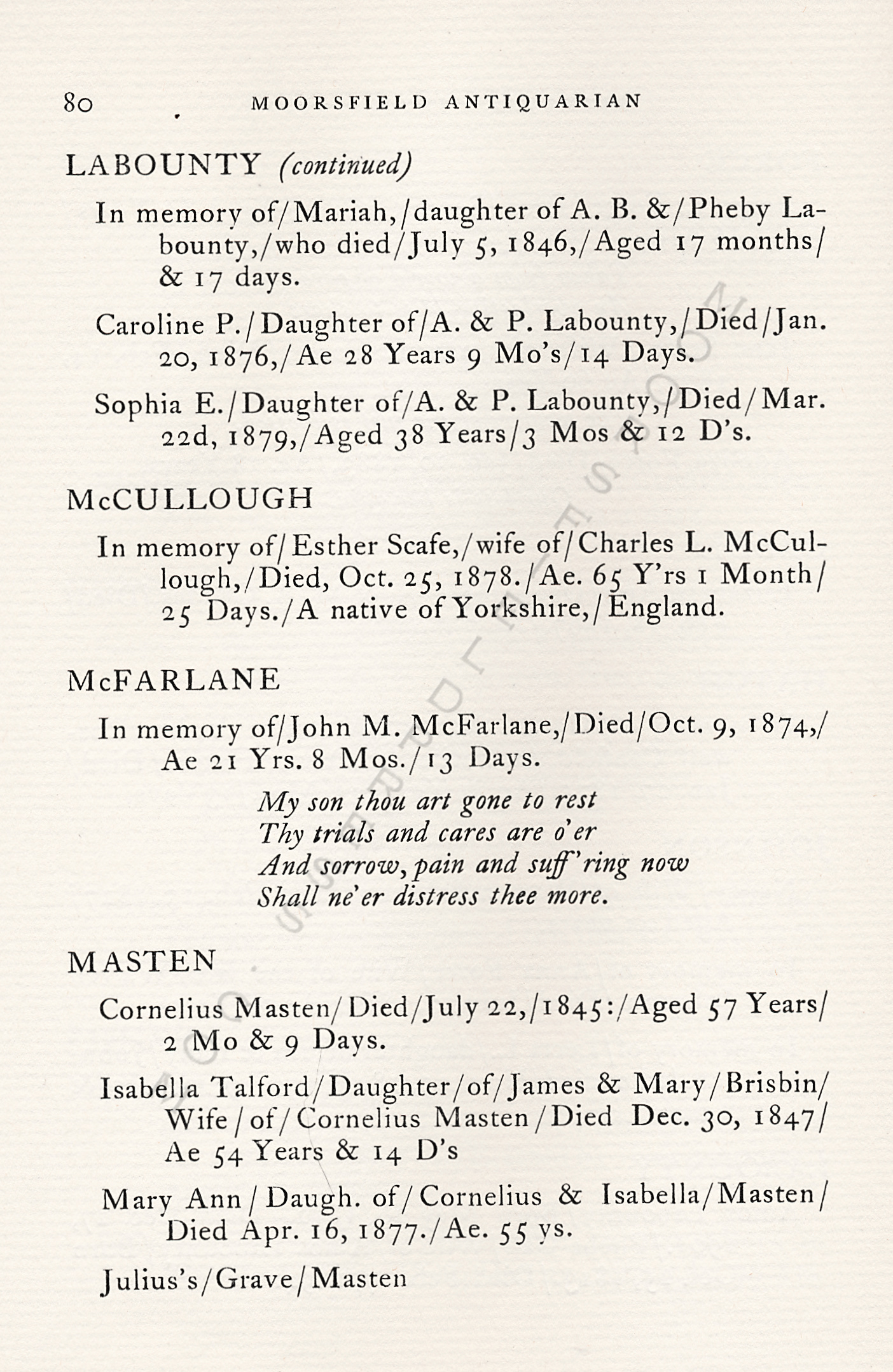 |
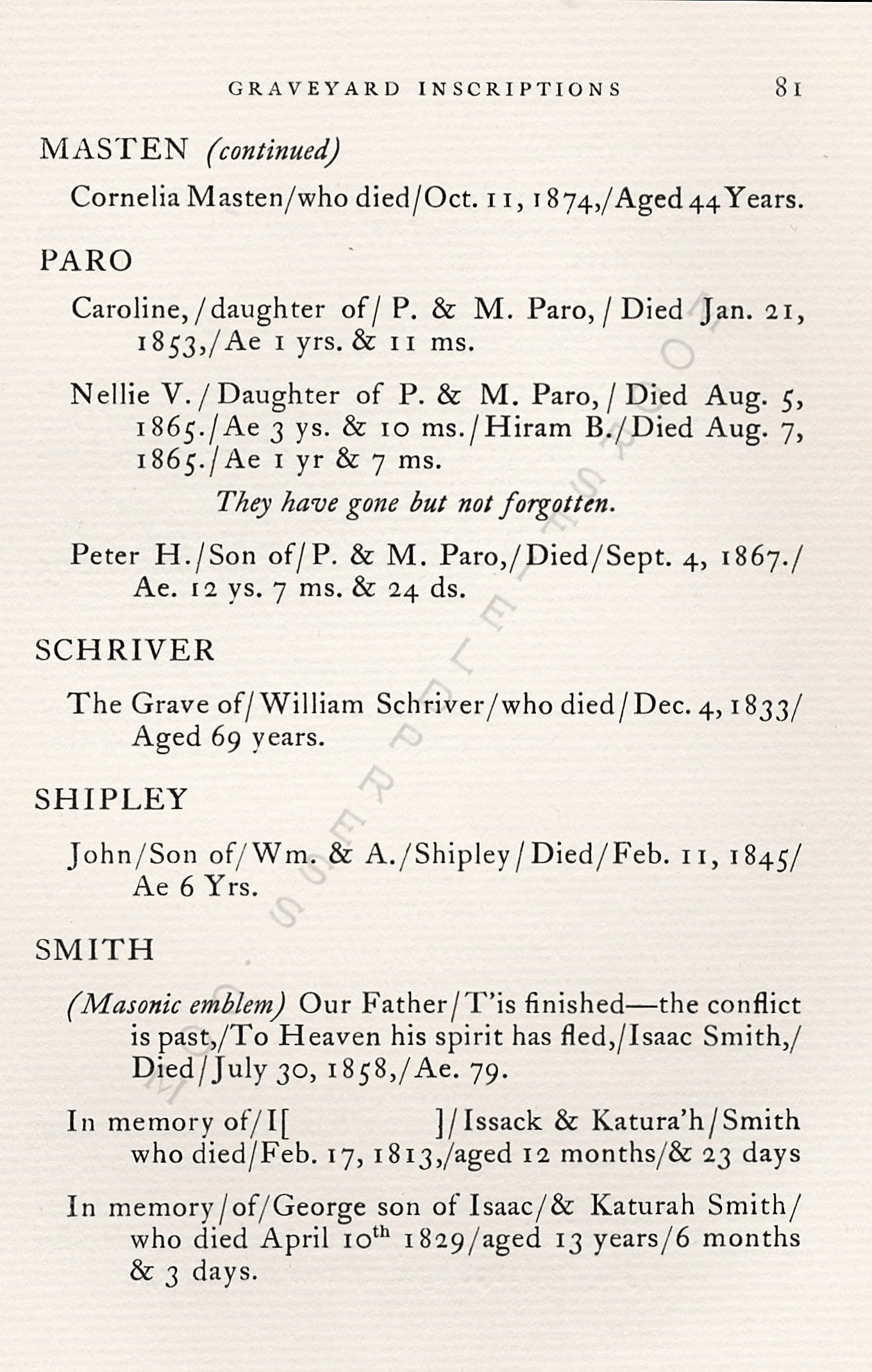 |
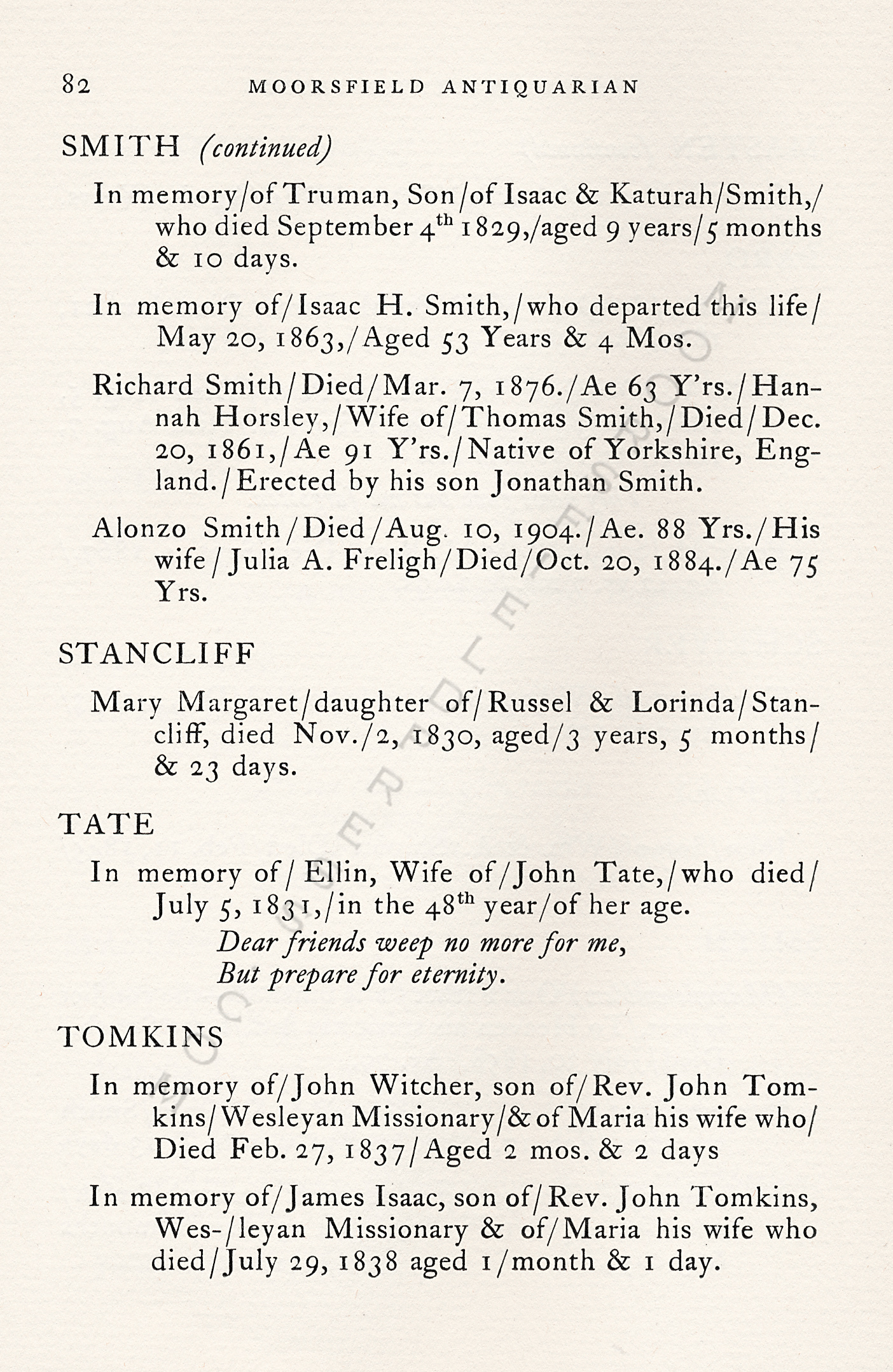 |
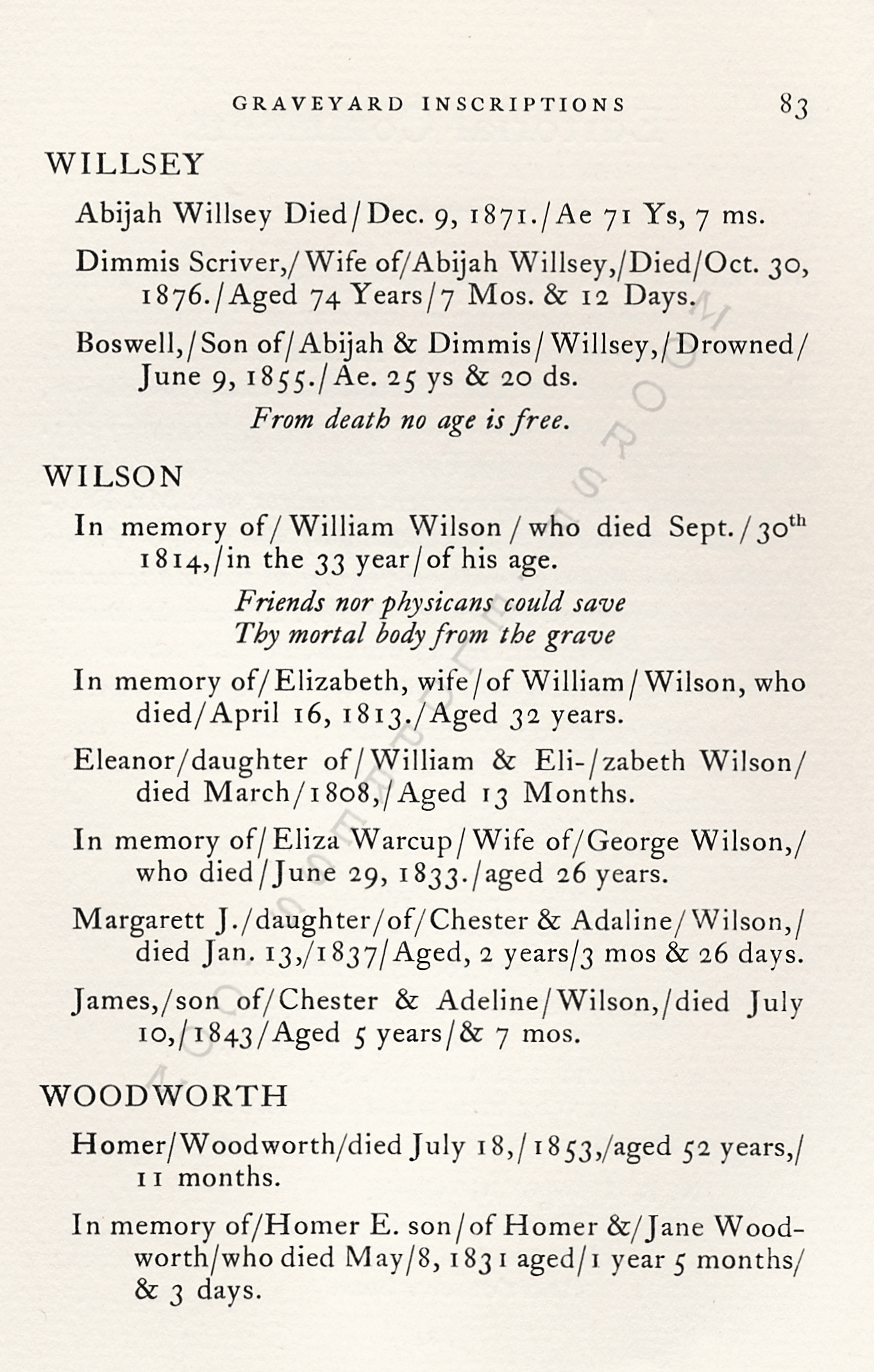 |
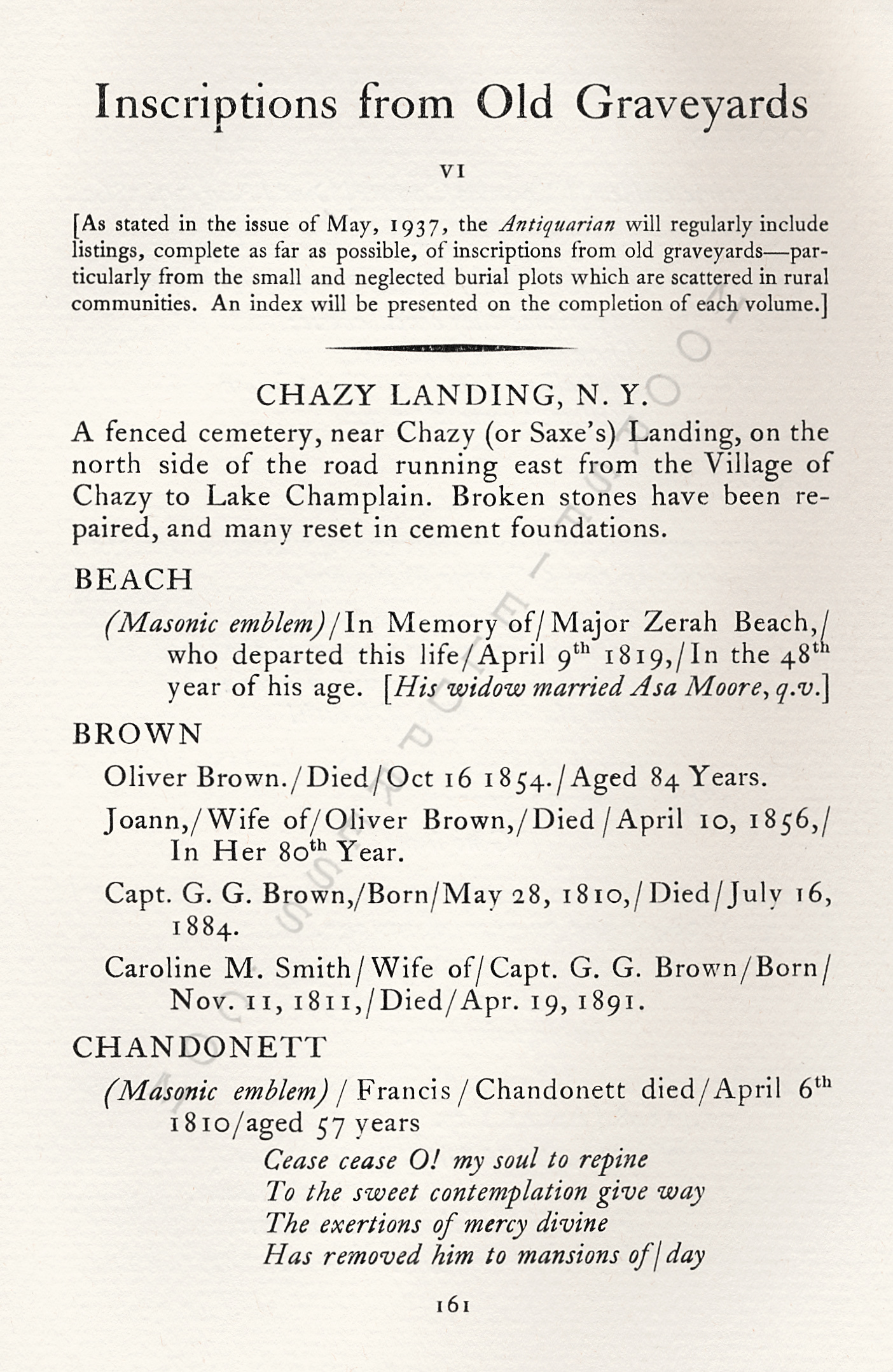 |
 |
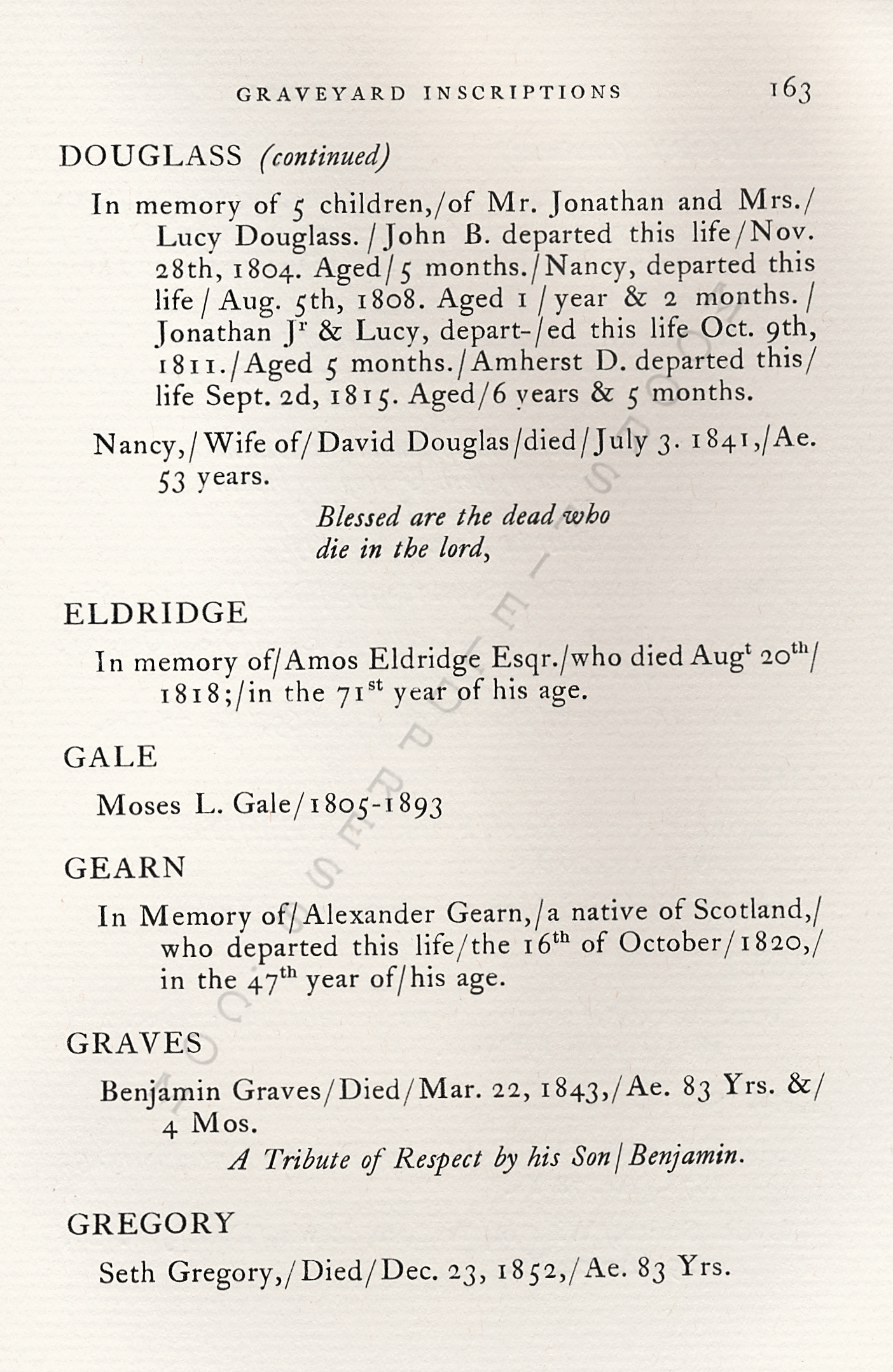 |
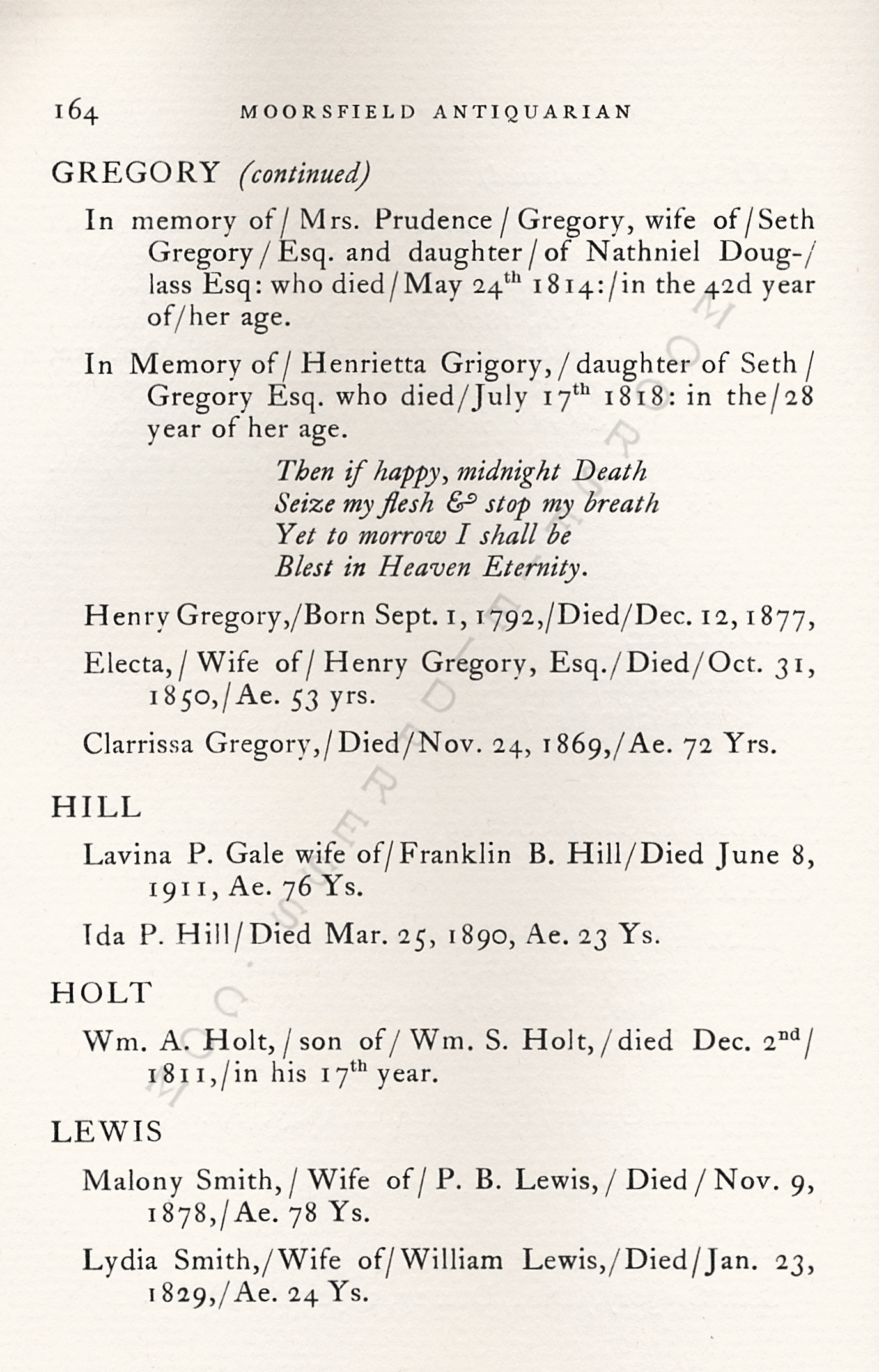 |
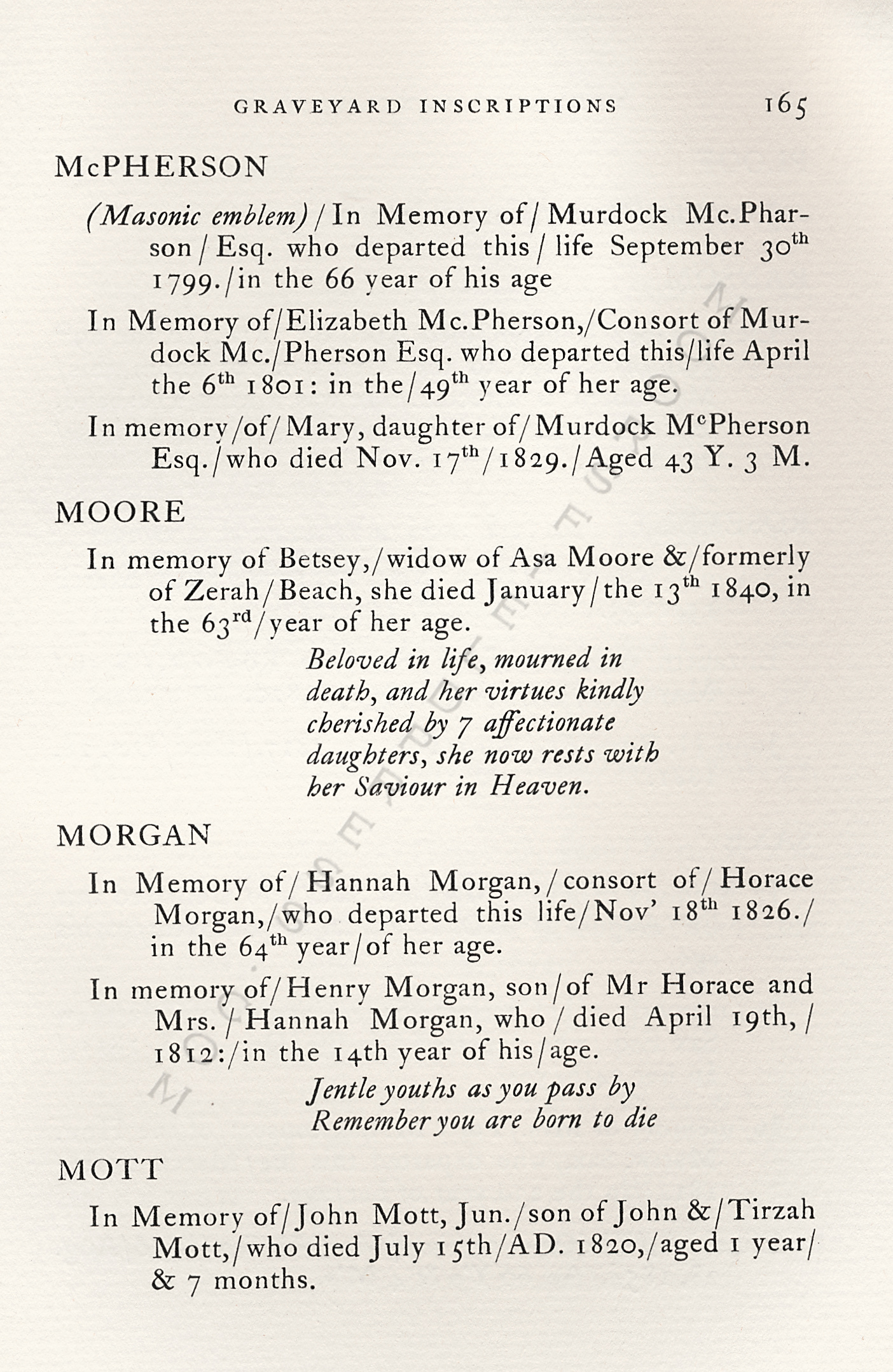 |
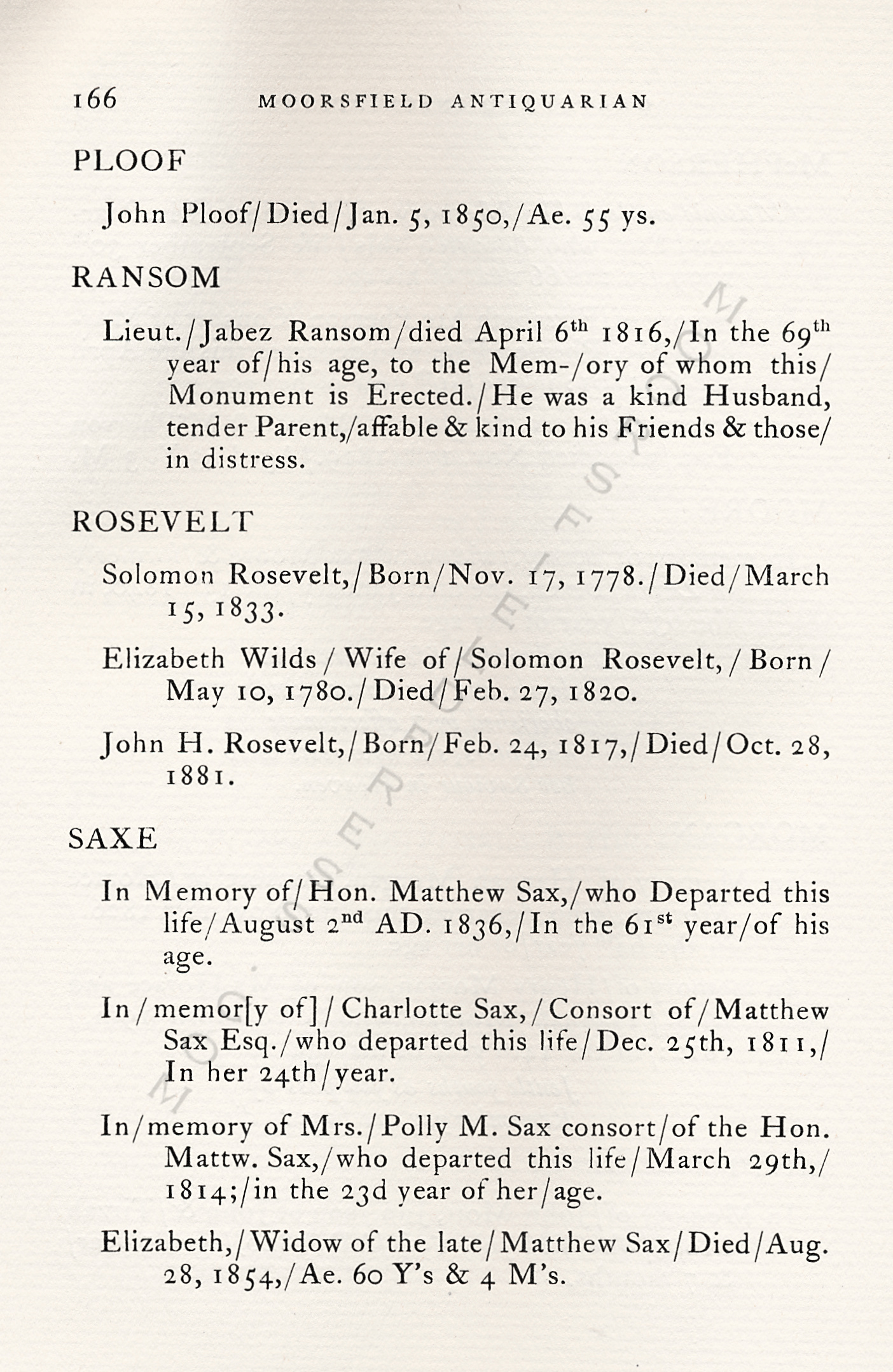 |
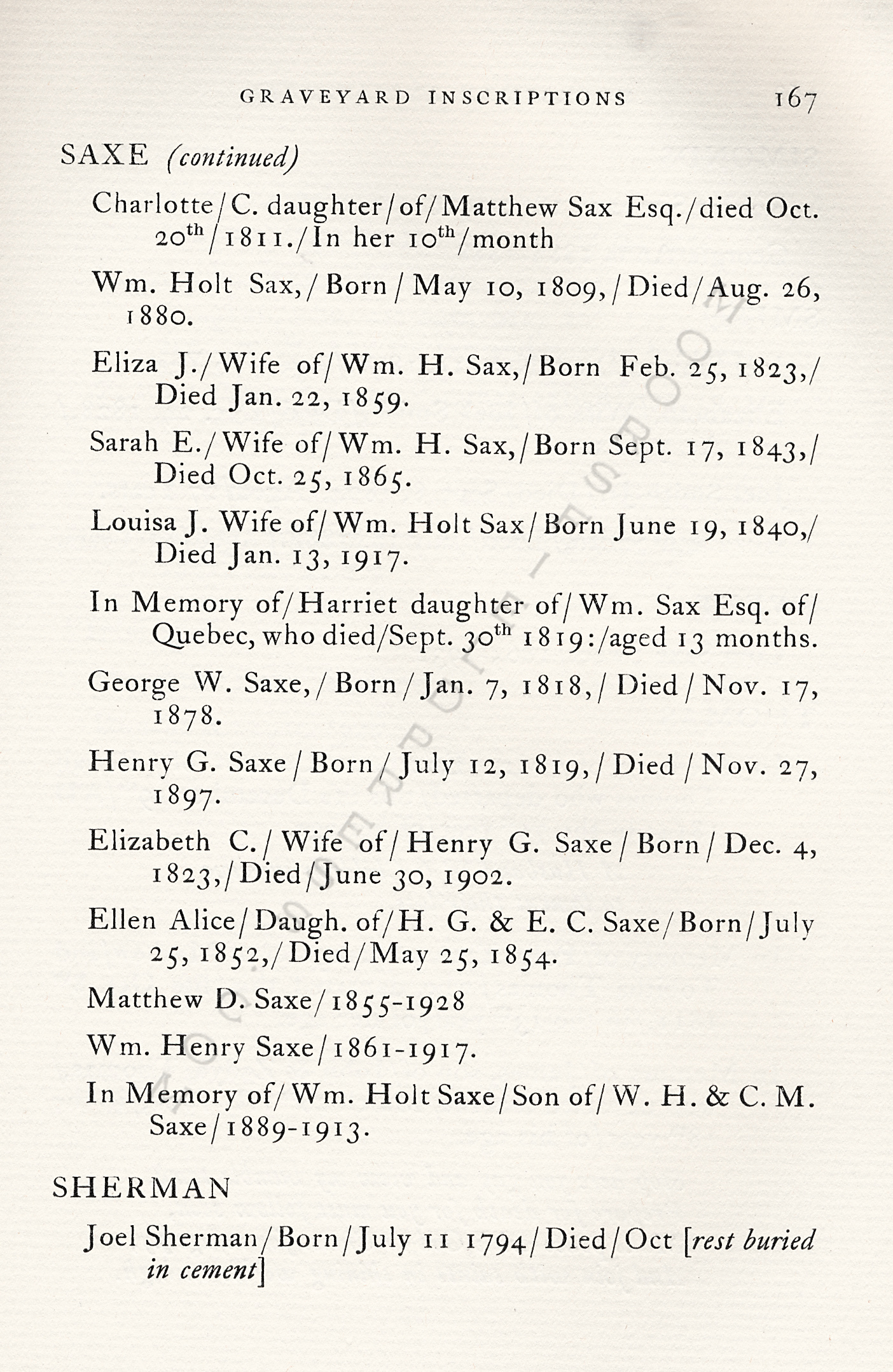 |
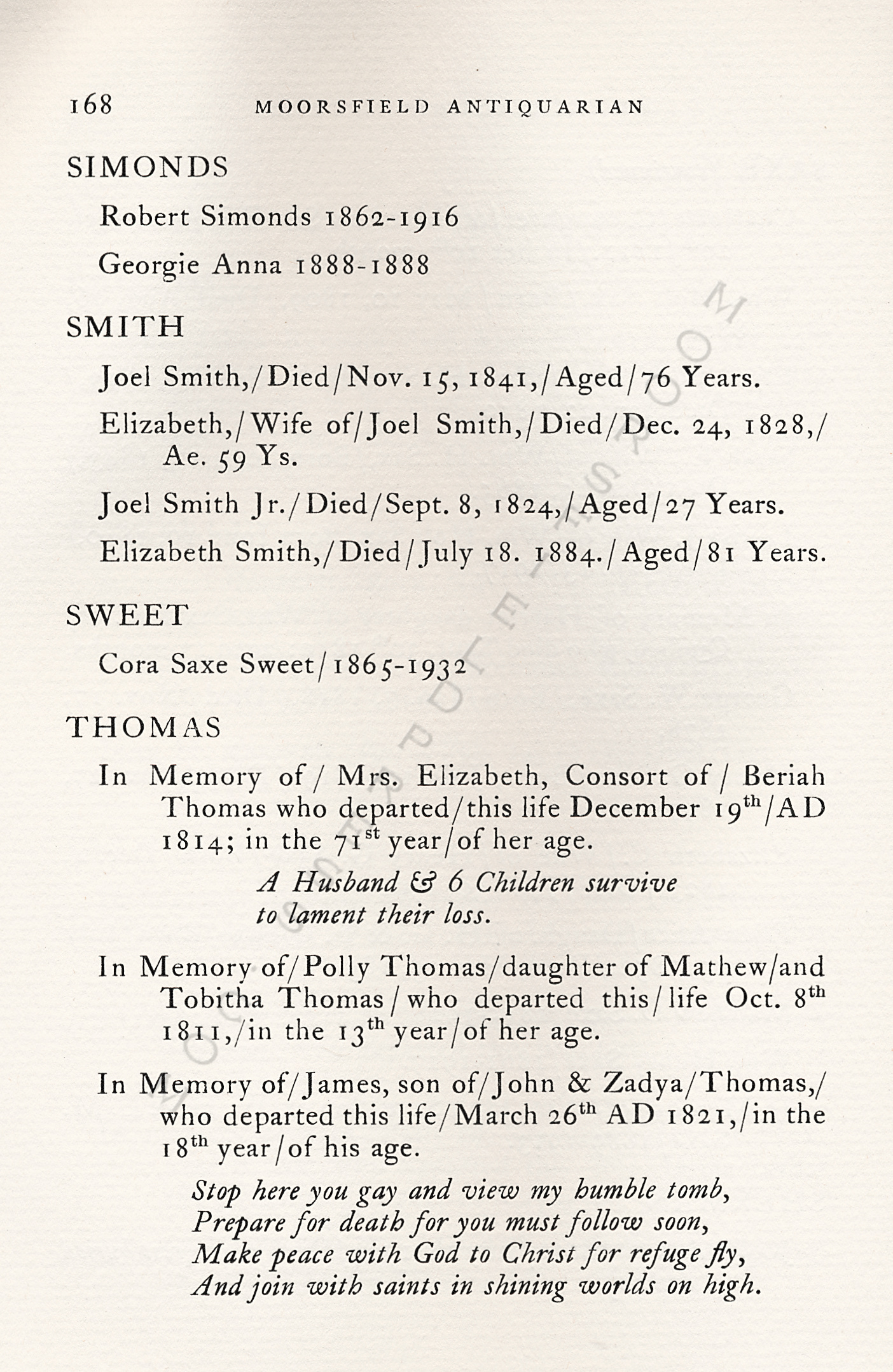 |
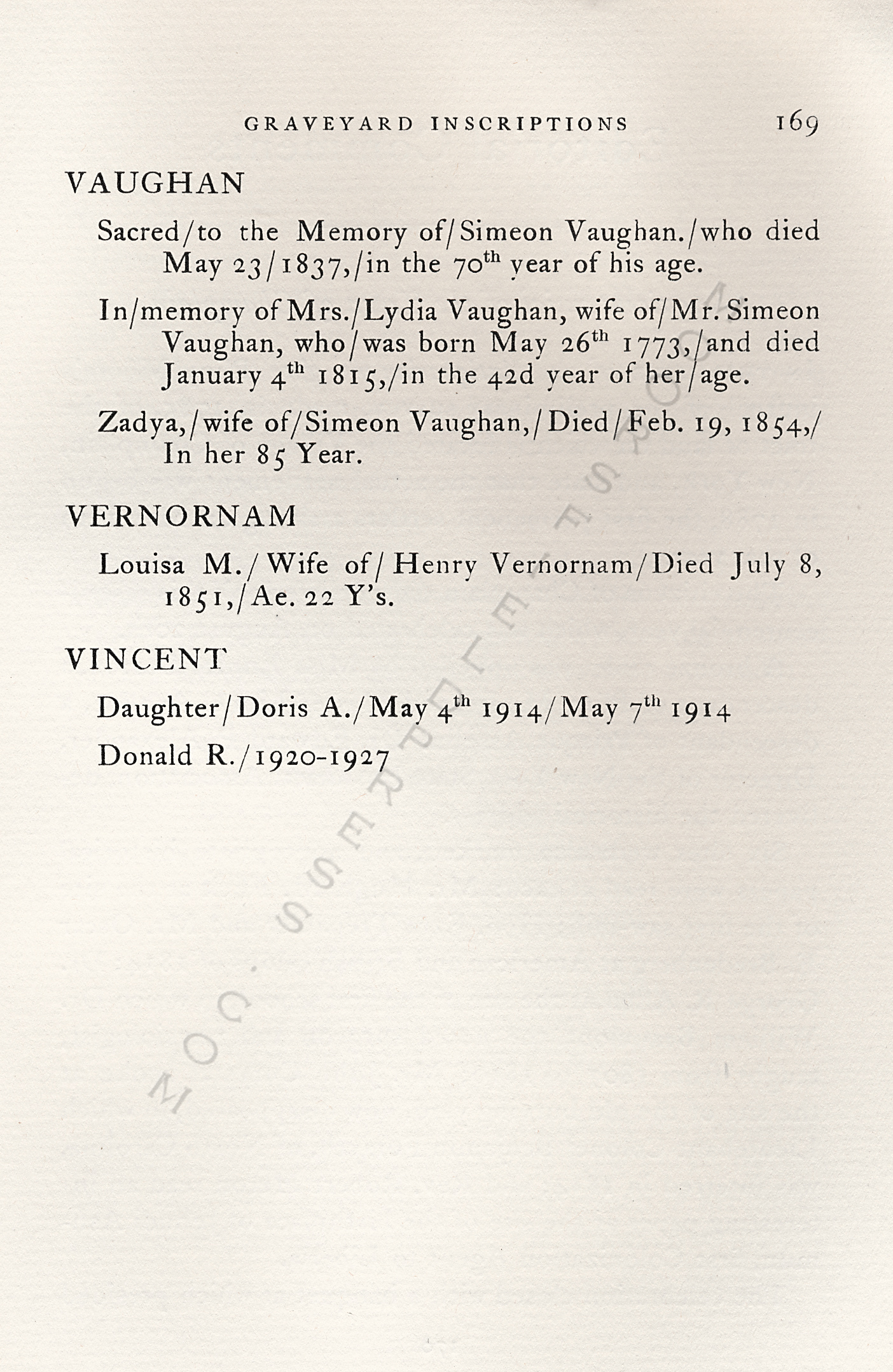 |
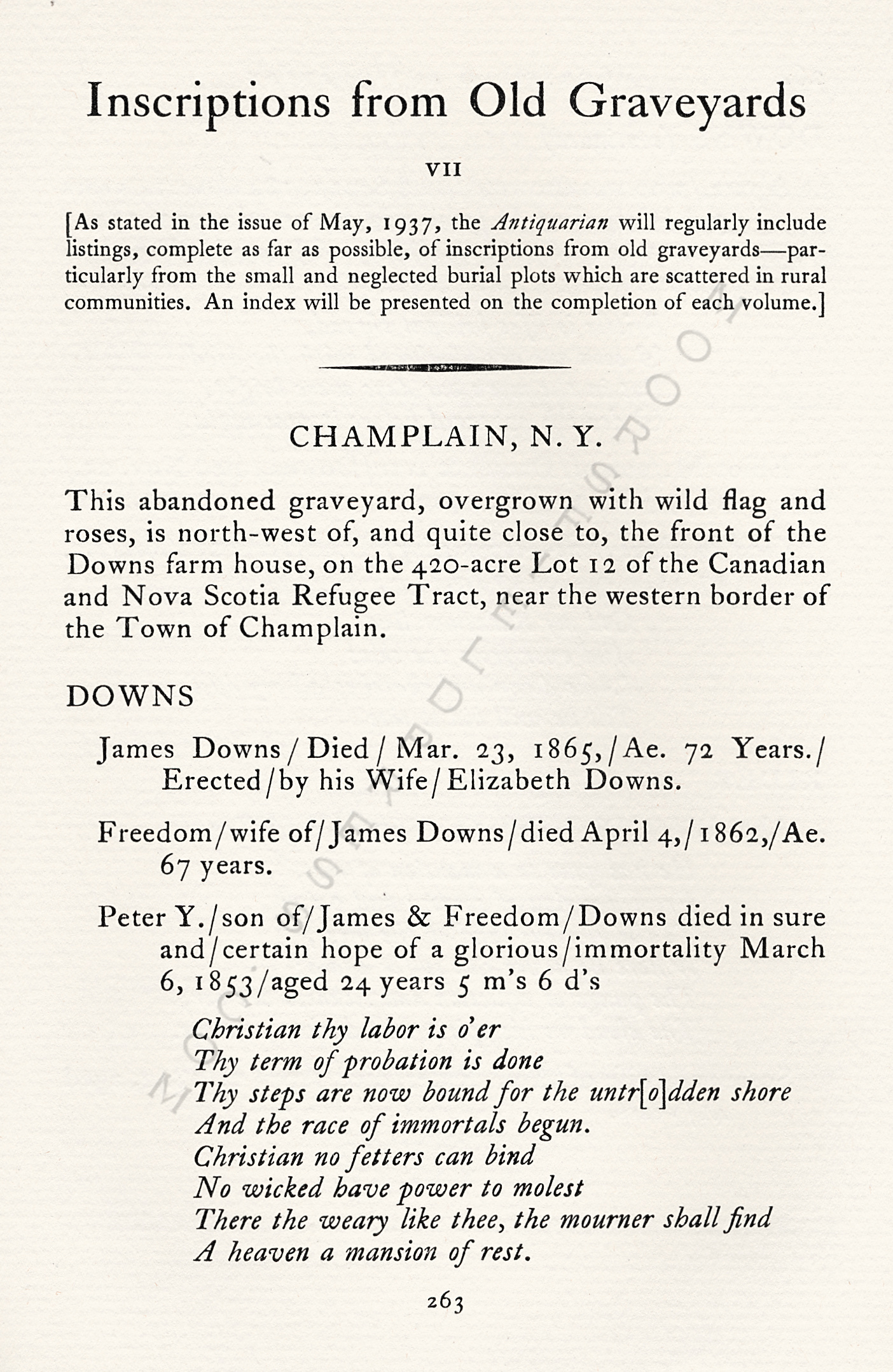 |
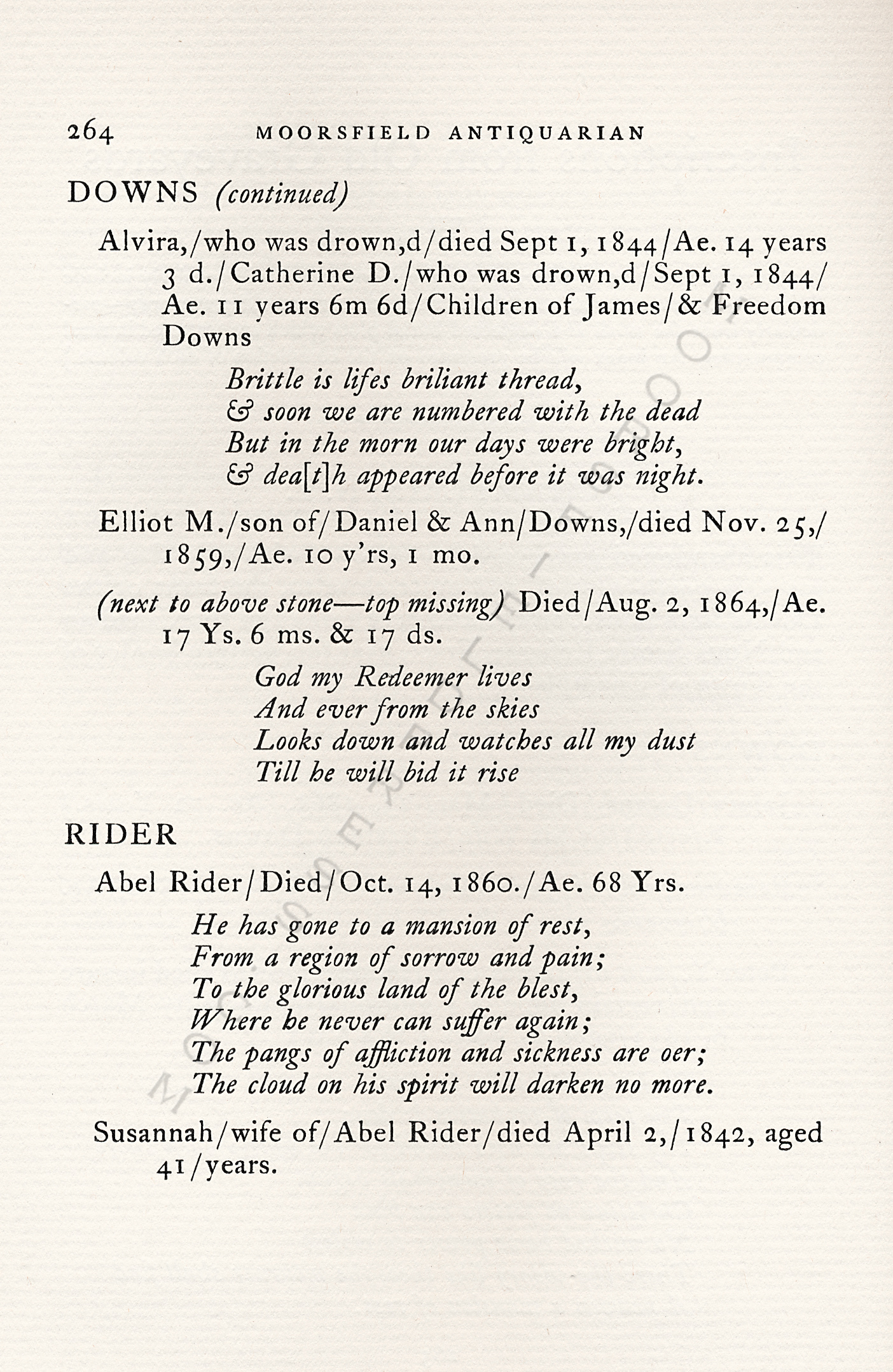 |
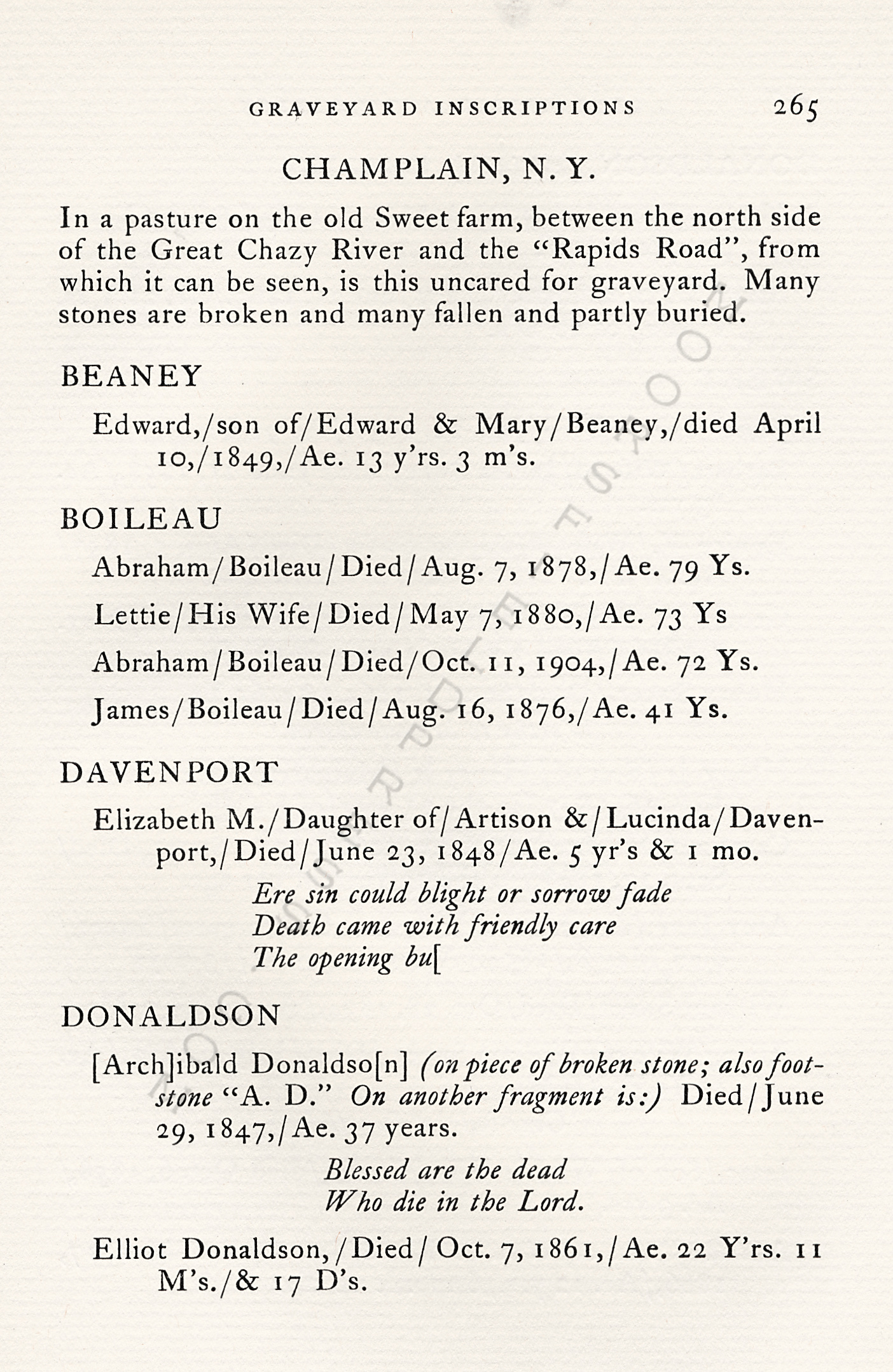 |
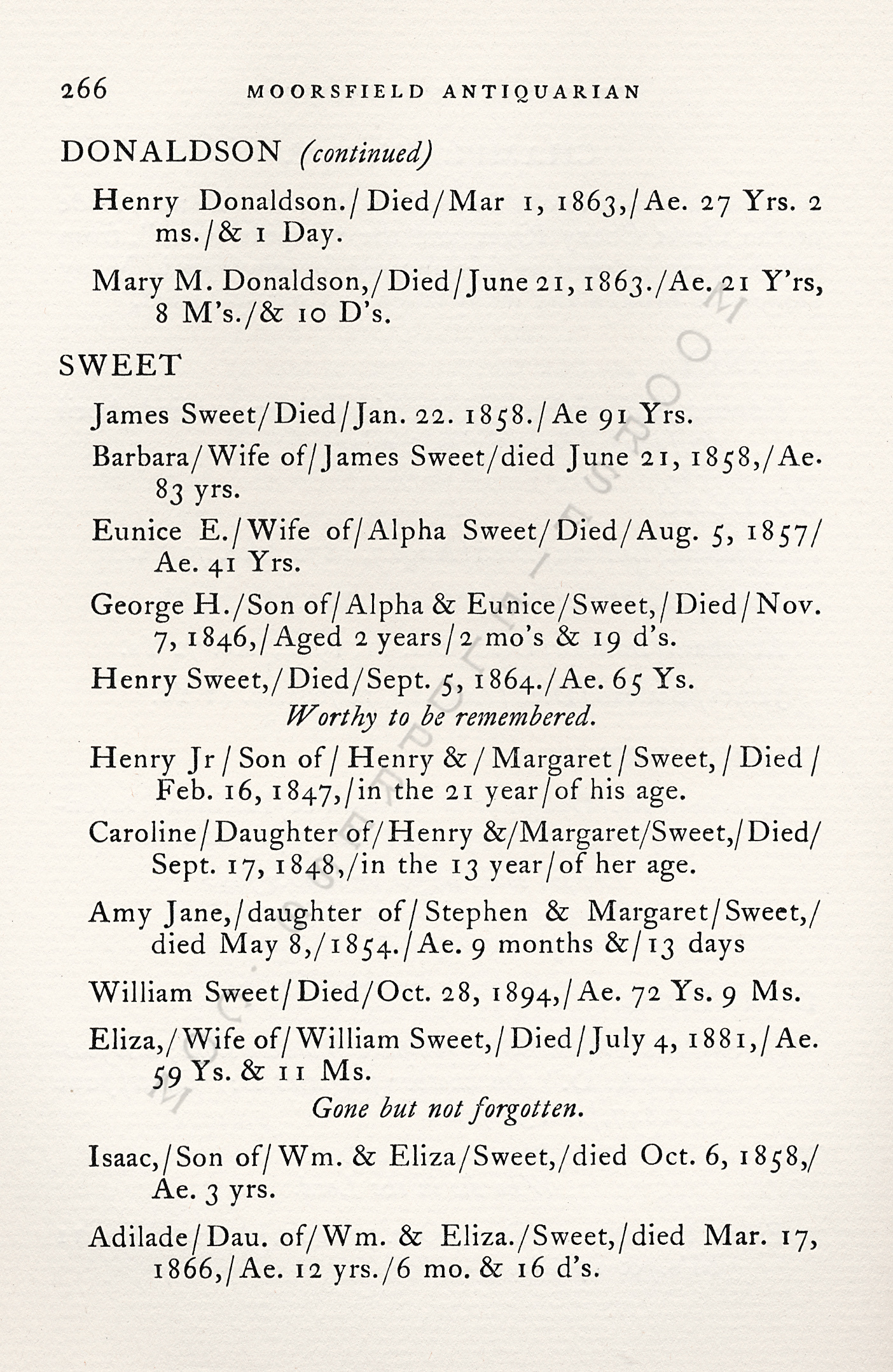 |
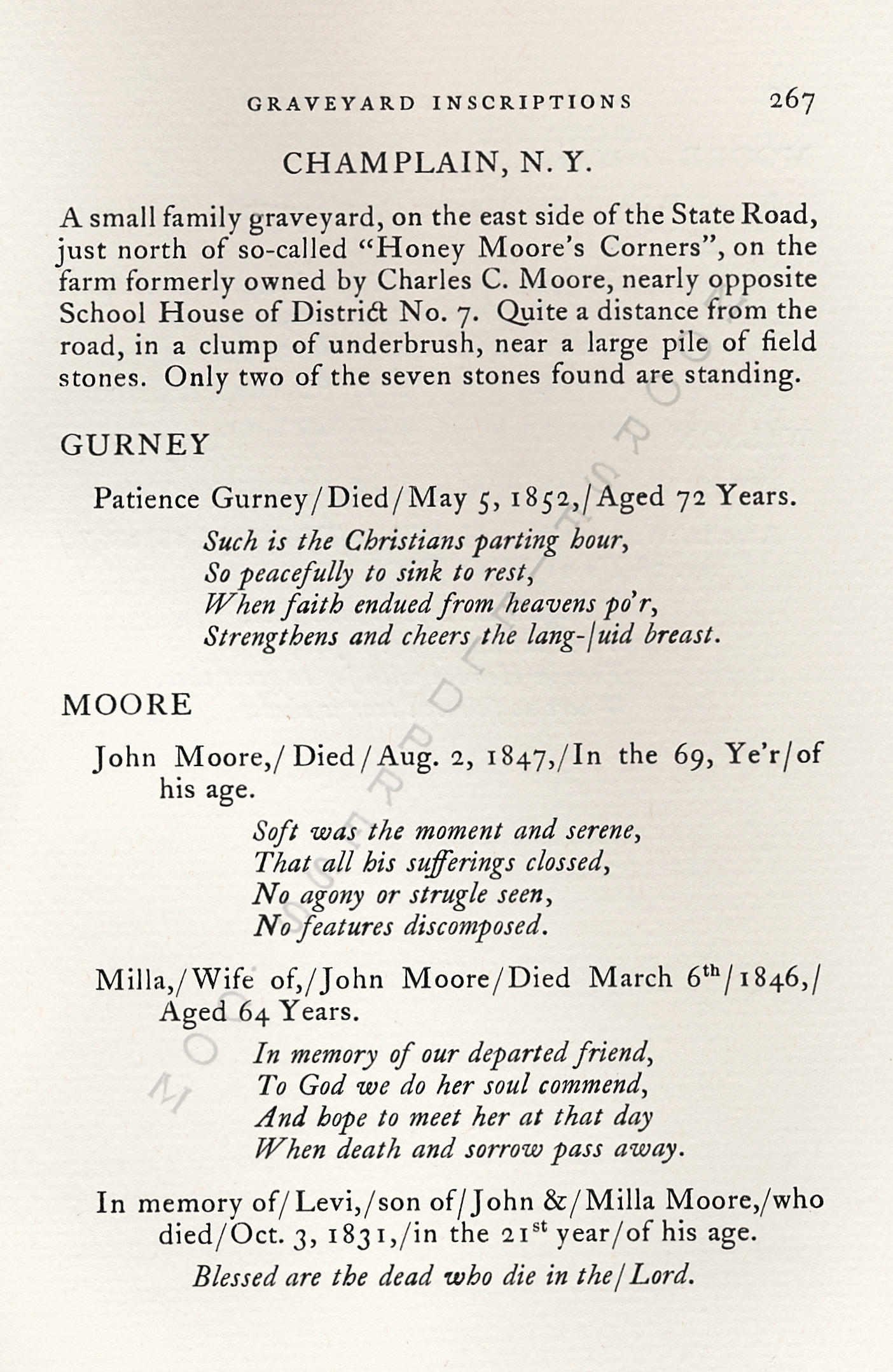 |
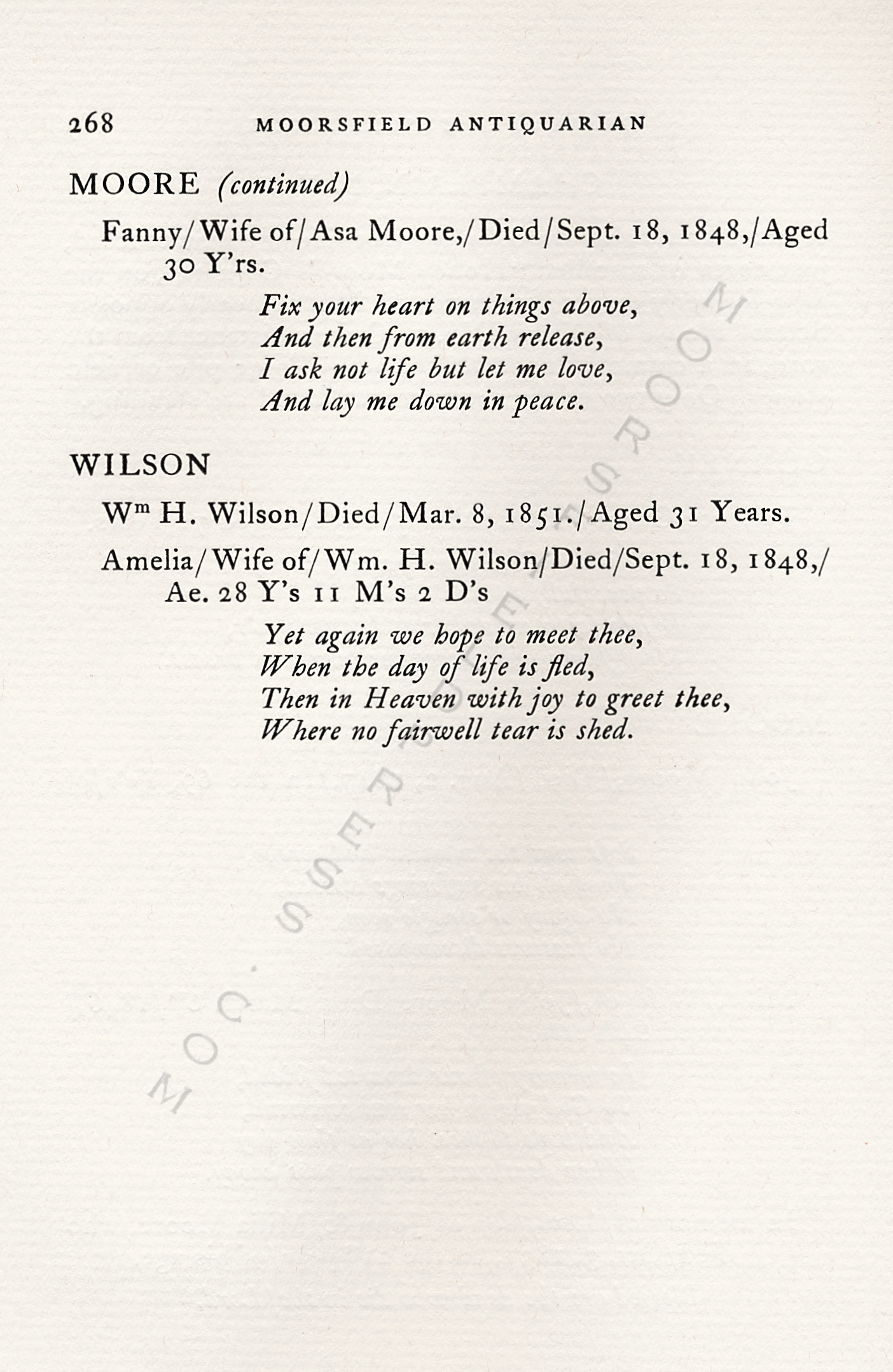 |
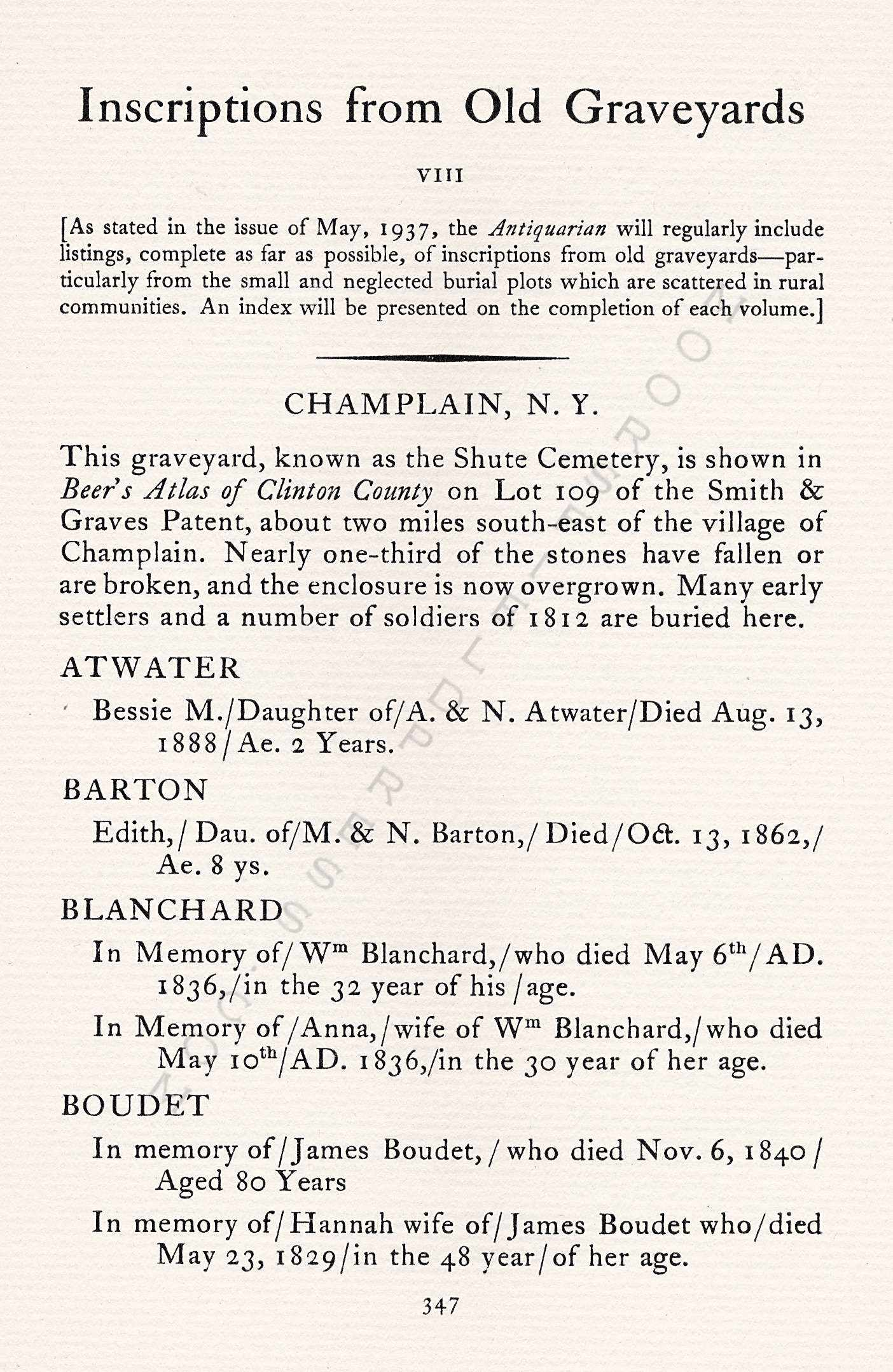 |
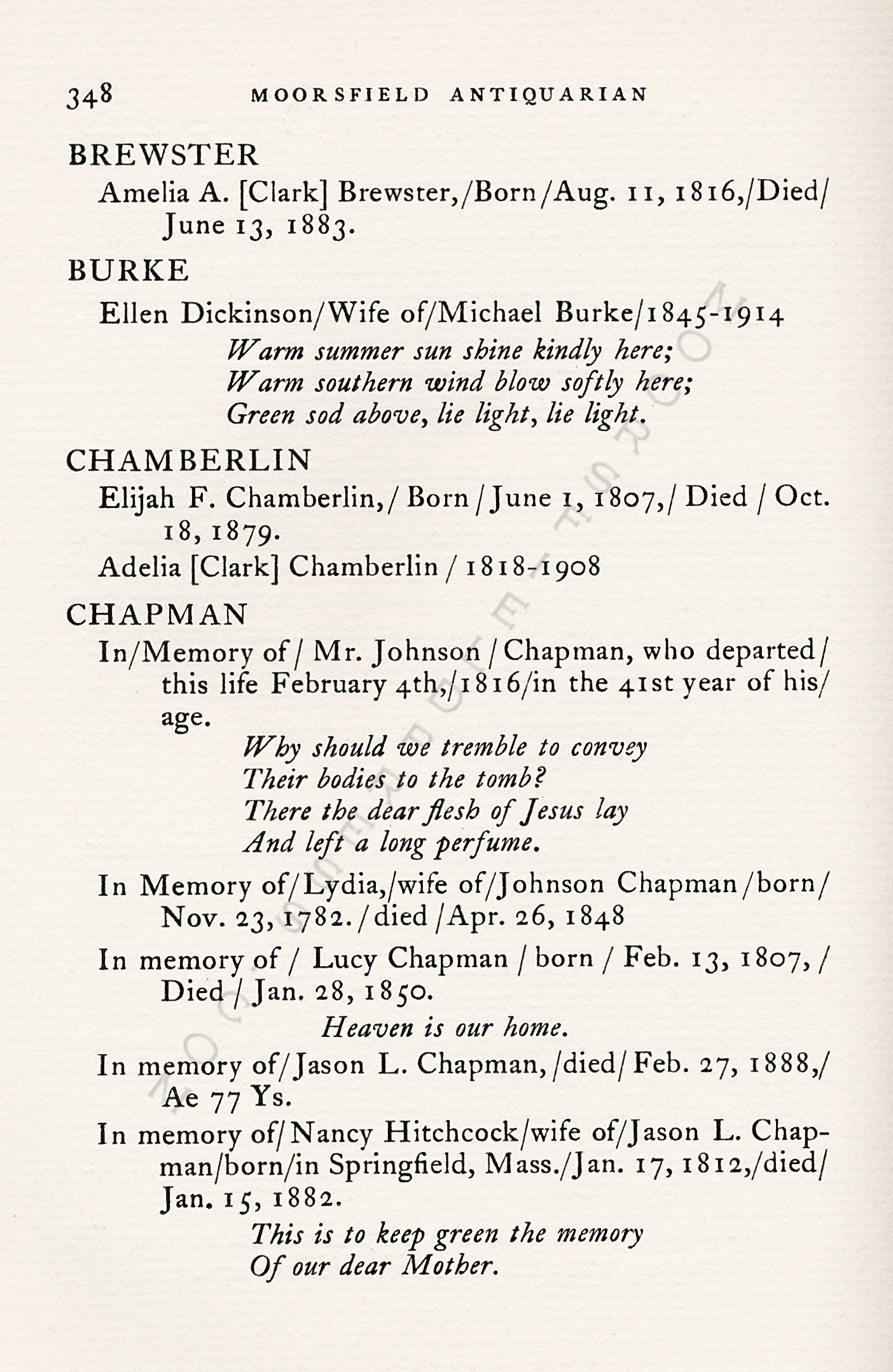 |
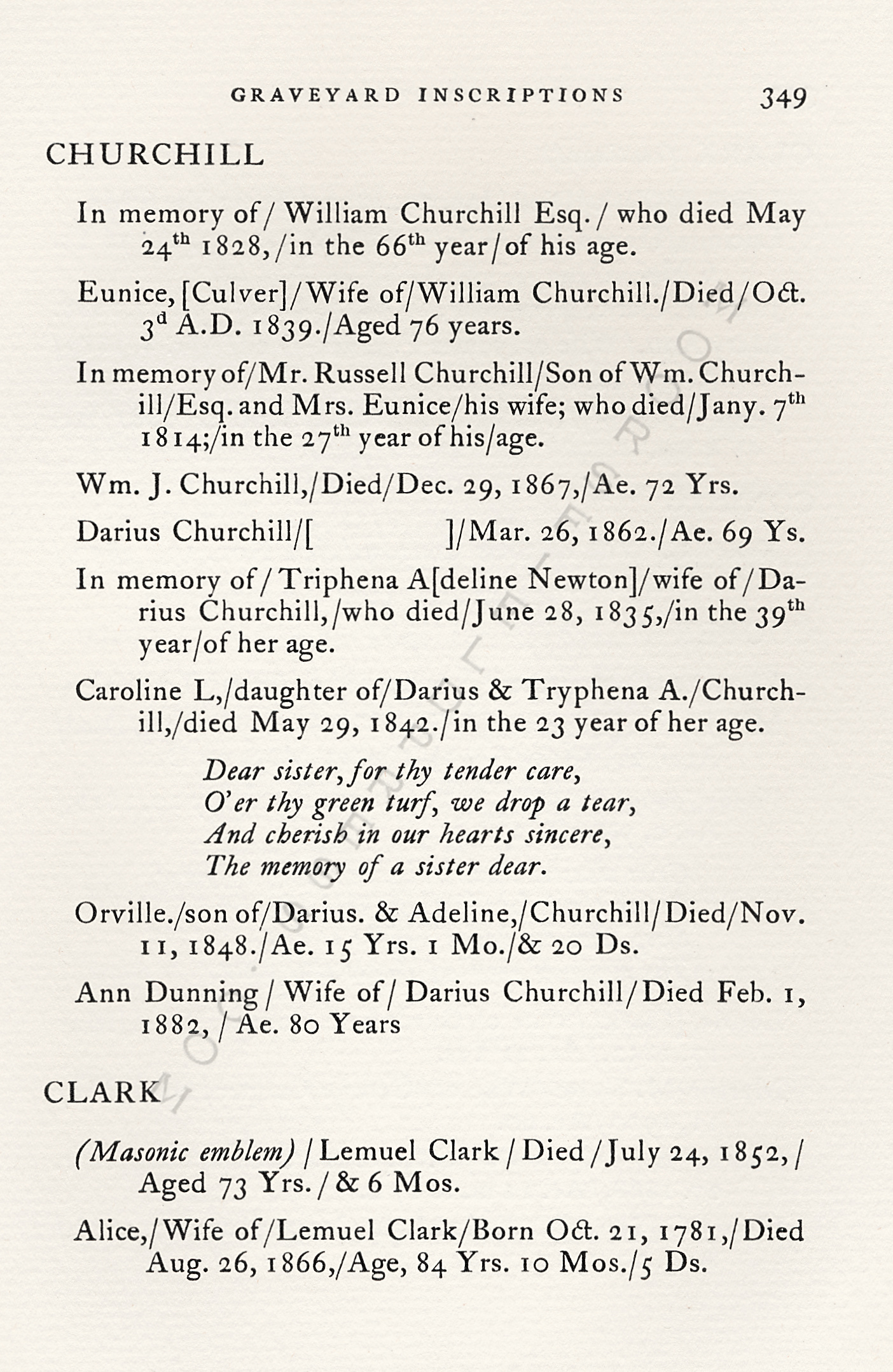 |
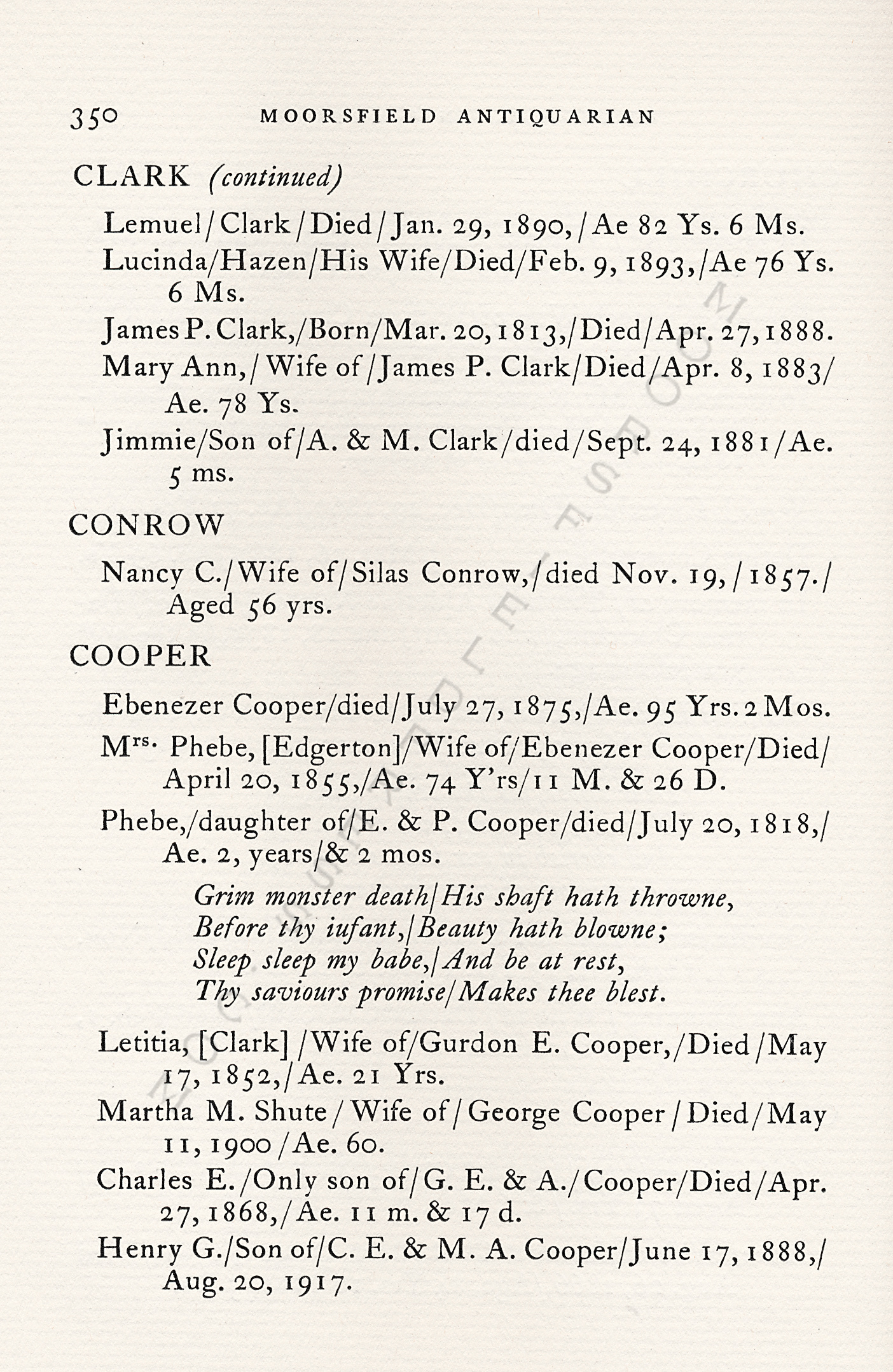 |
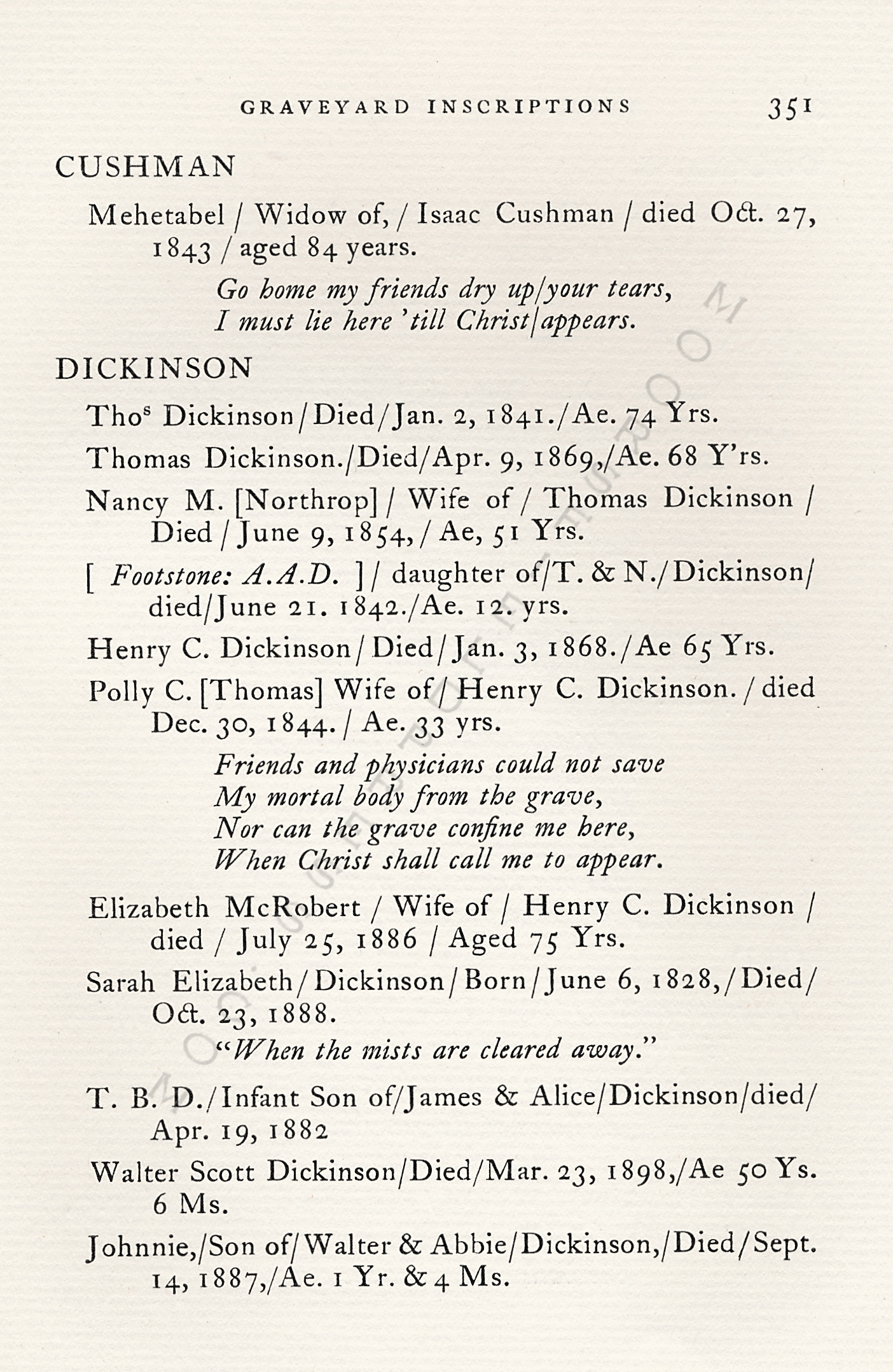 |
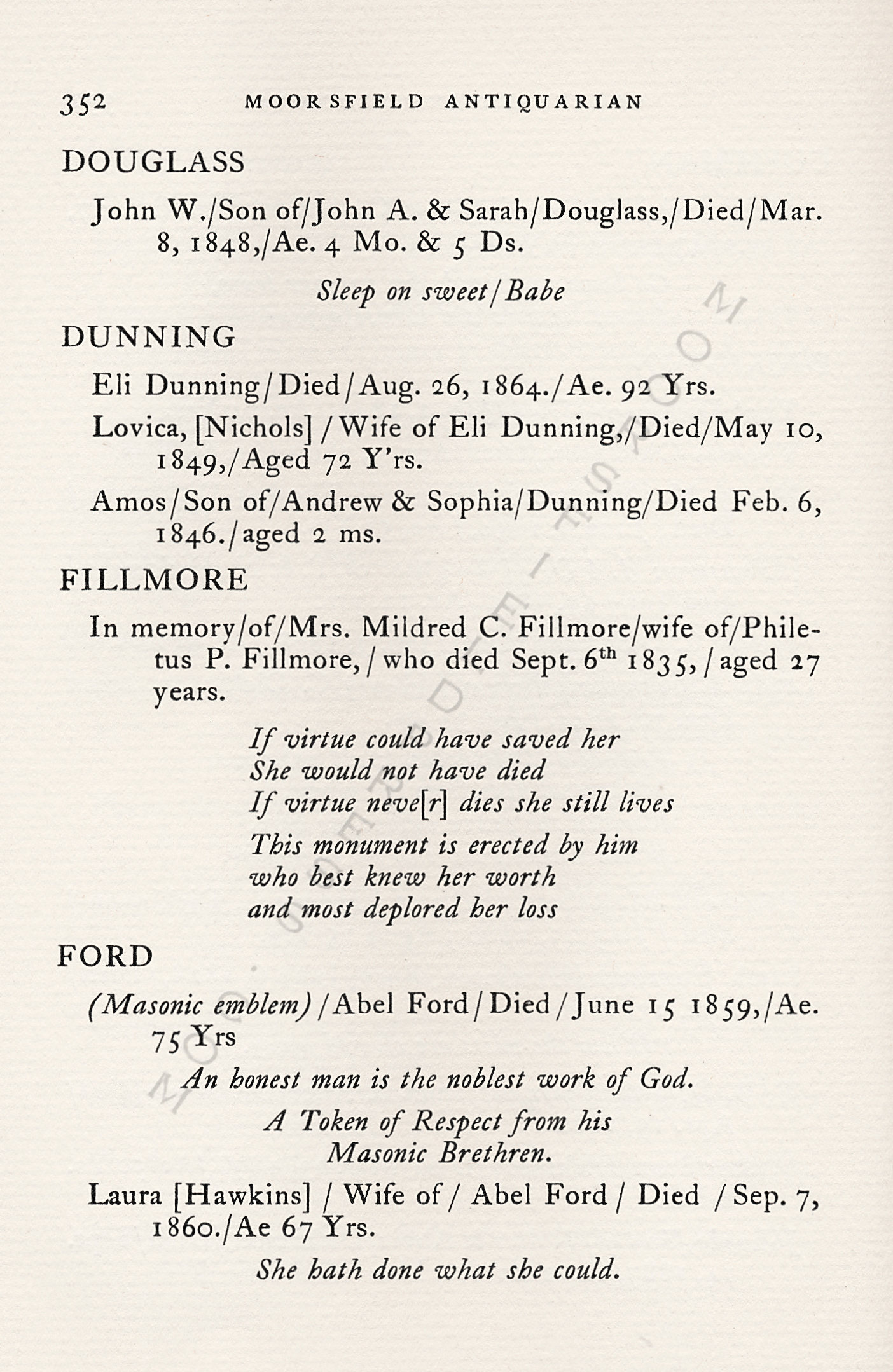 |
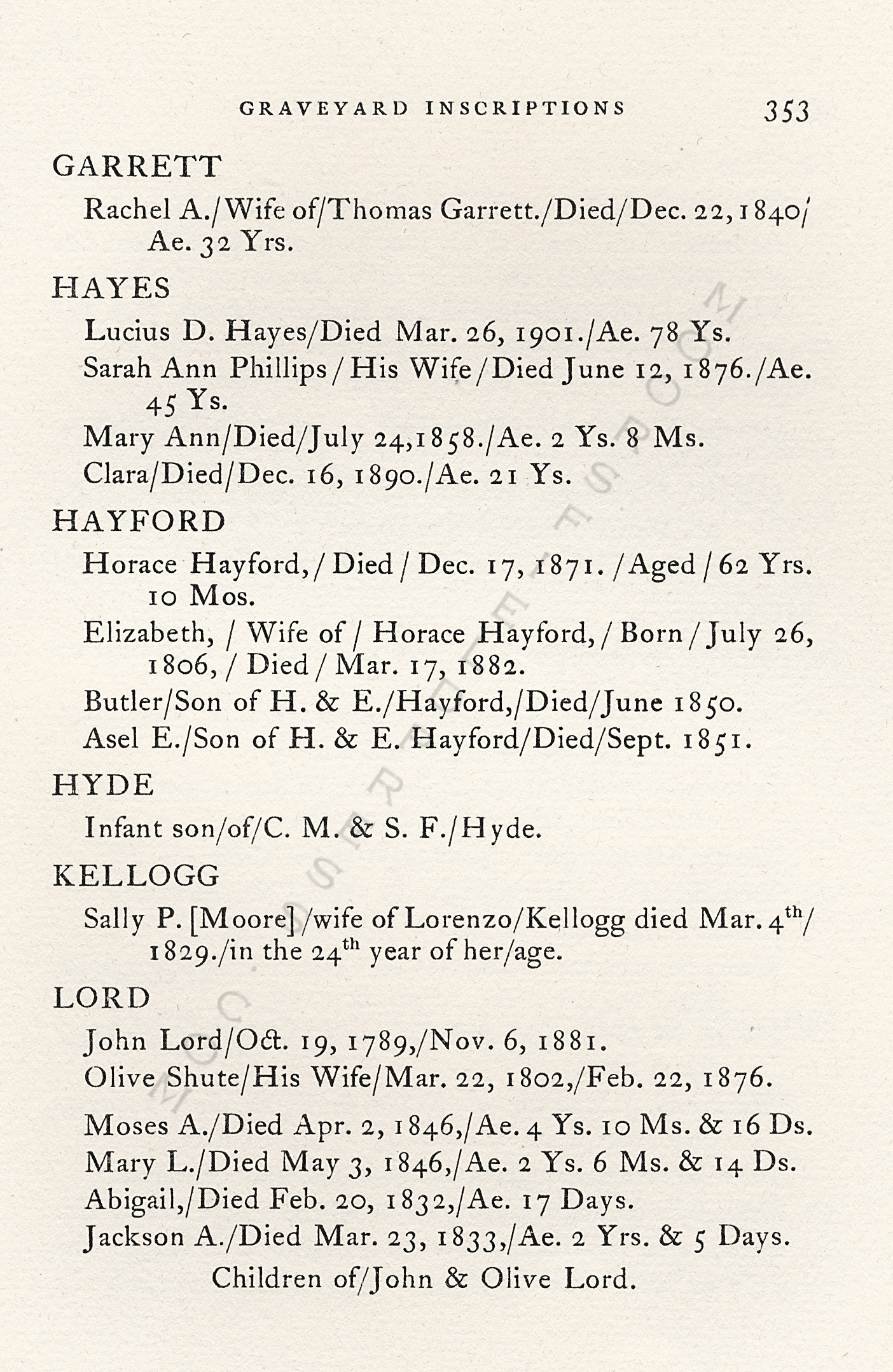 |
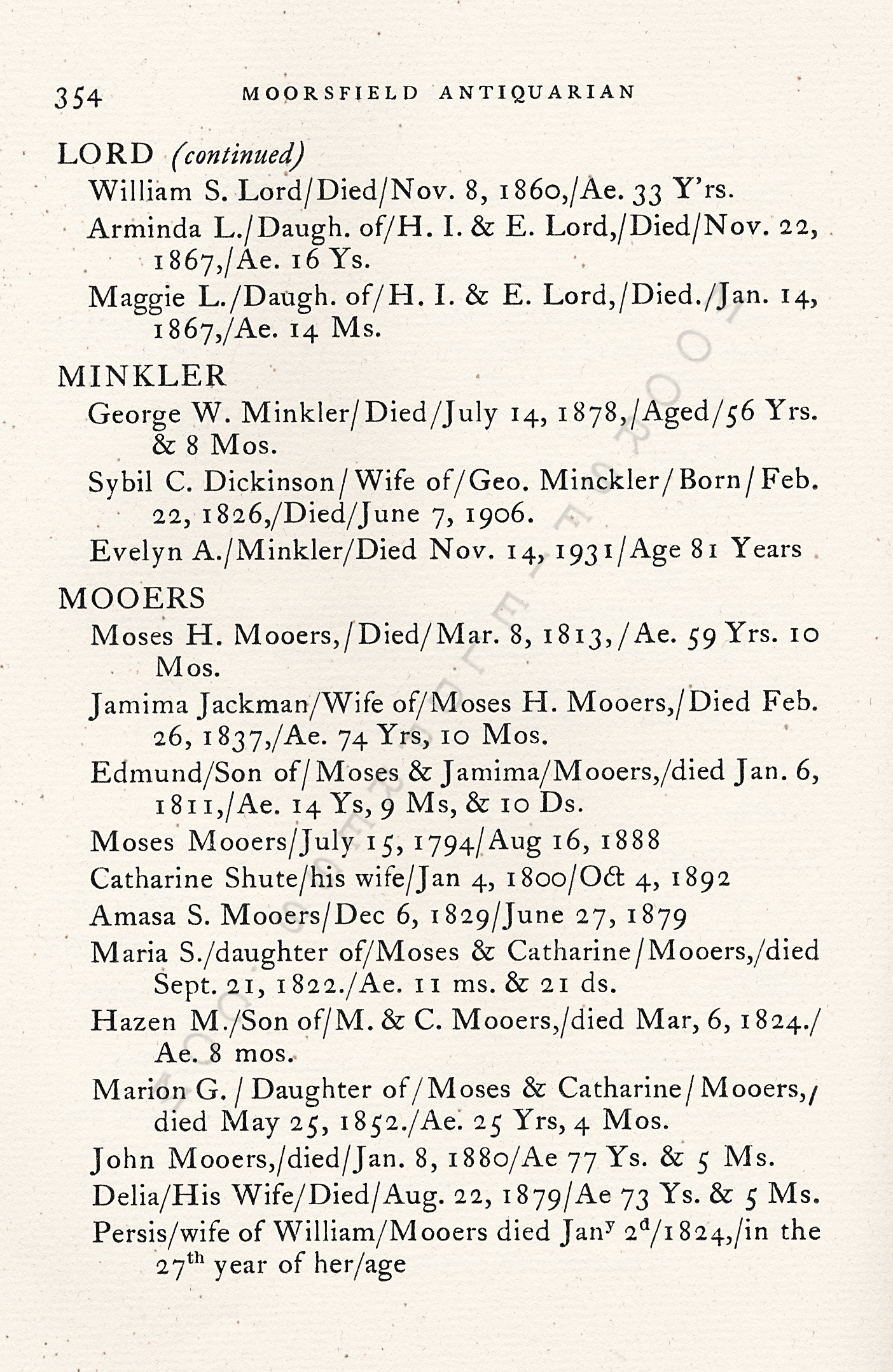 |
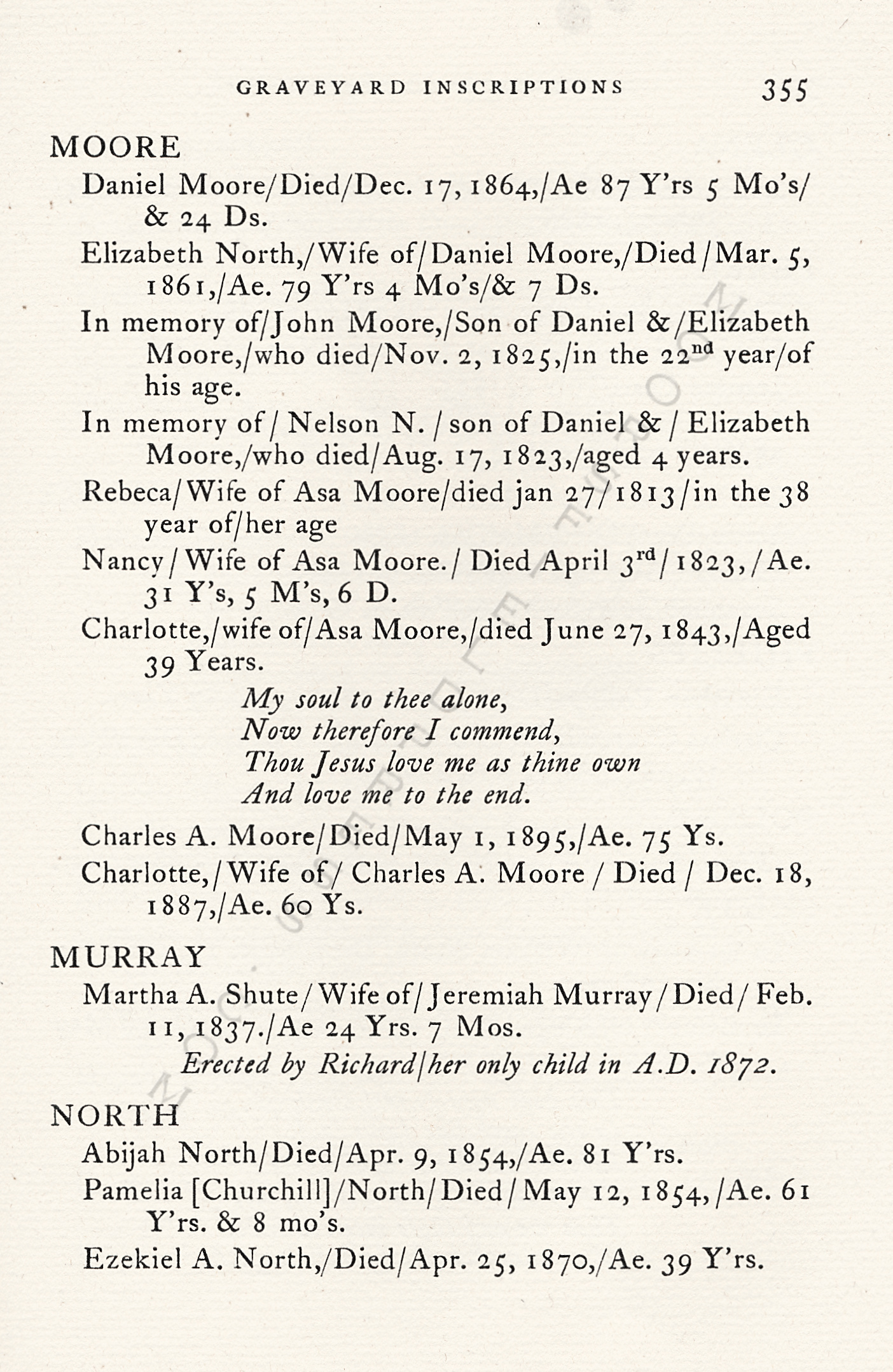 |
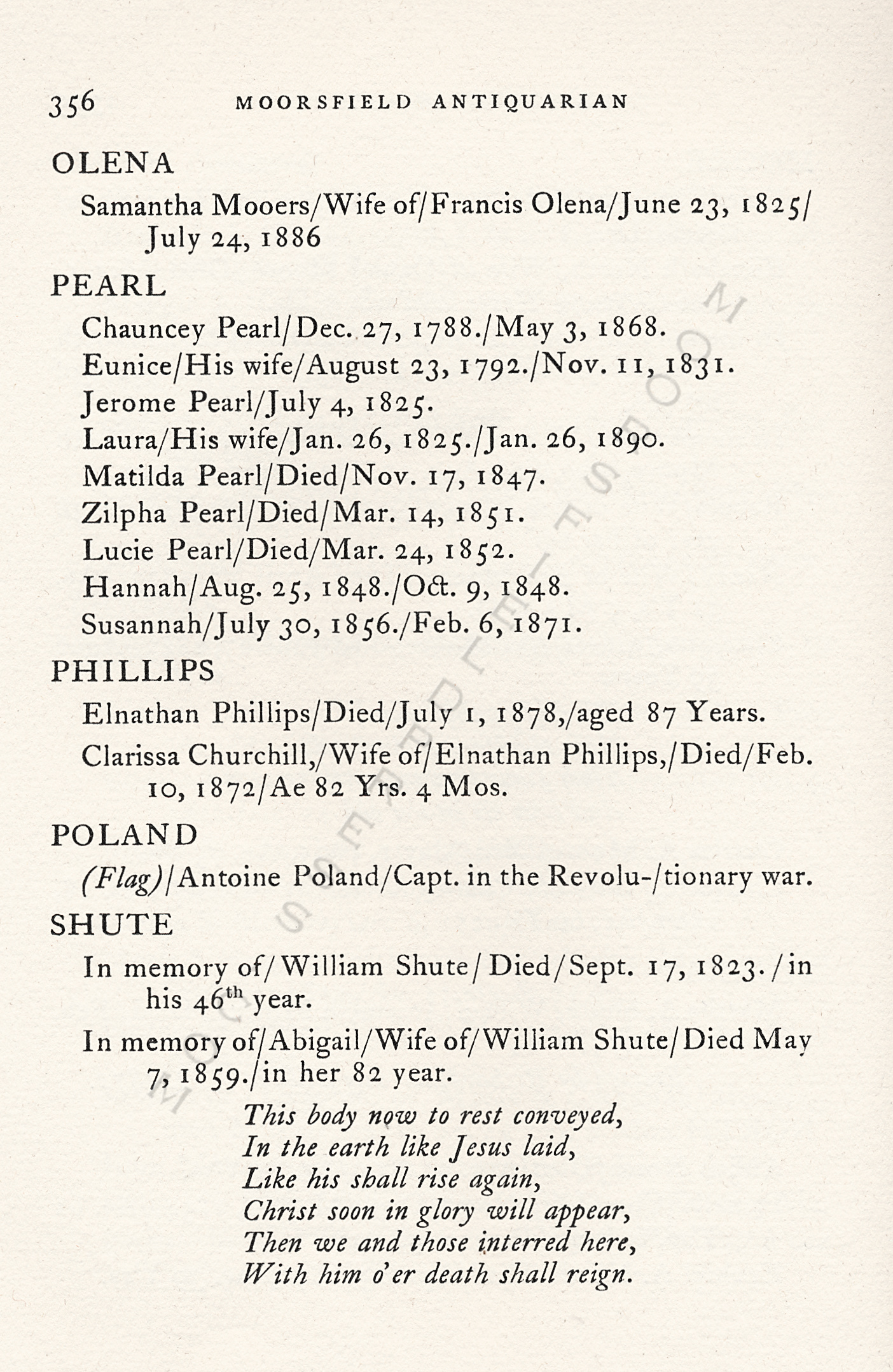 |
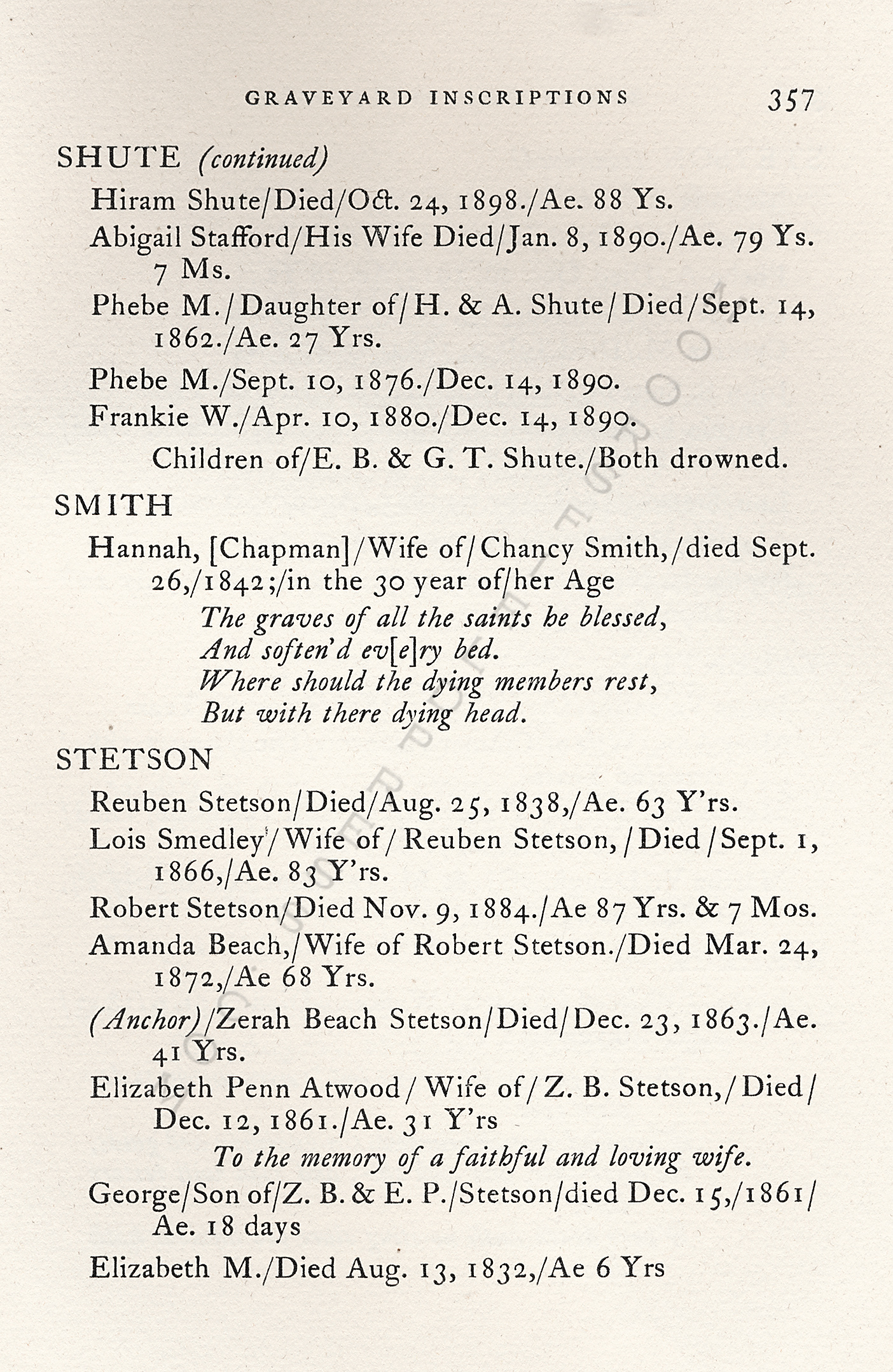 |
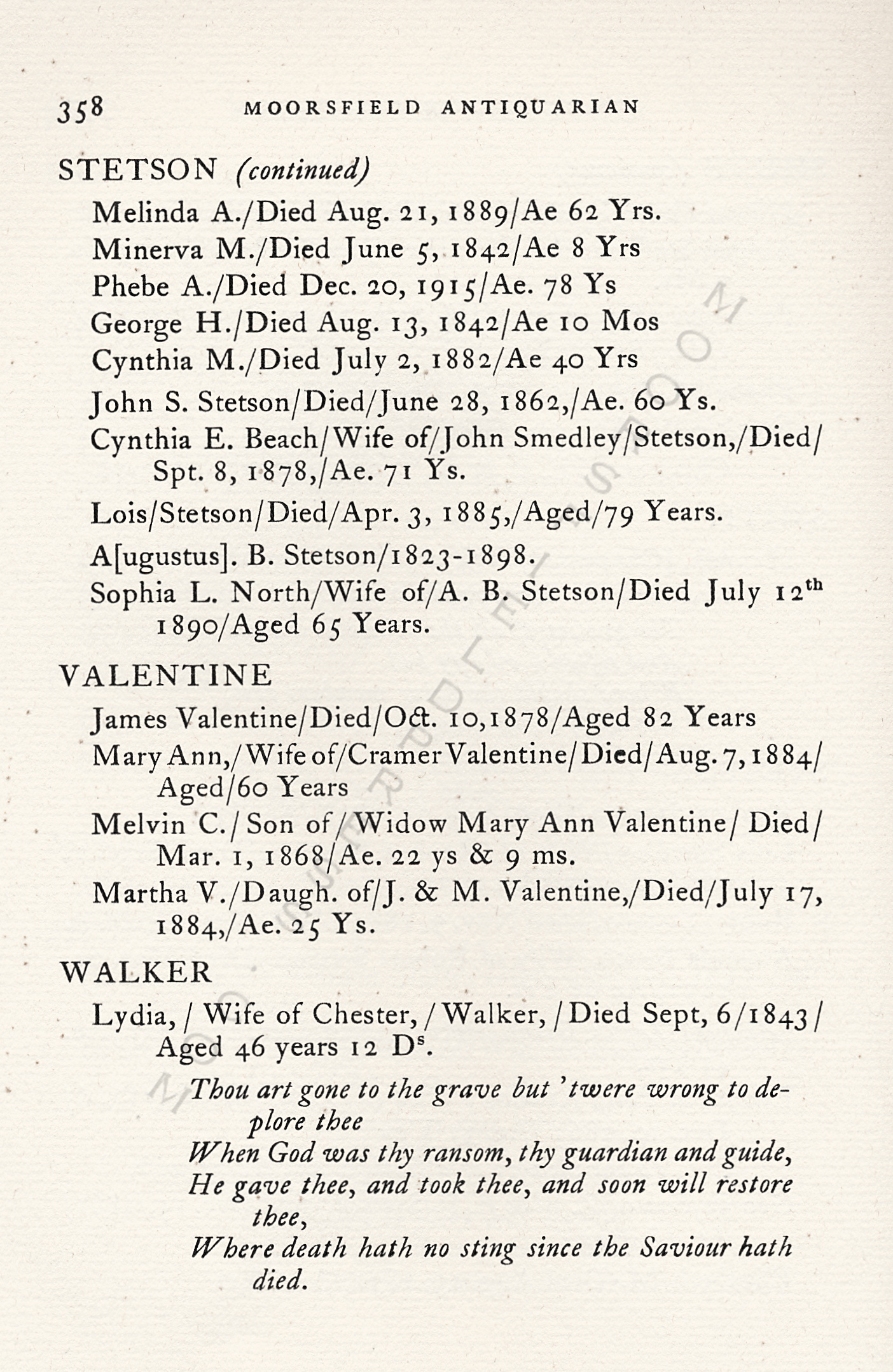 |
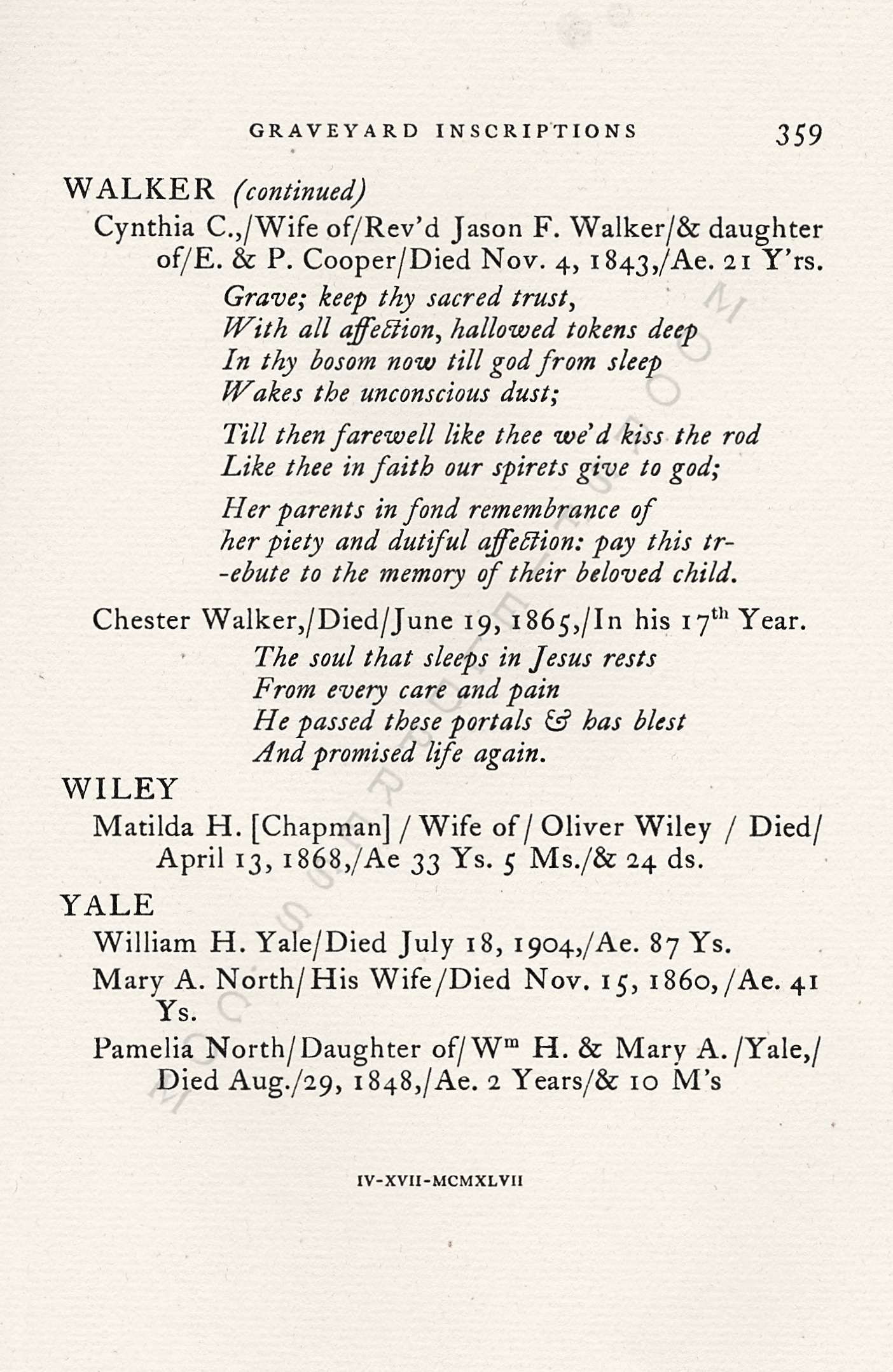 |
